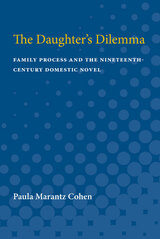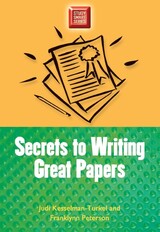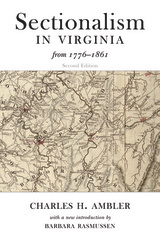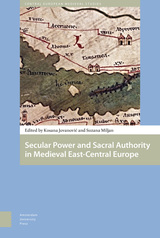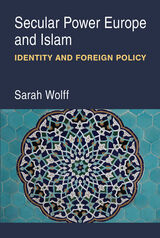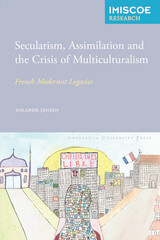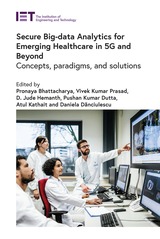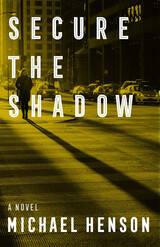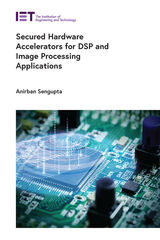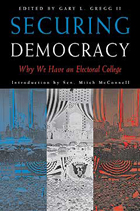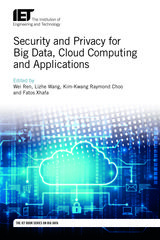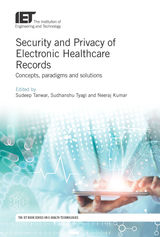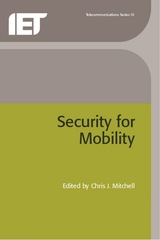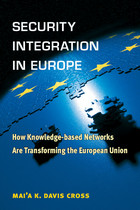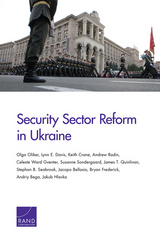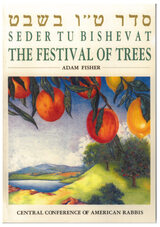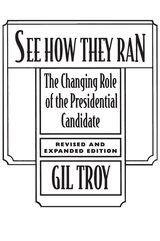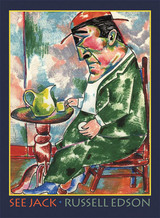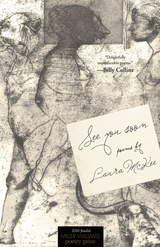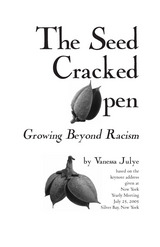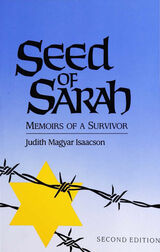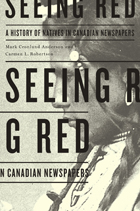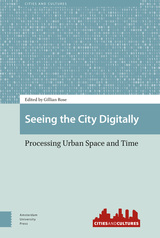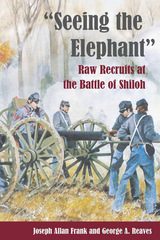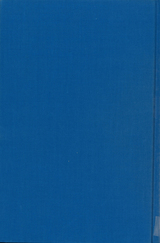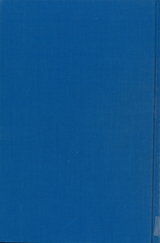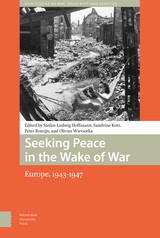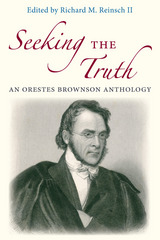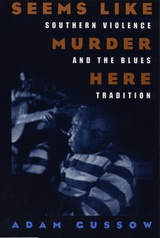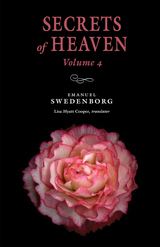 Secrets of Heaven Volume 4: The Portable New Century Edition
Emanuel Swedenborg
Swedenborg Foundation Publishers, 2022 Secrets of Heaven is Emanuel Swedenborg’s magnum opus, a fifteen-volume work that delves into the inner, spiritual meaning of the Bible. Starting from the first verse, Swedenborg goes through Genesis and Exodus verse by verse, sometimes word by word, uncovering the fascinating teachings behind the literal account. By doing careful comparison of passages and tracing individual images and motifs through the Bible, he demonstrates that it contains a profound, coherent, and unified inner meaning.
This fourth volume covers the inner meaning of Genesis 22–26, which on the surface recount God’s testing of Abraham and the generational shift that occurs as Sarah and Abraham die, Isaac and Rebekah marry, and Jacob and Esau are born. The intricacies of this narrative are interpreted as the processes Jesus went through inwardly as he united his human and divine natures and established a new religious culture on earth. Much of this volume also explores the concepts of correspondence and representation as underlying realities present in the natural and spiritual worlds and in the Bible.
This new translation, part of the New Century Edition series, makes Swedenborg’s insights into Scripture and his accounts of his spiritual experiences more accessible than ever before.
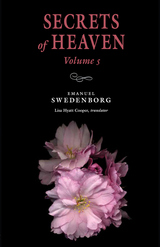 Secrets of Heaven Volume 5: The Portable New Century Edition
Emanuel Swedenborg
Swedenborg Foundation Publishers, 2023 Secrets of Heaven is Emanuel Swedenborg’s magnum opus, a fifteen-volume work that delves into the inner, spiritual meaning of the Bible. Starting from the first verse, Swedenborg goes through Genesis and Exodus verse by verse, sometimes word by word, uncovering the fascinating teachings behind the literal account. By doing careful comparison of passages and tracing individual images and motifs through the Bible, he demonstrates that it contains a profound, coherent, and unified inner meaning.
This fifth volume continues the exposition with an examination of Jacob’s story, as found in Genesis 27–30. Jacob’s flight to his uncle Laban’s house, where he initially labors for the right to marry, then weds Leah and Rachel, and eventually rises to great prosperity, parallels the stage of Jesus’ transformation in which his earthly self (represented by Jacob) had to climb from attachment to outer truth (Leah) to a love of inner truth (Rachel) so that his earthly self could become fully divine. Within each chapter, Swedenborg also addresses the decline of the Christian church and unfolds his foundational premise that heaven, as a whole and in detail, is in God’s image and can therefore be called the “universal human.”
This new translation, part of the New Century Edition series, makes Swedenborg’s insights into Scripture and his accounts of his spiritual experiences more accessible than ever before.
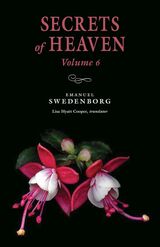 Secrets of Heaven Volume 6: The Portable New Century Edition
Emanuel Swedenborg
Swedenborg Foundation Publishers, 2023 The sixth volume of Swedenborg's monumental exploration of the Bible, its themes, and meaning.
Secrets of Heaven is Emanuel Swedenborg’s magnum opus, a fifteen-volume work that delves into the inner, spiritual meaning of the Bible. Starting from the first verse, Swedenborg goes through Genesis and Exodus verse by verse, sometimes word by word, uncovering the fascinating teachings behind the literal account. By engaging in a careful comparison of passages and tracing individual images and motifs through the Bible, he shows that it contains a profound, coherent, and unified inner meaning.
This sixth volume interprets the inner narrative of Genesis 31–35, in which Jacob leaves Laban’s house, wrestles with God, and reunites with Esau. These acts, Swedenborg argues, are each symbolic of the inner separations, struggles, and unifications that Jesus accomplished on his path to divinity. Swedenborg continues to explore two themes found in previous volumes: the Last Judgment as the ending of an old church and the beginning of a new church, and the correlation between human individuals and the “universal human.”
This new translation, part of the New Century Edition series, makes Swedenborg’s insights into Scripture and his accounts of his spiritual experiences more accessible than ever before.
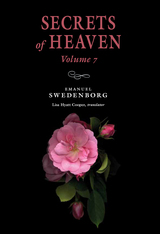 Secrets of Heaven Volume 7: The Portable New Century Edition
Emanuel Swedenborg
Swedenborg Foundation Publishers, 2024 The seventh volume of Swedenborg's monumental exploration of the Bible, its themes, and meaning.
Secrets of Heaven is Emanuel Swedenborg’s magnum opus, a fifteen-volume work that delves into the inner, spiritual meaning of the Bible. Starting from the first verse, Swedenborg goes through Genesis and Exodus verse by verse, sometimes word by word, uncovering the fascinating teachings behind the literal account. By engaging in a careful comparison of passages and tracing individual images and motifs through the Bible, he demonstrates that it contains a profound, coherent, and unified inner meaning.
In this seventh volume, covering Genesis 36–40, Joseph’s story begins. The literal narrative describes how after dreaming of greatness Joseph is sold into slavery by his jealous brothers and wrongfully imprisoned. The inner narrative, Swedenborg explains, describes the trials and opposition endured by the Lord’s divine humanity, which is represented by Joseph. In this volume Swedenborg also interprets a number of parables in Matthew, relating their meaning to the Lord’s Second Coming. His exploration of the correspondences of the various parts and functions of the body is also continued from the previous volume.
This new translation, part of the New Century Edition series, makes Swedenborg’s insights into Scripture and his accounts of his spiritual experiences more accessible than ever before.
 Secrets of Heaven Volume 8: The Portable New Century Edition
Emanuel Swedenborg
Swedenborg Foundation Publishers, 2023 The eighth volume in Swedenborg's monumental study of the Bible, its meaning, and themes.
Secrets of Heaven is Emanuel Swedenborg’s magnum opus, a fifteen-volume work that delves into the inner, spiritual meaning of the Bible. Starting from the first verse, Swedenborg goes through Genesis and Exodus verse by verse, sometimes word by word, uncovering the fascinating teachings behind the literal account. By engaging in a careful comparison of passages and tracing individual images and motifs through the Bible, he demonstrates that it contains a profound, coherent, and unified inner meaning.
In this eighth volume, covering Genesis 41–44, the explication of the deeper meaning behind Joseph’s story continues. Joseph’s rise to power in Egypt and the aid he gives his brothers during the famine are presented by Swedenborg as symbolizing the strengthening of Jesus’ inner self and the benefit it provided to his outer self during his process of transformation to divine humanity. Swedenborg also completes his survey of the correspondence of the human body with some attention to the correspondence of disease. He then begins a new theme in which he describes the influence that the spiritual world has on human beings through angels and spirits.
This new translation, part of the New Century Edition series, makes Swedenborg’s insights into Scripture and his accounts of his spiritual experiences more accessible than ever before.
 Secrets of Heaven Volume 9: The Portable New Century Edition
Emanuel Swedenborg
Swedenborg Foundation Publishers, 2024 Secrets of Heaven: Portable New Century Edition vol. 9 by Emanuel Swedenborg offers readers an invitation to uncover the hidden spiritual messages embedded within the final chapters of the Book of Genesis. As Swedenborg explains Genesis 45–50, he illuminates the inner meanings behind the reunion of Joseph and his family, the deaths of Jacob and Joseph, and how these events symbolize the path of glorification of Jesus and, by extension, the spiritual journey that each individual undertakes.
Each Secrets of Heaven volume can be read in sequence, or as a stand-alone book. In this volume, Swedenborg returns to themes central to understanding the spiritual world’s influence on humanity—how divine forces shape the human will and intellect, and how they operate within the soul and the outer and inner selves. His insights provide a window into the complex relationships between the spiritual and natural worlds, helping readers make sense of life’s greater purpose and the divine wisdom underlying Scripture.
This edition, translated with clarity and precision by Lisa Hyatt Cooper, brings these profound teachings to modern readers in an accessible format. Whether you are a long-time student of Swedenborg, a spiritual seeker looking to dive deeper into Christian mysticism, or someone drawn to the mysteries of Genesis and Exodus, this volume serves as a powerful guide on the journey toward inner spiritual meaning.
With its focus on making Emanuel Swedenborg’s writings accessible to contemporary readers, the Portable New Century Edition is both a trusted reference and a source of ongoing reflection. Scholars, ministers, and those identifying as "spiritual but not religious" will find Secrets of Heaven: Volume 9 to be an essential addition to their spiritual library, offering insights that enrich the soul and open the mind.
Secrets of Life with Brachial Plexus Palsy
Written by Denise Justice; Illustrated by Susan Eatmon; Edited by Holly Wagner
Michigan Publishing, 2020 In this book, Marie is just a normal little girl except that one of her arms is different!
Secrets of Life with Brachial Plexus Palsy is the story of a baby girl who grows up with dreams and ambitions like everybody else. Some of her dreams are to play like other children, to show others that there is nothing that she cannot do, and to pursue any career that she chooses when she grows up. Life with this condition can be challenging, and as the years pass, Marie uncovers secrets that allow her to overcome the stigma of her Brachial Plexus Palsy – secrets she would like to share with you…
Let Marie show you that living life with Brachial Plexus Palsy is an exciting journey!
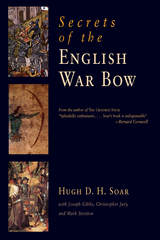 Secrets of the English War Bow
Hugh D. H. Soar
Westholme Publishing, 2010 A Complete Recreation of the Deadliest Medieval Arm
Dominating medieval battlefields for more than two centuries but requiring long and arduous practice to command, the English war bow and its battle shaft are the symbols of the rise of British power in Europe. Despite being crafted for hundreds of years and wielded by generations of archers, no example of the war bow—the military version of the longbow—exists, outside of a single broken limb. Now for the first time, expert craftsmen use all available evidence including applied archaeology to unlock the secrets of the English war bow. Historian Hugh D. H. Soar is joined by Mark Stretton, master blacksmith, and Joseph Gibbs, bowyer, in order to demonstrate how a war bow and its associated arrow heads and shafts may have been constructed and used. In addition to showing the complete manufacture of a bow from tree selection to stringing and how specialized arrowheads were forged and attached to shafts, Secrets of the English War Bowprovides information on the actual performance of the war bow, including the bow's effectiveness against various materials and, for the first time, its use against moving targets, since bows were often drawn against mounted soldiers. Armed with this new information, Soar provides an analysis of both successes and failures of the war bow in several important battles. Illustrated in color and black and white, Secrets of the English War Bowprovides an invaluable service for those interested in medieval military history, archery, and technology.
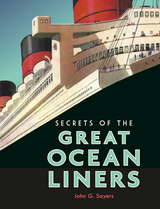 Secrets of the Great Ocean Liners
John G. Sayers
Bodleian Library Publishing, 2020 In the heyday of ocean travel—between the late nineteenth century and World War II—ocean liners were a home away from home. Passengers prepared for voyages that could last as long as three months, and shipping companies ensured their guests were as comfortable as possible, providing entertainment, dining, sleeping quarters, and smoking lounges to accommodate passengers of all ages and budgets. Secrets of the Great Ocean Liners leads the reader through each stage of ocean liner travel, from booking a ticket and choosing a cabin to shore excursions, on-board games, social events, and even romances. This book dives into a vast, unique collection of ephemera to reveal the scandals, glamour, challenges, and tragedies of ocean liner travel. Shipping companies produced glitzy brochures, sailing schedules, voyage logs, passenger lists, postcards, and menus, all of which help us to enjoy daily life on board. Diaries, letters, and journals written by passengers also reveal a host of fascinating insights into the experience of traveling by sea.
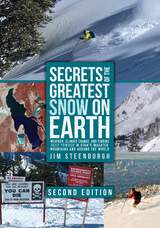 Secrets of the Greatest Snow on Earth, Second Edition: Weather, Climate Change, and Finding Deep Powder in Utah's Wasatch Mountains and Around the World
Jim Steenburgh
Utah State University Press, 2023 Utah has long claimed to have the greatest snow on Earth—the state itself has even trademarked the phrase. In Secrets of the Greatest Snow on Earth, Jim Steenburgh investigates Wasatch weather, exposing the myths, explaining the reality, and revealing how and why Utah’s powder lives up to its reputation. Steenburgh also examines ski and snowboard regions beyond Utah, providing a meteorological guide to mountain weather and snow climates around the world.
Chapters explore mountain weather, avalanches and snow safety, historical accounts of weather events and snow conditions, and the basics of climate and weather forecasting. In this second edition, Steenburgh explains what creates the best snow for skiing and snowboarding using accurate and accessible language and 150 color photographs and illustrations, making Secrets of the Greatest Snow on Earth a helpful tool for planning vacations and staying safe during mountain adventures.
This edition is updated with two new chapters covering microclimates and climate change in greater depth. Steenburgh addresses the declining snowpack and the future of snow across the western United States, as well as the declining snow and ice in several regions of the world—the European Alps in particular. Snowriders, weather enthusiasts, meteorologists, students of snow science, and anyone who dreams of deep powder and bluebird skies will want to get their gloves on this new edition of Secrets of the Greatest Snow on Earth. Praise for the first edition:
“Everything you always wanted to know about how snow forms and how to follow forecasts so you see
how much an”d where is in the book. It’s a must-have for any fan of snow, sure to get you excited about
winter, and give you a bevy of conversation topics for the chairlift ride.”
—Utah Adventure Journal
“For backcountry enthusiasts that find themselves infatuated with weather patterns, snow-water
equivalents, microclimates, and Utah, this book is a dream come true.”
—The Backcountry Skiing Blog
“Steenburgh shares a career’s worth of knowledge in this book. His love of both snow science and skiing
is obvious, and he adds humor and personality to the scientific discussion.”
—First Tracks!! Online Skiing Magazine
“When it comes to snow, the details—both small- and large-scale—do matter. If we all observed our
surroundings with as much curiosity and enthusiasm as Steenburgh, the world could be a much better-
tended place.”
—American Scientist
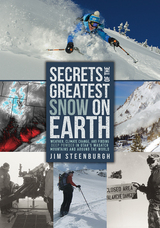 Secrets of the Greatest Snow on Earth: Weather, Climate Change, and Finding Deep Powder in Utah's Wasatch Mountains and around the World
Jim Steenburgh
Utah State University Press, 2014 Utah has long claimed to have the greatest snow on Earth—the state itself has even trademarked the phrase. In Secrets of the Greatest Snow on Earth, Jim Steenburgh investigates Wasatch weather, exposing the myths, explaining the reality, and revealing how and why Utah’s powder lives up to its reputation. Steenburgh also examines ski and snowboard regions beyond Utah, making this book a meteorological guide to mountain weather and snow climates around the world. Chapters explore mountain weather, avalanches and snow safety, historical accounts of weather events and snow conditions, and the basics of climate and weather forecasting. Steenburgh explains what creates the best snow for skiing and snowboarding in accurate and accessible language and illustrates his points with 150 color photographs, making Secrets of the Greatest Snow on Earth a helpful tool for planning vacations and staying safe during mountain adventures. Snowriders, weather enthusiasts, meteorologists, students of snow science, and anyone who dreams of deep powder and bluebird skies will want to get their gloves on Secrets of the Greatest Snow on Earth. Watch Book Trailer!(Special thanks to Ski Utah)
 The Secrets of the Hopewell Box: Stolen Elections, Southern Politics, and a City's Coming of Age
James D. Squires
Vanderbilt University Press, 1996 "A sometimes eye-goggling history of political corruption in one corner of the postwar South. . . . [Squires'] grandfather was a sheriff's deputy who carried a gun and a clenched fist, a man . . . [who] was also, Squires relates, one of the muscle men behind a vicious cabal of power brokers headed by one Boss Crump. . . . That machine involved, for a time, much of Nashville's leading citizenry. It engineered elections, stole votes, organized lynch mobs, ran an illegal gambling empire, and in the 1950s, when it appeared that the traditional Democratic Party was going soft on civil rights, brokered the advent of Republicanism in one corner of the South."
—Kirkus Reviews
"His richly textured narrative charts the Nashville machine's rupture with the state's top political boss, Edward Crump of Memphis, and traces the sweeping reforms that shattered rural white control of the state legislature. Squires dramatically reenacts the downfall of Nashville lawyer Tommy Osborn, convicted of jury tampering in 1964 after defending Teamsters boss Jimmy Hoffa. He follows Nashville's transformation into a crucible of the civil rights movement in this stirring chronicle of the South's coming-of-age."
—Publishers Weekly
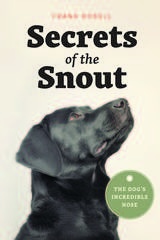 Secrets of the Snout: The Dog’s Incredible Nose
Frank Rosell
University of Chicago Press, 2018 Dogs and humans have worked side by side for thousands of years, and over the millennia we’ve come to depend upon our pooches as hunters, protectors, and faithful companions. But when it comes to the extraordinary quality of man’s best friend which we rely on most, the winner is clear—by a nose. In Secrets of the Snout, Frank Rosell blends storytelling and science as he sniffs out the myriad ways in which dogs have been trained to employe their incredible olfactory skills, from sussing out cancer and narcotics to locating endangered and invasive species, as well as missing persons (and golf balls).
With 300 million receptors to our mere 5 million, a dog’s nose is estimated to be between 100,000 and 100 million times more sensitive than a human’s. No wonder, then, that our nasally inferior species has sought to unleash the prodigious power of canine shnozzes. Rosell here takes us for a walk with a pack of superhero sniffers including Tutta, a dog with a fine nose for fine wine; the pet-finder pooch AJ; search-and-rescue dog Barry; the hunting dog Balder; the police dogs Rasko and Trixxi; the warfare dog Lisa; the cancer detection dog Jack; Tucker, who scents floating killer whale feces; and even Elvis, who can smell when you’re ovulating. With each dog, Rosell turns his nose to the evolution of the unique olfactory systems involved, which odors dogs detect, and how they do it.
A celebration of how the canine sense for scents works—and works for us—Secrets of the Snout will have dog lovers, trainers, and researchers alike all howling with delight. Exploring this most pointed of canine wonders, Rosell reveals the often surprising ways in which dogs are bettering our world, one nose at a time.
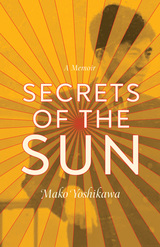 Secrets of the Sun: A Memoir
Mako Yoshikawa
Ohio State University Press, 2024 Mako Yoshikawa’s father, Shoichi, was a man of contradictions. He grew up fabulously wealthy in prewar Japan but spent his final years living in squalor; he was a proper Japanese man who craved society’s approval yet cross-dressed; he was a brilliant Princeton University physicist and renowned nuclear fusion researcher, yet his career withered as his severe bipolar disorder tightened its grip. And despite his generosity and charisma, he was often violent and cruel toward those closest to him. Yoshikawa adored him, feared him, and eventually cut him out of her life, but after he died, she was driven to try to understand this extraordinarily complex man. In Secrets of the Sun, her search takes her through everything from the Asian American experience of racism to her father’s dedication to fusion energy research, from mental illness to the treatment of women in Japan, and more. Yoshikawa gradually discovers a life filled with secrets, searching until someone from her father’s past at last provides the missing piece in her knowledge: the story of his childhood. Secrets of the Sun is about a daughter’s mission to uncover her father’s secrets and to find closure in the shadow of genius, mental illness, and violence.
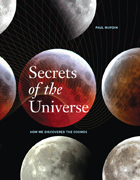 Secrets of the Universe: How We Discovered the Cosmos
Paul Murdin
University of Chicago Press, 2009 Discoveries in astronomy challenge our fundamental ideas about the universe. Where the astronomers of antiquity once spoke of fixed stars, we now speak of whirling galaxies and giant supernovae. Where we once thought Earth was the center of the universe, we now see it as a small planet among millions of other planetary systems, any number of which could also hold life. These dramatic shifts in our perspective hinge on thousands of individual discoveries: moments when it became clear to someone that some part of the universe—whether a planet or a supermassive black hole—was not as it once seemed. Secrets of the Universe invites us to participate in these moments of revelation and wonder as scientists first experienced them. Renowned astronomer Paul Murdin here provides an ambitious and exciting overview of astronomy, conveying for newcomers and aficionados alike the most important discoveries of this science and introducing the many people who made them. Lavishly illustrated with more than 400 color images, the book outlines in seventy episodes what humankind has learned about the cosmos—and what scientists around the world are poised to learn in the coming decades. Arranged by types of discovery, it also provides an overarching narrative throughout that explains how the earliest ideas of the cosmos evolved into the cutting-edge astronomy we know today. Along the way, Murdin never forgets that science is a human endeavor, and that every discovery was the result of inspiration, hard work, or luck—usually all three. The first section of Secrets explores discoveries made before the advent of the telescope, from stars and constellations to the position of our own sun. The second considers discoveries made within our own solar system, from the phases of Venus and the moons of Jupiter to the comets and asteroids at its distant frontier. The next section delves into discoveries of the dynamic universe, like gravitation, relativity, pulsars, and black holes. A fourth examines discoveries made within our own galaxy, from interstellar nebulae and supernovae to Cepheid variable stars and extrasolar planets. Next Murdin turns to discoveries made within the deepest recesses of the universe, like quasars, supermassive black holes, and gamma ray bursters. In the end, Murdin unveils where astronomy still teeters on the edge of discovery, considering dark matter and alien life.
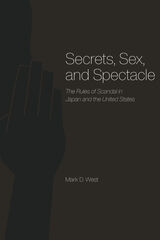 Secrets, Sex, and Spectacle: The Rules of Scandal in Japan and the United States
Mark D. West
University of Chicago Press, 2006 A leader of a global superpower is betrayed by his mistress, who makes public the sordid details of their secret affair. His wife stands by as he denies the charges. Debates over definitions of moral leadership ensue. Sound familiar? If you guessed Clinton and Lewinsky, try again. This incident involved former Japanese prime minister Sosuke Uno and a geisha. In Secrets, Sex, and Spectacle, Mark D. West organizes the seemingly random worlds of Japanese and American scandal—from corporate fraud to baseball cheaters, political corruption to celebrity sexcapades—to explore well-ingrained similarities and contrasts in law and society. In Japan and the United States, legal and organizational rules tell us what kind of behavior is considered scandalous. When Japanese and American scandal stories differ, those rules—rules that define what’s public and what’s private, rules that protect injuries to dignity and honor, and rules about sex, to name a few—often help explain the differences. In the cases of Clinton and Uno, the rules help explain why the media didn’t cover Uno’s affair, why Uno’s wife apologized on her husband’s behalf, and why Uno—and not Clinton—resigned. Secrets, Sex, and Spectacle offers a novel approach to viewing the phenomenon of scandal—one that will be applauded by anyone who has obsessed over (or ridiculed) these public episodes.
Secrets to Writing Great Papers
Judi Kesselman-Turkel and Franklynn Peterson
University of Wisconsin Press, 2003 Secrets to Writing Great Papers illustrates how to work with ideas—develop them, hone them, and transform them into words. It provides techniques and exercises for brainstorming, choosing the right approach, working with an unknown or boring assigned topic, overcoming writer’s block, and selecting the best point of view.
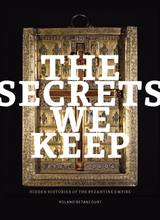 The Secrets We Keep: Hidden Histories of the Byzantine Empire
Roland Betancourt
J. Paul Getty Trust, The, 2024 An intriguing look at secrecy during the Byzantine Empire and the role of the art historian in seeking truth.
Secrecy has played a role throughout human history and continues to capture the popular imagination. Some of the most seductive aspects of the Byzantine Empire—such as the relics of the imperial palace and the military uses of Greek fire—have been shrouded in mystery for centuries. This book provides a brief history of secrecy in Byzantium and examines the role of the art historian in uncovering the truth, demonstrating how visual evidence can not only reveal new findings but also purposely conceal answers.
Art historians face many challenges in their search for hidden knowledge, including accessing accounts preserved in fragmentary glimpses and reconciling how practices of speculation and reconstruction result in different, and sometimes contradictory, understandings. With pressing urgency, this book asks scholars to consider their role in articulating the stories of marginalized people, particularly for queer and trans history.
At the core of these investigations is the quest to discover how clandestine knowledge was transmitted and how relationships were strengthened by collective secret keeping, as well as how concealment is used as a strategy for exercising power. With insights into the religious, imperial, military, and cultural uses of secrecy, this book offers an intriguing look at the ways secrecy manifested itself during the Byzantine Empire and the implications it has for the issues we face today.
 Sect Ideologies and Social Status
Gary Schwartz
University of Chicago Press, 1970 In this penetrating study of urban religion, Gary Schwartz examines the nature of the relationship between religious belief and the social order. He shows how a person's experience in the social hierarchy shapes his response to competing religious ideologies and, in turn, how commitment to a particular sect ideology colors his attitude toward mundane affairs.
The author studied and compared a Pentecostal group and a Seventh-day Adventist group in preparation for this work. The question which stimulated the investigation can be stated as a paradox. In the Adventist case, why should persons who firmly believe that God is soon to destroy the world work so diligently and against formidable odds to improve their own secular fortunes? In the Pentecostal case, why should persons who believe that God is available for direct aid in every human contingency not use this power for their own advancement?
In theorizing about the relationship between an individual's position in the socioeconomic system and his sect affiliation, Mr. Schwartz asserts that the specifically ideological component of a creed resides in the ways in which believers conceptualize the meaning of secular problems.
The study as a whole attempts to reveal what makes a special set of beliefs attractive to a person grappling with certain secular exigencies, and how these beliefs affect his view of secular matters. It develops a model of a religious ideology applicable to any study of the relationship between cultural symbols and social structure.
SECTIONALISM IN VIRGINIA FROM 1776 TO 1861
Charles H. Ambler with a new introduction by Barbara Rasmussen
West Virginia University Press, 2008 This 1910 study of sectionalism in Virginia illustrates how the east and west of Virginia were destined to separate into two states. Barbara Rasmussen, professor of Public History and Director of Cultural Resource Management at West Virginia University writes a new introduction to Sectionalism in Virginia, setting Ambler’s classic grand achievement into the context of its production by creating an historical process for studying West Virginia history.
 Sectors of Mutual Benefit in U.S.-Soviet Relations
Nish Jamgotch, Jr., ed.
Duke University Press, 1985 A distinguished panel of analysts examines particular areas of U.S.-Soviet cooperation: crisis communications , trade, science, agriculture, environment protection, space and medicine. The authors analyze agreements that the United States and the Soviet Union have revolved in their mutual interest, agreements that all too often are overlooked in an atmosphere clouded by hostility and mutual distrust. What, they ask, has been the history of these agreements? Have they succeeded or failed? How might they best be sustained and enlarged? Without minimizing the enormous dangers of ongoing strategic military competition, the contributors attempt to determine which sectors of U.S.-Soviet relations have yielded the most significant mutual benefits. They raise questions about where U.S. policy has gone wrong, where it has been effective, and how safe we are in forecasting the continuation of those cooperative relationships.
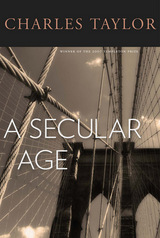 A Secular Age
Charles Taylor
Harvard University Press, 2007 A New York Times Notable Book of the Year
A Times Literary Supplement Book of the Year
A Globe and Mail Best Book of the Year
A Publishers Weekly Best Book of the Year
A Tablet Best Book of the Year
Winner of a Christianity Today Book Award
“One finds big nuggets of insight, useful to almost anybody with an interest in the progress of human society.” —The Economist
What does it mean to say that we live in a secular age? Almost everyone would agree that we—in the West, at least—largely do. And clearly the place of religion in our societies has changed profoundly in the last few centuries. In what will be a defining book for our time, Charles Taylor takes up the question of what these changes mean—of what, precisely, happens when a society in which it is virtually impossible not to believe in God becomes one in which faith, even for the staunchest believer, is only one human possibility among others.
Taylor, long one of our most insightful thinkers on such questions, offers a historical perspective. He examines the development in “Western Christendom” of those aspects of modernity which we call secular. What he describes is in fact not a single, continuous transformation, but a series of new departures, in which earlier forms of religious life have been dissolved or destabilized and new ones have been created. As we see here, today’s secular world is characterized not by an absence of religion—although in some societies religious belief and practice have markedly declined—but rather by the continuing multiplication of new options, religious, spiritual, and anti-religious, which individuals and groups seize on in order to make sense of their lives and give shape to their spiritual aspirations.
What this means for the world—including the new forms of collective religious life it encourages, with their tendency to a mass mobilization that breeds violence—is what Charles Taylor grapples with, in a book as timely as it is timeless.
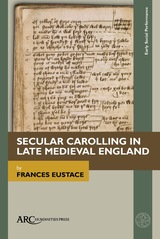 Secular Carolling in Late Medieval England
Frances Eustace
Arc Humanities Press, 2022
This study shows the importance of carolling in the celebrations and festivities of medieval Britain and demonstrates its longevity from the eleventh century to the sixteenth. It illustrates the flexibility of the English carole form for adaptation to include content in high and low registers and its suitability for use on all occasions and by different communal peer groups. Although the vast majority of extant texts in carol form from the late medieval period are religious in subject content, secular carolling was far more prevalent than the textual record implies. The dance-song elements of the medieval carole were so strongly woven into the vernacular cultural fabric of the British Isles that their threads can be traced through the folk songs and dances of subsequent centuries. This study contextualizes the written evidence and re-integrates the various components of the activity in order to illuminate our understanding of the universally popular medieval, participatory, pastime of carolling.
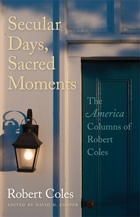 Secular Days, Sacred Moments: The America Columns of Robert Coles
Robert Coles
Michigan State University Press, 2013 No writer or public intellectual of our era has been as sensitive to the role of faith in the lives of ordinary Americans as Robert Coles. Though not religious in the conventional sense, Coles is unparalleled in his astute understanding and respect for the relationship between secular life and sacredness, which cuts across his large body of work. Drawing inspiration from figures like Dietrich Bonhoeffer, Dorothy Day, and Simone Weil, Coles’s extensive writings explore the tug of war between faith and doubt. As Coles himself admits, the “back-and-forthness between faith and doubt is the story of my life.” These thirty-one thought-provoking essays are drawn from Coles’s weekly column in the Catholic publication America. In them, he turns his inquisitive lens on a range of subjects and issues, from writers and painters to his recent reading and film viewing, contemporary events and lingering controversies, recollections of past and present mentors, events of his own daily life, and ordinary encounters with students, patients, neighbors, and friends. Addressing moral questions openly and honestly with a rare combination of rectitude and authorial modesty, these essays position Coles as a preeminent, durable, and trusted voice in the continuing national conversation over religion, civic life, and moral purpose.
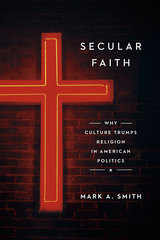 Secular Faith: How Culture Has Trumped Religion in American Politics
Mark A. Smith
University of Chicago Press, 2015 When Pope Francis recently answered “Who am I to judge?” when asked about homosexuality, he ushered in a new era for the Catholic church. A decade ago, it would have been unthinkable for a pope to express tolerance for homosexuality. Yet shifts of this kind are actually common in the history of Christian groups. Within the United States, Christian leaders have regularly revised their teachings to match the beliefs and opinions gaining support among their members and larger society.
Mark A. Smith provocatively argues that religion is not nearly the unchanging conservative influence in American politics that we have come to think it is. In fact, in the long run, religion is best understood as responding to changing political and cultural values rather than shaping them. Smith makes his case by charting five contentious issues in America’s history: slavery, divorce, homosexuality, abortion, and women’s rights. For each, he shows how the political views of even the most conservative Christians evolved in the same direction as the rest of society—perhaps not as swiftly, but always on the same arc. During periods of cultural transition, Christian leaders do resist prevailing values and behaviors, but those same leaders inevitably acquiesce—often by reinterpreting the Bible—if their positions become no longer tenable. Secular ideas and influences thereby shape the ways Christians read and interpret their scriptures.
So powerful are the cultural and societal norms surrounding us that Christians in America today hold more in common morally and politically with their atheist neighbors than with the Christians of earlier centuries. In fact, the strongest predictors of people’s moral beliefs are not their religious commitments or lack thereof but rather when and where they were born. A thoroughly researched and ultimately hopeful book on the prospects for political harmony, Secular Faith demonstrates how, over the long run, boundaries of secular and religious cultures converge.
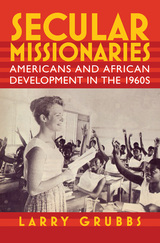 Secular Missionaries: Americans and African Development in the 1960s
Larry Grubbs
University of Massachusetts Press, 2010 In 1961, as President John F. Kennedy proclaimed the beginning of a "Decade of Development," the United States embarked on its first coherent "Africa" policy. Guided by the precepts of modernization theory, American policymakers, diplomats, academics, and Peace Corps volunteers were dispatched to promote economic growth and nation-building among the newly independent countries of sub-Saharan Africa. At the outset, Larry Grubbs shows, many of these" secular missionaries" were no less sanguine about their prospects for success than were their Christian predecessors a century earlier. But before long their optimism gave way to disillusionment, as rosy forecasts of sustained development collided with African political realities and colonial economies based on single-commodity exports subject to global price fluctuations. In this book, Grubbs presents a cultural history of this ill-fated American campaign to modernize Africa during its first decade of independence. Drawing on government documents and contemporary press accounts as well as an extensive body of scholarship on U.S.-Africa relations, he exposes the contradictions at the core of a self-serving idealism that promised to "win" the continent of Africa for the West in the context of the Cold War. While many Americans working in Africa considered themselves opponents of ethnocentrism, the modernization goals they served carried an ingrained, if unacknowledged, cultural and ideological sense of superiority and faith in American exceptionalism. Similarly, persistent myths about African backwardness and primitiveness continued to afflict U.S. policy, despite official pronouncements of confidence in the transformative power of Western expertise and can-do pragmatism in bringing African societies into the modern world. If the assumptions underlying U.S. policy toward Africa during the 1960s were simply relics of outmoded Cold War orthodoxies, that would be one thing. Unfortunately, Grubbs concludes, many of the same ideas imbue contemporary discussions of the ongoing "crisis" in Africa, from the campaigns to "Save Darfur" and stop the spread of AIDS to efforts to eliminate "blood diamonds" and forgive African debts.
 Secular Morality and International Security: American and British Decisions about War
Maria Fanis
University of Michigan Press, 2011 “[Fanis] demonstrates an impressive ability to travel nimbly between abstract theoretical concepts and a messy reality. In each one of the case study chapters, her analysis is rich, thoughtful, and imaginative.”
—Ido Oren, University of Florida Combining insights from cultural studies, gender studies, and social history, Maria Fanis shows the critical importance of national identity in decisions about war and peace. She challenges conventional approaches by demonstrating that domestic ethical codes influence perceptions of threat from abroad. With an in-depth study of U.S.-British relations in the first half of the nineteenth century, and with an application to the recent War in Iraq, she ties changes in U.S. and British national interest to shifts in these nations’ domestic codes of morality. Fanis’s findings have important implications for contemporary international relations theory. Apart from its relevance to current events, her work also makes a contribution to the literatures on foreign policy—specifically American and British foreign policies—and the causes of war.
Secular Power and Sacral Authority in Medieval East-Central Europe
Edited by Kosana Jovanovic and Suzana Miljan
Amsterdam University Press, 2018 This book brings together a team of scholars representing a broad range of interests and new approaches in medieval studies to explore the interactions of secular power and sacral authority in central and southeastern Europe in the period. Contributors present new research on the region's political and legal history, nobility and government institutions, war and diplomacy, literature and literacy, sacred and secular art, archaeological research, heritage studies, and much more.
Secular Power Europe and Islam: Identity and Foreign Policy
Sarah Wolff
University of Michigan Press, 2021 Secular Power Europe and Islam argues that secularism is not the central principle of international relations but should be considered as one belief system that influences international politics. Through an exploration of Europe’s secular identity, an identity that is seen erroneously as normative, author Sarah Wolff shows how Islam confronts the EU’s existential anxieties about its security and its secular identity. Islam disrupts Eurocentric assumptions about democracy and revolution and human rights. Through three case studies, Wolff encourages the reader to unpack secularism as a bedrock principle of IR and diplomacy. This book argues that the EU’s interest and diplomacy activities in relation to religion, and to Islam specifically, is shaped by the insistence on a European secular identity, which should be reconsidered in areas of religion and foreign policy.
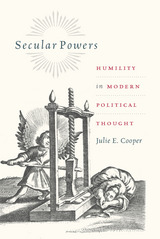 Secular Powers: Humility in Modern Political Thought
Julie E. Cooper
University of Chicago Press, 2013 Secularism is usually thought to contain the project of self-deification, in which humans attack God’s authority in order to take his place, freed from all constraints. Julie E. Cooper overturns this conception through an incisive analysis of the early modern justifications for secular politics. While she agrees that secularism is a means of empowerment, she argues that we have misunderstood the sources of secular empowerment and the kinds of strength to which it aspires.
Contemporary understandings of secularism, Cooper contends, have been shaped by a limited understanding of it as a shift from vulnerability to power. But the works of the foundational thinkers of secularism tell a different story. Analyzing the writings of Hobbes, Spinoza, and Rousseau at the moment of secularity’s inception, she shows that all three understood that acknowledging one’s limitations was a condition of successful self-rule. And while all three invited humans to collectively build and sustain a political world, their invitations did not amount to self-deification. Cooper establishes that secular politics as originally conceived does not require a choice between power and vulnerability. Rather, it challenges us—today as then—to reconcile them both as essential components of our humanity.
 Secular Revelations: The Constitution of the United States and Classic American Literature
Mitchell Meltzer
Harvard University Press, 2005 The United States Constitution, battleground of a politically bifurcated nation, and sponsor of that nation's now threatened cultural unity, is a quintessentially political document. Americans' representatives swear loyalty to it, and her soldiers die for it. Yet no one has ever seriously considered the formative influence this document, so central a force for all Americans, has had on American cultural life. Now, in this ambitious book, Mitchell Meltzer has for the first time demonstrated the extent to which the Constitution is both source and inspiration for America's greatest literary masterworks.
Retelling the history of the Constitution's formation, Meltzer explains how the peculiarly paradoxical form of the Constitution, its "secular revelation," underwent a literary rebirth after the passing of the Founders' generation, and issued in what is strangest and most characteristic in America's classic literature. By combining the secular with the revealed, a Constitutional poetics results that gives rise, in both politics and literature, to the formation of more perfect unions.
Offering powerful new perspectives on Lincoln, Emerson, Whitman, and Melville, Meltzer reveals how the Constitution counterintuitively generated such oft-noted tendencies as these writers' penchant for self-contradiction, their willingness to court radical discontinuity, and their intensely conflicted, romance-directed fictions.
Secular Revelations presents the Constitution in a new role, the inspiration of a great national literature.
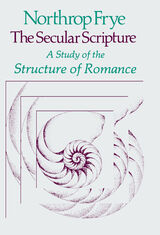 The Secular Scripture: A Study of the Structure of Romance
Northrop Frye
Harvard University Press, 1976 “The most sophisticated study of popular culture, considered on a world scale, that we have yet had.”—New Republic
The acclaimed author of Anatomy of Criticism on the role of romance as a literary genre in Western culture.
At a time when literary criticism was dominated by close reading of individual works, Northrop Frye’s sweeping, millennia-spanning investigations of the recurring symbols and archetypes that shape our literary traditions made him one of the most influential critics of his generation. Here, Frye brings his encyclopedic knowledge to bear on romance, a genre whose tropes have echoed through Western literature since the Homeric epics.
With its shipwrecks and magic potions, its plots of mistaken identity and the rescue of maidens in distress, romance has often been deemed unworthy of serious critical attention. Critics praise other aspects of The Odyssey or The Faerie Queene, for example, while forgiving the authors’ indulgence in childishly romantic plots. For Frye, however, romance is far more than a puerile form of escapism. Rather, it constitutes a vital mythological universe, a “secular scripture” whose hero is man, paralleling the sacred scripture whose hero is God. Its plot elements—the descent into a lower world or escape into a higher one, the discovery of true identity and the breaking of enchantment, the quest where the end is the beginning transformed—form nothing less than “the structural core of all fiction.”
Drawing freely from an enormous range of sources, from Dante and Milton to Lewis Carroll, from fairy tales to dime novels, The Secular Scripture ultimately argues that the Word of God and the word of man are cut from the same cloth. By recovering our own human mythologies, appreciating them in all their artifice, we can, like God in Genesis, look over the vast romance we have created and see that it is good.
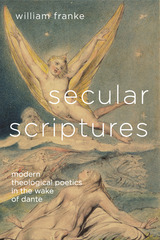 Secular Scriptures: Modern Theological Poetics in the Wake of Dante
William Franke
Ohio State University Press, 2015 With Secular Scriptures: Modern Theological Poetics in the Wake of Dante, William Franke reexamines the role that literature plays in theological revelation. In the modern world, secularism typically means the exclusion of God from the world. Yet Franke, recognizing that secularity itself is built into religion and revelation, argues that theologically sensitive poetry has driven secularization throughout the modern period. The essays in this volume construct a trajectory through modern poetic literature as it struggled with the sense of a loss of the very possibility of theological revelation. Can literature replace religion? Can it do so triumphantly or only mournfully? Is this literary transmogrification of revelation the death of religion or its rebirth in a vital new form?
Secular Scriptures examines, through its own original speculative outlook, some of the most compelling exemplars of religious-poetic revelation in modern Western literature. The essays taken as an ensemble revolve around and are bookended by Dante, but they also explore the work of Chaucer, Shakespeare, Milton, Blake, Leopardi, Baudelaire, Dickinson, and Yeats. Looking both backward and forward from the vantage of Dante, Franke explores the roots of secularized religious vision in antiquity and the Middle Ages, even as he also looks forward toward its fruits in modern poetry and poetics. Ultimately, Franke’s analyses demonstrate the possibilities opened by understanding literature as secularized religious revelation.
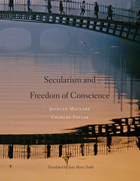 Secularism and Freedom of Conscience
Jocelyn Maclure and Charles Taylor
Harvard University Press, 2011 Jocelyn Maclure and Charles Taylor provide a clearly reasoned, articulate account of secularism, and how it may offer the only path to religious and philosophical freedom.
Secularism: the definition of this word is as practical and urgent as income inequalities or the paths to sustainable development. In this wide-ranging analysis, Jocelyn Maclure and Charles Taylor provide a clearly reasoned, articulate account of the two main principles of secularism—equal respect, and freedom of conscience—and its two operative modes—separation of Church (or mosque or temple) and State, and State neutrality vis-à-vis religions. But more crucially, they make the powerful argument that in our ever more religiously diverse, politically interconnected world, secularism, properly understood, may offer the only path to religious and philosophical freedom.
Secularism and Freedom of Conscience grew out of a very real problem—Quebec’s need for guidelines to balance the equal respect due to all citizens with the right to religious freedom. But the authors go further, rethinking secularism in light of other critical issues of our time. The relationship between religious beliefs and deeply-held secular convictions, the scope of the free exercise of religion, and the place of religion in the public sphere are aspects of the larger challenge Maclure and Taylor address: how to manage moral and religious diversity in a free society. Secularism, they show, is essential to any liberal democracy in which citizens adhere to a plurality of conceptions of what gives meaning and direction to human life. The working model the authors construct in this nuanced account is capacious enough to accommodate difference and freedom of conscience, while holding out hope for a world in which diversity no longer divides us.
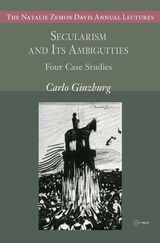 Secularism and Its Ambiguities: Four Case Studies
Carlo Ginzburg
Central European University Press, 2023 In the best micro-historical tradition, Carlo Ginzburg, himself one of the founders and icons of this genre of historiography, dissects four moments of European intellectual history. This book relives the experience that participants in the Natalie Zemon Davis Lecture Series at the Budapest campus of Central European University had in 2019 listening to Ginzburg's eloquent and engaging discourses. For the purposes of this volume he has re-edited and completed the leporello of cases charged with the inherent ambiguity between secularism and religions. Secularism is often identified with rejection or at least distancing from the sacred. However, if one assumes that secularism also appropriates and reworks the sacred, its ambiguities come to the fore. The dilemma accompanies the reception of La Boétie's Servitude volontaire between 1574 and today. Before Walter Benjamin, the lesser-known 19th-century Léon de Laborde defended the profanity of reproducing the arts. The tension around the secular pervades the case of the College de Sociologie (Paris, 1937-1939), an attempt to analyze the ideological components of fascism. The fourth lecture approaches a much-discussed contemporary phenomenon – fake news – from a long-term perspective. To what extent are some disturbing features of the world we live in the result of a long, tortuous, unpredictable trajectory?
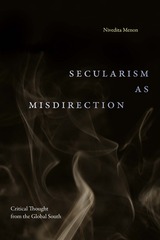 Secularism as Misdirection: Critical Thought from the Global South
Nivedita Menon
Duke University Press, 2024 In Secularism as Misdirection, Nivedita Menon traces how the discourse of secularism fixes attention to and hypervisualizes women and religion while obscuring other related issues. Showing how secularism is often invoked to serve capital and antiminority politics, Menon exposes it as a strategy of governance that is compatible with both democracy and authoritarianism, capitalism and socialism. Secularism also delegitimizes the nonindividuated nonrational self, Menon argues; exploring this aspect, she tracks the journey of psychoanalysis in the global South. Menon further examines the interconnectedness of religion, caste, the state, and women, showing how the discourse of secularism can also be mobilized by Hindu supremacist politics in India. Menon puts Latin American decolonial theorists in conversation with Asian and African thinkers to examine twenty-first-century global reimaginings of selfhood, constitutionalism, citizenship, and anticapitalist existence. Through a feminist and global perspective, Menon suggests that transformative politics is better imagined by stepping out of the frame offered by secularism and focusing on substantive values such as democracy, social justice, and ecological justice.
Secularism, Assimilation and the Crisis of Multiculturalism: French Modernist Legacies
Yolande Jansen
Amsterdam University Press, 2014 This remarkable study develops a theoretical critique of contemporary discourses on secularism and assimilation, arguing that the perspective of assimilating distinct religious minorities by incorporating them into a secular and supposedly neutral public sphere may be self-subverting. To flesh out this insight, Jansen draws on the paradoxes of assimilation as experienced by the French Jews in the late 19th century through a contextualised reading of Proust's In Search of Lost Time. She proposes a dynamic, critical multiculturalism as an alternative to discourses focusing on secularism, assimilation and integration.
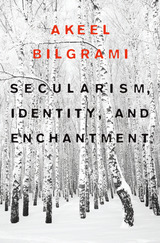 Secularism, Identity, and Enchantment
Akeel Bilgrami
Harvard University Press, 2014 Bringing clarity to a subject clouded by polemic, Secularism, Identity, and Enchantment is a rigorous exploration of how secularism and identity emerged as concepts in different parts of the modern world. At a time when secularist and religious worldviews appear irreconcilable, Akeel Bilgrami strikes out on a path distinctly his own, criticizing secularist proponents and detractors, liberal universalists and multicultural relativists alike.
Those who ground secularism in arguments that aspire to universal reach, Bilgrami argues, fundamentally misunderstand the nature of politics. To those, by contrast, who regard secularism as a mere outgrowth of colonial domination, he offers the possibility of a more conceptually vernacular ground for political secularism. Focusing on the response to Salman Rushdie’s Satanic Verses, Bilgrami asks why Islamic identity has so often been a mobilizing force against liberalism, and he answers the question with diagnostic sympathy, providing a philosophical framework within which the Islamic tradition might overcome the resentments prompted by its colonized past and present.
Turning to Gandhi’s political and religious thought, Bilgrami ponders whether the increasing appeal of religion in many parts of the world reflects a growing disillusionment not with science but with an outlook of detachment around the rise of modern science and capitalism. He elaborates a notion of enchantment along metaphysical, ethical, and political lines with a view to finding in secular modernity a locus of meaning and value, while addressing squarely the anxiety that all such notions hark back nostalgically to a time that has past.
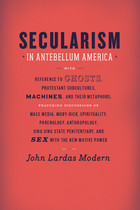 Secularism in Antebellum America
John Lardas Modern
University of Chicago Press, 2011 Ghosts. Railroads. Sing Sing. Sex machines. These are just a few of the phenomena that appear in John Lardas Modern’s pioneering account of religion and society in nineteenth-century America. This book uncovers surprising connections between secular ideology and the rise of technologies that opened up new ways of being religious. Exploring the eruptions of religion in New York’s penny presses, the budding fields of anthropology and phrenology, and Moby-Dick, Modern challenges the strict separation between the religious and the secular that remains integral to discussions about religion today.
Modern frames his study around the dread, wonder, paranoia, and manic confidence of being haunted, arguing that experiences and explanations of enchantment fueled secularism’s emergence. The awareness of spectral energies coincided with attempts to tame the unruly fruits of secularism—in the cultivation of a spiritual self among Unitarians, for instance, or in John Murray Spear’s erotic longings for a perpetual motion machine. Combining rigorous theoretical inquiry with beguiling historical arcana, Modern unsettles long-held views of religion and the methods of narrating its past.
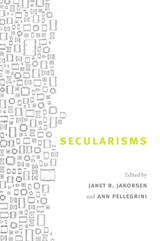 Secularisms
Janet R. Jakobsen and Ann Pellegrini, eds.
Duke University Press, 2008 At a time when secularism is put forward as the answer to religious fundamentalism and violence, Secularisms offers a powerful, multivoiced critique of the narrative equating secularism with modernity, reason, freedom, peace, and progress. Bringing together essays by scholars based in religious studies, gender and sexuality studies, history, science studies, anthropology, and political science, this volume challenges the binary conception of “conservative” religion versus “progressive” secularism. With essays addressing secularism in India, Iran, Turkey, Great Britain, China, and the United States, this collection crucially complicates the dominant narrative by showing that secularism is multifaceted. How secularism is lived and experienced varies with its national, regional, and religious context. The essays explore local secularisms in relation to religious traditions ranging from Islam to Judaism, Hinduism to Christianity. Several contributors explicitly take up the way feminism has been implicated in the dominant secularization story. Ultimately, by dislodging secularism’s connection to the single (and singular) progress narrative, this volume seeks to open spaces for other possible narratives about both secularism and religion—as well as for other possible ways of inhabiting the contemporary world. Contributors: Robert J. Baird, Andrew Davison, Tracy Fessenden, Janet R. Jakobsen, Laura Levitt,
Molly McGarry, Afsaneh Najmabadi, Taha Parla, Geeta Patel, Ann Pellegrini, Tyler Roberts,
Ranu Samantrai, Banu Subramaniam, Rajeswari Sunder Rajan, Angela Zito
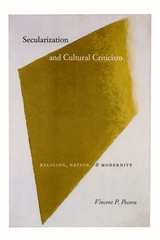 Secularization and Cultural Criticism: Religion, Nation, and Modernity
Vincent P. Pecora
University of Chicago Press, 2006 Religion is an undiscovered country for much of the secular academy, which remains deeply ambivalent about it as an object of study. On the one hand, secular scholars agree that it is time to take religion seriously. On the other, these same scholars persist in assuming that religion rests not on belief but on power and ideology. According to Vincent Pecora, the idea of the secular itself is the source of much of the contradiction and confusion in contemporary thought about religion. Pecora aims here to work through the paradoxes of secularization, which emerges in this book as an intractable problem for cultural criticism in the nation-states of the post-Enlightenment West.
Secularization and Cultural Criticism examines the responses of a wide range of thinkers—Edward Said, Talal Asad, Jürgen Habermas, Walter Benjamin, Emile Durkheim, Carl Schmitt, Matthew Arnold, and Virginia Woolf, among others—to illustrate exactly why the problem of secularization in the study of society and culture should matter once again. Exploring the endemic difficulty posed by religion for the modern academy, Pecora makes sense of the value and potential impasses of secular cultural criticism in a global age.
 Secularization without End: Beckett, Mann, Coetzee
Vincent P. Pecora
University of Notre Dame Press, 2015 In Secularization without End: Beckett, Mann, Coetzee, Vincent P. Pecora elaborates an alternative history of the twentieth-century Western novel that explains the resurgence of Christian theological ideas. Standard accounts of secularization in the novel assume the gradual disappearance of religious themes through processes typically described as rationalization: philosophy and science replace faith. Pecora shows, however, that in the modern novels he examines, "secularization" ceases to mean emancipation from the prescientific ignorance or enchantment commonly associated with belief and signifies instead the shameful state of a humanity bereft of grace and undeserving of redemption.
His book focuses on the unpredictable and paradoxical rediscovery of theological perspectives in otherwise secular novels after 1945. The narratives he analyzes are all seemingly godless in their overt points of view, from Samuel Beckett’s Murphy to Thomas Mann’s Doktor Faustus to J. M. Coetzee’s The Childhood of Jesus. But, Pecora argues, these novels wind up producing varieties of religious doctrine drawn from Augustinian and Calvinist claims about primordial guilt and the impotence of human will. In the most artfully imaginative ways possible, Beckett, Mann, and Coetzee resist the apparently inevitable plot that so many others have constructed for the history of the novel, by which human existence is reduced to mundane and meaningless routines and nothing more. Instead, their writing invokes a religious past that turns secular modernity, and the novel itself, inside out.
"Secularization without End is a well-argued and provocative exploration of the modern novel grounded in a compelling set of theological reflections. Vincent P. Pecora discusses primarily Samuel Beckett's trilogy (1950), Thomas Mann's Dr. Faustus (1947), and various novels by J. M. Coetzee from the late twentieth and early twenty-first century. This is not just a set of three individual-author essays; it is about an alternative history of the novel that challenges the paradigms that have prevailed from Watt to Moretti." —Russell Berman, Walter A. Haas Professor in the Humanities, Stanford University
"A must read. After Vincent P. Pecora’s Secularization without End, modernism won’t be the same. On the back of his innovative understanding of secularization as interminable, Pecora shows that his authors—Beckett, Mann, and Coetzee—are saturated in a bleak Christianity that they can’t overcome. I can think of few recent books of literary criticism from which I have learnt more." —Simon During, University of Queensland
"Vincent P. Pecora's new study offers a most welcome corrective to the still widely accepted notion that the European novel had 'come to supplant the history of religion as the basis of our moral sensibility.' Compact, accessible, and full of engaging and trenchant commentary, Secularization without End provides a valuable resource not just for specialists but for undergraduates studying the modern novel and trying to develop a nuanced and capacious understanding of the complex relationship between literature and religion." —Thomas Pfau, author of Minding the Modern: Human Agency, Intellectual Traditions, and Responsible Knowledge
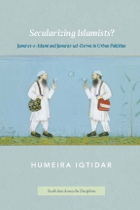 Secularizing Islamists?: Jama'at-e-Islami and Jama'at-ud-Da'wa in Urban Pakistan
Humeira Iqtidar
University of Chicago Press, 2011 Secularizing Islamists? provides an in-depth analysis of two Islamist parties in Pakistan, the highly influential Jama‘at-e-Islami and the more militant Jama‘at-ud-Da‘wa, widely blamed for the November 2008 terrorist attack in Mumbai, India. Basing her findings on thirteen months of ethnographic work with the two parties in Lahore, Humeira Iqtidar proposes that these Islamists are involuntarily facilitating secularization within Muslim societies, even as they vehemently oppose secularism. This book offers a fine-grained account of the workings of both parties that challenges received ideas about the relationship between the ideology of secularism and the processes of secularization. Iqtidar particularly illuminates the impact of women on Pakistani Islamism, while arguing that these Islamist groups are inadvertently supporting secularization by forcing a critical engagement with the place of religion in public and private life. She highlights the role that competition among Islamists and the focus on the state as the center of their activity plays in assisting secularization. The result is a significant contribution to our understanding of emerging trends in Muslim politics.
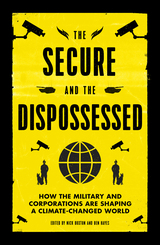 The Secure and the Dispossessed: How the Military and Corporations Are Shaping a Climate-Changed World
Edited by Nick Buxton and Ben Hayes
Pluto Press, 2015 While ecologists and environmentalists view the melting of the polar ice caps as a dire and threatening effect of climate change, many business and political leaders see emerging opportunity, as a result of newly accessible oil and gas fields. As the contributors to The Secure and the Dispossessed reveal, the ongoing environmental transitions raise a host of complicated questions about global assets and resources as well as dangerous opportunism.
The Secure and the Dispossessed gathers together essays by high-profile journalists, academics, and activists, including Christian Parenti, Nafeez Ahmed, and policy analyst Oscar Reyes. They offer a close and critical guide to questions about climate change, showing how they converge with questions about international security and global economic power, as new natural resources become available. This book is an essential guide to the key environmental and political debates which will shape future policies and elections: how managing the world’s supply of oil and gas can be squared with the environmental impact of our continued reliance on those very same fossil fuels.
Secure Big-data Analytics for Emerging Healthcare in 5G and Beyond: Concepts, paradigms, and solutions
Pronaya Bhattacharya
The Institution of Engineering and Technology, 2024 Healthcare systems today are increasingly reliant on data gathered from multiple hospital systems, patient records or IoT devices. As more information is gathered, there is a need to ensure the data is kept and used securely. This edited book looks at secure big data analytics for healthcare and how the wealth of information is disseminated through open wireless channels to provide seamless coverage so that people can access and analyse the results obtained and intelligently manage and respond to a patient's needs.
Secure the Shadow: A Novel
Michael Henson
Ohio University Press, 2021 An interconnected web of lives in one midwestern city captures the surprising humanity of people searching for their authentic selves amid the 1990s drug crisis. Amy Taylor finds the inner-city streets around her high school vibrant and animated compared to the bland middle-class neighborhood where she lives with her career-driven mother. In these streets, she meets the people of the city, among them a wayward boy named Jonathan, a struggling drug dealer, and Paul Lewis, a documentary photographer who becomes Amy’s mentor. Under his inspiration, she attempts to capture their world through the lens of her camera. From the multiple perspectives of Amy and the expansive group of people she meets, award-winning novelist Michael Henson presents a heartbreaking portrait of the effects the Reagan-initiated drug war had on the young.
Secured Hardware Accelerators for DSP and Image Processing Applications
Anirban Sengupta
The Institution of Engineering and Technology, 2021 Written by an acknowledged expert in the field, this book focuses on approaches for designing secure hardware accelerators for digital signal processing and image processing, which are also optimised for performance and efficiency. State-of-the art security and optimization algorithms are presented, and their roles in the design of secured hardware accelerators for DSP, multimedia and image processing applications are explored.
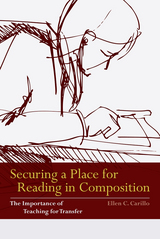 Securing a Place for Reading in Composition: The Importance of Teaching for Transfer
Ellen C. Carillo
Utah State University Press, 2014 Securing a Place for Reading in Composition addresses the dissonance between the need to prepare students to read, not just write, complex texts and the lack of recent scholarship on reading-writing connections. Author Ellen C. Carillo argues that including attention-to-reading practices is crucial for developing more comprehensive literacy pedagogies. Students who can read actively and reflectively will be able to work successfully with the range of complex texts they will encounter throughout their post-secondary academic careers and beyond. Considering the role of reading within composition from both historical and contemporary perspectives, Carillo makes recommendations for the productive integration of reading instruction into first-year writing courses. She details a “mindful reading” framework wherein instructors help students cultivate a repertoire of approaches upon which they consistently reflect as they apply them to various texts. This metacognitive frame allows students to become knowledgeable and deliberate about how they read and gives them the opportunity to develop the skills useful for moving among reading approaches in mindful ways, thus preparing them to actively and productively read in courses and contexts outside first-year composition.
Securing a Place for Reading in Composition also explores how the field of composition might begin to effectively address reading, including conducting research on reading, revising outcome statements, and revisiting the core courses in graduate programs. It will be of great interest to writing program administrators and other compositionists and their graduate students.
Securing AI Model Weights: Preventing Theft and Misuse of Frontier Models
Sella Nevo
RAND Corporation, 2024 As frontier artificial intelligence (AI) models—that is, models that match or exceed the capabilities of the most advanced models at the time of their development—become more capable, protecting them from theft and misuse will become more important. The authors of this report explore what it would take to protect model weights—the learnable parameters that encode the core intelligence of an AI—from theft by a variety of potential attackers.
 Securing Approval: Domestic Politics and Multilateral Authorization for War
Terrence L. Chapman
University of Chicago Press, 2011 Among the most momentous decisions that leaders of a state are called upon to make is whether or not to initiate warfare. How their military will fare against the opponent may be the first consideration, but not far behind are concerns about domestic political response and the reaction of the international community.
Securing Approval makes clear the relationship between these two seemingly distinct concerns, demonstrating how multilateral security organizations like the UN influence foreign policy through public opinion without ever exercising direct enforcement power. While UN approval of a proposed action often bolsters public support, its refusal of endorsement may conversely send a strong signal to domestic audiences that the action will be exceedingly costly or overly aggressive. With a cogent theoretical and empirical argument, Terrence L. Chapman provides new evidence for how multilateral organizations matter in security affairs as well as a new way of thinking about the design and function of these institutions.
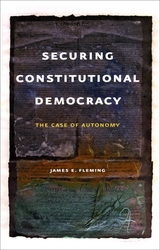 Securing Constitutional Democracy: The Case of Autonomy
James E. Fleming
University of Chicago Press, 2006 Famously described by Louis Brandeis as "the most comprehensive of rights" and 'the right most valued by civilized men," the right of privacy or autonomy is more embattled during modern times than any other. Debate over its meaning, scope, and constitutional status is so widespread that it all but defines the post-1960s era of constitutional interpretation. Conservative Robert Bork called it "a loose canon in the law," while feminist Catharine MacKinnon attacked it as the “right of men to be left alone to oppress women.” Can a right with such prominent critics from across the political spectrum be grounded in constitutional law?
In this book, James Fleming responds to these controversies by arguing that the right to privacy or autonomy should be grounded in a theory of securing constitutional democracy. His framework seeks to secure the basic liberties that are preconditions for deliberative democracy—to allow citizens to deliberate about the institutions and policies of their government—as well as deliberative autonomy—to enable citizens to deliberate about the conduct of their own lives. Together, Fleming shows, these two preconditions can afford everyone the status of free and equal citizenship in our morally pluralistic constitutional democracy.
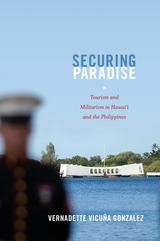 Securing Paradise: Tourism and Militarism in Hawai'i and the Philippines
Vernadette Vicuña Gonzalez
Duke University Press, 2013 In Securing Paradise, Vernadette Vicuña Gonzalez shows how tourism and militarism have functioned together in Hawai`i and the Philippines, jointly empowering the United States to assert its geostrategic and economic interests in the Pacific. She does so by interpreting fiction, closely examining colonial and military construction projects, and delving into present-day tourist practices, spaces, and narratives. For instance, in both Hawai`i and the Philippines, U.S. military modes of mobility, control, and surveillance enable scenic tourist byways. Past and present U.S. military posts, such as the Clark and Subic Bases and the Pearl Harbor complex, have been reincarnated as destinations for tourists interested in World War II. The history of the U.S. military is foundational to tourist itineraries and imaginations in such sites. At the same time, U.S. military dominance is reinforced by the logics and practices of mobility and consumption underlying modern tourism. Working in tandem, militarism and tourism produce gendered structures of feeling and formations of knowledge. These become routinized into everyday life in Hawai`i and the Philippines, inculcating U.S. imperialism in the Pacific.
 Securing Religious Liberty: Principles for Judicial Interpretation of the Religion Clauses
Jesse H. Choper
University of Chicago Press, 1995 Although the Constitution of the United States states that there shall be no laws that either establish or prohibit religion, the application of the Religion Clauses throughout United States history has been fraught with conflict and ambiguity. In this book, a leading constitutional scholar proposes a set of guidelines meant to provide for the consistent application of the First Amendment's Religion Clauses.
Choper's guidelines are designed to provide maximum protection for religious freedom without granting anyone an advantage, inflicting a disadvantage, or causing an unfair burden. Though not calling for the wholesale overturning of judicial precedents or established social practices, the standards he proposes would result in significant—and controversial—modifications to existing doctrines and customs. Choper argues, for instance, that while vocal prayer and Bible reading in public schools should continue to be prohibited, we can and should allow for silent prayer and objective courses in creation science. His standards would also, among other things, eliminate the tax exemption on property used exclusively for religious purposes while allowing parochial schools to receive public funds for the non-religious component of their education.
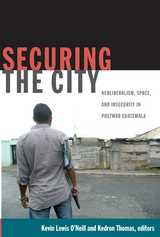 Securing the City: Neoliberalism, Space, and Insecurity in Postwar Guatemala
Kevin Lewis O Neill and Kedron Thomas, eds.
Duke University Press, 2011 Unprecedented crime rates have made Guatemala City one of the most dangerous cities in the world. Following a peace process that ended Central America’s longest and bloodiest civil war and impelled the transition from a state-centric economy to the global free market, Guatemala’s neoliberal moment is now strikingly evident in the practices and politics of security. Postwar violence has not prompted public debates about the conditions that permit transnational gangs, drug cartels, and organized crime to thrive. Instead, the dominant reaction to crime has been the cultural promulgation of fear and the privatization of what would otherwise be the state’s responsibility to secure the city. This collection of essays, the first comparative study of urban Guatemala, explores these neoliberal efforts at security. Contributing to the anthropology of space and urban studies, this book brings together anthropologists and historians to examine how postwar violence and responses to it are reconfiguring urban space, transforming the relationship between city and country, and exacerbating deeply rooted structures of inequality and ethnic discrimination. Contributors. Peter Benson, Manuela Camus, Avery Dickins de Girón, Edward F. Fischer, Deborah Levenson, Thomas Offit, Kevin Lewis O’Neill, Kedron Thomas, Rodrigo José Véliz
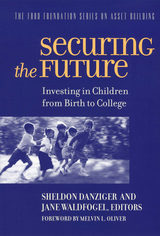 Securing the Future: Investing in Children From Birth to College
Sheldon Danziger
Russell Sage Foundation, 2000 More than ever, the economic health of a country depends upon the skills, knowledge, and capacities of its people. How does a person acquire these human assets and how can we promote their development? Securing the Future assembles an interdisciplinary team of scholars to investigate the full range of factors—pediatric, psychological, social, and economic—that bear on a child's development into a well-adjusted, economically productive member of society. A central purpose of the volume is to identify sound interventions that will boost human assets, particularly among the disadvantaged. The book provides a comprehensive evaluation of current initiatives and offers a wealth of new suggestions for effective public and private investments in child development. While children from affluent, highly educated families have good quality child care and an expensive education provided for them, children from poor families make do with informal child care and a public school system that does not always meet their needs. How might we best redress this growing imbalance? The contributors to this volume recommend policies that treat academic attainment together with psychological development and social adjustment. Mentoring programs, for example, promote better school performance by first fostering a young person's motivation to learn. Investments made early in life, such as preschool education, are shown to have the greatest impact on later learning for the least cost. In their focus upon children, however, the authors do not neglect the important links between generations. Poverty and inequality harm the development of parents and children alike. Interventions that empower parents to fight for better services and better schools are also of great benefit to their children. Securing the Future shows how investments in child development are both a means to an end and an end in themselves. They benefit the child directly and they also help that child contribute to the well-being of society. This book points us toward more effective strategies for promoting the economic success and the social cohesion of future generations. A Volume in the Ford Foundation Series on Asset Building
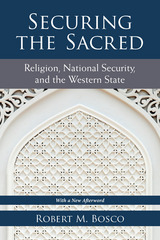 Securing the Sacred: Religion, National Security, and the Western State
Robert M. Bosco
University of Michigan Press, 2014 Since the terrorist attacks of September 11, 2001, Western nations have increasingly recognized religion as a consideration in domestic and foreign policy. In this empirical comparison of the securitization of Islam in Britain, France, and the United States, Robert M. Bosco argues that religion is a category of phenomena defined by the discourses and politics of both religious and state elites.
Despite significant theoretical distinctions between securitization on the domestic and the international levels, he finds that the outcome of addressing religion within the context of security hinges upon partnerships. Whereas states may harness the power of international allies, they cannot often find analogous domestic allies; therefore, states that attempt to securitize religion at home are more vulnerable to counterattack and more likely to abandon their efforts. Securing the Sacred makes a significant contribution to the fields of political theory, international relations, Islamic studies, and security/military studies.
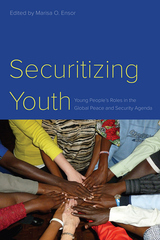 Securitizing Youth: Young People’s Roles in the Global Peace and Security Agenda
Marisa O. Ensor
Rutgers University Press, 2021 Securitizing Youth offers new insights on young people’s engagement in a wide range of contexts related to the peace and security field. It presents empirical findings on the challenges and opportunities faced by young women and men in their efforts to build more peaceful, inclusive, and environmentally secure societies. The chapters included in this edited volume examine the diversity and complexity of young people’s engagement for peace and security in different countries across the globe and in different types and phases of conflict and violence, including both conflict-affected and relatively peaceful societies. Chapter contributors, young peacebuilders, and seasoned scholars and practitioners alike propose ways to support youth’s agency and facilitate their meaningful participation in decision-making. The chapters are organized around five broad thematic issues that correspond to the 5 Pillars of Action identified by UN Security Council Resolution 2250. Lessons learned are intended to inform the global youth, peace, and security agenda so that it better responds to on-the-ground realities, hence promoting more sustainable and inclusive approaches to long-lasting peace.
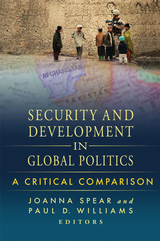 Security and Development in Global Politics: A Critical Comparison
Joanna Spear and Paul D. Williams, Editors
Georgetown University Press, 2012 Security and development matter: they often involve issues of life and death and they determine the allocation of truly staggering amounts of the world’s resources. Particularly since the start of the wars in Afghanistan and Iraq, there has been momentum in policy circles to merge the issues of security and development to attempt to end conflicts, create durable peace, strengthen failing states, and promote the conditions necessary for people to lead healthier and more prosperous lives. In many ways this blending of security and development agendas seems admirable and designed to produce positive outcomes all around. However, it is often the case that the two concepts in combination do not receive equal weight, with security issues getting priority over development concerns. This is not desirable and actually undermines security in the longer term. Moreover, there are major challenges in practice when security practitioners and development practitioners are asked to agree on priorities and work together. Security and Development in Global Politics illuminates the common points of interest but also the significant differences between security and development agendas and approaches to problem solving. With insightful chapter pairings—each written by a development expert and a security analyst—the book explores seven core international issues: aid, humanitarian assistance, governance, health, poverty, trade and resources, and demography. Using this comparative structure, the book effectively assesses the extent to which there really is a nexus between security and development and, most importantly, whether the link should be encouraged or resisted.
Security and Privacy for Big Data, Cloud Computing and Applications
Wei Ren
The Institution of Engineering and Technology, 2019 As big data becomes increasingly pervasive and cloud computing utilization becomes the norm, the security and privacy of our systems and data becomes more critical with emerging security and privacy threats and challenges. This book presents a comprehensive view on how to advance security and privacy in big data, cloud computing, and their applications. Topics include cryptographic tools, SDN security, big data security in IoT, privacy preserving in big data, security architecture based on cyber kill chain, privacy-aware digital forensics, trustworthy computing, privacy verification based on machine learning, and chaos-based communication systems. This book is an essential reading for networking, computing, and communications professionals, researchers, students and engineers, working with big data and cloud computing.
Security and Privacy of Electronic Healthcare Records: Concepts, paradigms and solutions
Sudeep Tanwar
The Institution of Engineering and Technology, 2020 Hospitals, medical practices and healthcare organizations are implementing new technologies at breakneck speed. Yet privacy and security considerations are often an afterthought, putting healthcare organizations at risk of data security and privacy issues, fines, damage to their reputations, with serious potential consequences for the patients. Electronic Health Record systems (EHRs) consist of clinical notes, patient listings, lab results, imaging results and screening tests. EHRs are growing in complexity over time and requiring increasing amounts of data storage.
 Security and Privacy Schemes for Dense 6G Wireless Communication Networks
Agbotiname Lucky Imoize
The Institution of Engineering and Technology, 2023 Fifth generation (5G) wireless networks are now commercialized, and the research focus has shifted towards sixth generation (6G) wireless systems. The integration of sensor nodes and massive machine type communication (MTC) devices (MDs) in ubiquitous 5G networks has facilitated the design of critical enabling technologies to support billions of data-hungry applications. By leveraging sensor nodes in wireless sensor networks (WSNs), sensitive user information can be harvested and transmitted to receivers via WSN-assisted channels, which are often not well secured. Consequently, sensitive user information can be intercepted and used unlawfully. The security and confidentiality measures used for data transmission over existing 5G WSN-assisted channels are limited. 6G systems are envisaged to face fiercer security challenges. In 6G wireless networks, a new set of sensing and precise localization techniques are predicted. Thus, the need to secure user information against adversarial attacks needs to be implemented at the design stage.
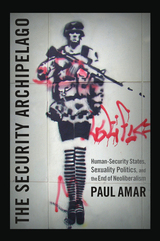 The Security Archipelago: Human-Security States, Sexuality Politics, and the End of Neoliberalism
Paul Amar
Duke University Press, 2013 In The Security Archipelago, Paul Amar provides an alternative historical and theoretical framing of the refashioning of free-market states and the rise of humanitarian security regimes in the Global South by examining the pivotal, trendsetting cases of Brazil and Egypt. Addressing gaps in the study of neoliberalism and biopolitics, Amar describes how coercive security operations and cultural rescue campaigns confronting waves of resistance have appropriated progressive, antimarket discourses around morality, sexuality, and labor. The products of these struggles—including powerful new police practices, religious politics, sexuality identifications, and gender normativities—have traveled across an archipelago, a metaphorical island chain of what the global security industry calls "hot spots." Homing in on Cairo and Rio de Janeiro, Amar reveals the innovative resistances and unexpected alliances that have coalesced in new polities emerging from the Arab Spring and South America's Pink Tide. These have generated a shared modern governance model that he terms the "human-security state."
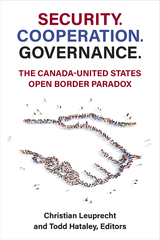 Security. Cooperation. Governance.: The Canada-United States Open Border Paradox
Christian Leuprecht and Todd Hataley, Editors
University of Michigan Press, 2023 Historically, national borders have evolved in ways that serve the interests of central states in security and the regulation of trade. This volume explores Canada–US border and security policies that have evolved from successive trade agreements since the 1950s, punctuated by new and emerging challenges to security in the twenty-first century. The sectoral and geographical diversity of cross-border interdependence of what remains the world’s largest bilateral trade relationship makes the Canada–US border a living laboratory for studying the interaction of trade, security, and other border policies that challenge traditional centralized approaches to national security.
The book’s findings show that border governance straddles multiple regional, sectoral, and security scales in ways rarely documented in such detail. These developments have precipitated an Open Border Paradox: extensive, regionally varied flows of trade and people have resulted in a series of nested but interdependent security regimes that function on different scales and vary across economic and policy sectors. These realities have given rise to regional and sectoral specialization in related security regimes. For instance, just-in-time automotive production in the Great Lakes region varies considerably from the governance of maritime and intermodal trade (and port systems) on the Atlantic and Pacific coasts, which in turn is quite different from commodity-based systems that manage diverse agricultural and food trade in the Canadian Prairies and US Great Plains.
The paradox of open borders and their legitimacy is a function of robust bilateral and multilevel governance based on effective partnerships with substate governments and the private sector. Effective policy accounts for regional variation in integrated binational security and trade imperatives. At the same time, binational and continental policies are embedded in each country’s trade and security relationships beyond North America.
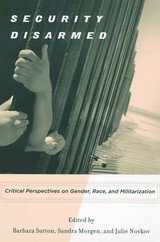 Security Disarmed: Critical Perspectives on Gender, Race, and Militarization
Morgen, Sandra
Rutgers University Press, 2008 From the history of state terrorism in Latin America, to state- and group-perpetrated plunder and genocide in Africa, to war and armed conflicts in the Middle East, militarization--the heightened role of organized aggression in society--continues to painfully shape the lives of millions of people around the world. In Security Disarmed, scholars, policy planners, and activists come together to think critically about the human cost of violence and viable alternatives to armed conflict. Arranged in four parts--alternative paradigms of security, cross-national militarization, militarism in the United States, and pedagogical and cultural concerns--the book critically challenges militarization and voices an alternative encompassing vision of human security by analyzing the relationships among gender, race, and militarization. This collection of essays evaluates and resists the worldwide crisis of militarizationùincluding but going beyond American military engagements in the twenty-first century.
Security for Mobility
Chris J. Mitchell
The Institution of Engineering and Technology, 2004 Over the last two decades, mobile telecommunications has grown dramatically, from a small niche technology to a massive industry. Mobile telephones are now ubiquitous, and the divisions between PCs, PDAs, mobile telephones and other mobile devices are becoming increasingly blurred. Against this background, the security of information of both the devices themselves, and the information handled by these devices, is becoming ever more important.
 Security in Paraguay: Analysis and Responses in Comparative Perspective
James L. Cavallaro, Jacob Kopas, Yukyan Lam, Timothy Mayhle, and Soledad Villagra de Biedermann
Harvard University Press The perception of rising insecurity has plagued Paraguay over the past decade as the country has continued its transition from authoritarian to democratic rule. At the same time, reforms of the penal code and the code of criminal procedure have been implemented, leading many to attribute the rising sense of insecurity to the new, rights-based approach to criminal justice. In Security in Paraguay: Analysis and Responses in Comparative Perspective, the International Human Rights Clinic at Harvard Law School assesses the disparity between the sensation of insecurity and actual levels of urban crime. The book further analyzes the impact of political actors and the media in heightening public fear of crime. Security in Paraguay draws upon comparative case studies and the latest research on criminal justice policy in Latin America to situate Paraguay’s experience in a broader regional context and to offer recommendations to guide future policymaking.
Security Integration in Europe: How Knowledge-based Networks Are Transforming the European Union
Mai'a K. Davis Cross
University of Michigan Press, 2013 The European Union has made remarkable, unprecedented advances in both external and internal security integration. "Epistemic communities" of ambassadors, military generals, scientists, and other experts who supersede national governments in the diplomacy of security decision making are taking advantage of their shared expertise, common culture, professional norms, and frequent meetings to forge new levels of collaboration. Mai'a K. Davis Cross brings together numerous personal interviews and recent government documents across five separate case studies to construct a microsociological account of how EU governance really works and what future role the EU is likely to play internationally.
Security Sector Reform in Ukraine
Olga Oliker
RAND Corporation, 2016 The Maidan Revolution in Ukraine created an opportunity for change and reforms in a system that had resisted them for 25 years. This report examines Ukraine’s security sector—assessing what different institutions need to do and where gaps exist—and offers recommendations for the reform of Ukraine’s security and defense institutions that meet Ukraine’s security needs and align with Euro-Atlantic standards and approaches.
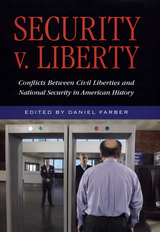 Security V. Liberty: Conflicts Between National Security and Civil Liberties in American History
Daniel Farber
Russell Sage Foundation, 2008 In the weeks following 9/11, the Bush administration launched the Patriot Act, rejected key provisions of the Geneva Convention, and inaugurated a sweeping electronic surveillance program for intelligence purposes—all in the name of protecting national security. But the current administration is hardly unique in pursuing such measures. In Security v. Liberty, Daniel Farber leads a group of prominent historians and legal experts in exploring the varied ways in which threats to national security have affected civil liberties throughout American history. Has the government's response to such threats led to a gradual loss of freedoms once taken for granted, or has the nation learned how to restore civil liberties after threats subside and how to put protections in place for the future? Security v. Liberty focuses on periods of national emergency in the twentieth century—from World War I through the Vietnam War—to explore how past episodes might bear upon today's dilemma. Distinguished historian Alan Brinkley shows that during World War I the government targeted vulnerable groups—including socialists, anarchists, and labor leaders—not because of a real threat to the nation, but because it was politically expedient to scapegoat unpopular groups. Nonetheless, within ten years the Supreme Court had rolled back the most egregious of the World War I restrictions on civil liberties. Legal scholar John Yoo argues for the legitimacy of the Bush administration's War on Terror policies—such as the detainment and trials of suspected al Qaeda members—by citing historical precedent in the Roosevelt administration's prosecution of World War II. Yoo contends that, compared to Roosevelt's sweeping use of executive orders, Bush has exercised relative restraint in curtailing civil liberties. Law professor Geoffrey Stone describes how J. Edgar Hoover used domestic surveillance to harass anti-war protestors and civil rights groups throughout the 1960s and early 1970s. Congress later enacted legislation to prevent a recurrence of the Hoover era excesses, but Stone notes that the Bush administration has argued for the right to circumvent some of these restrictions in its campaign against terrorism. Historian Jan Ellen Lewis looks at early U.S. history to show how an individual's civil liberties often depended on the extent to which he or she fit the definition of "American" as the country's borders expanded. Legal experts Paul Schwartz and Ronald Lee examine the national security implications of rapid advances in information technology, which is increasingly driven by a highly globalized private sector, rather than by the U.S. government. Security v. Liberty shows that civil liberties are a not an immutable right, but the historically shifting result of a continuous struggle that has extended over two centuries. This important new volume provides a penetrating historical and legal analysis of the trade-offs between security and liberty that have shaped our national history—trade-offs that we confront with renewed urgency in a post-9/11 world.
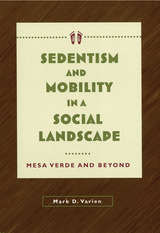 Sedentism and Mobility in a Social Landscape: Mesa Verde and Beyond
Mark D. Varien
University of Arizona Press, 1999 Research on hunting and gathering peoples has given anthropologists a long-standing conceptual framework of sedentism and mobility based on seasonality and ecological constraints. This work challenges that position by arguing that mobility is a socially negotiated activity and that neither mobility nor sedentism can be understood outside of its social context. Drawing on research in the Mesa Verde region that focuses on communities and households, Mark Varien expands the social, spatial, and temporal scales of archaeological analysis to propose a new model for population movement. Rather than viewing sedentism and mobility as opposing concepts, he demonstrates that they were separate strategies that were simultaneously employed. Households moved relatively frequently--every one or two generations--but communities persisted in the same location for much longer. Varien shows that individuals and households negotiated their movements in a social landscape structured by these permanent communities. Varien's research clearly demonstrates the need to view agriculturalists from a perspective that differs from the hunter-gatherer model. This innovative study shows why current explanations for site abandonment cannot by themselves account for residential mobility and offers valuable insights into the archaeology of small-scale agriculture.
Seder Tu Bishevat: The Festival of Trees
Rabbi Adam Fisher
Central Conference of American Rabbis, 1989 The Festival of Trees, Tu Bishevat, celebrates nature's rebirth after winter. Seder Tu Bishevat not only marks the observance but celebrates Judaism's appreciation of the larger cycle of nature as the work of God. This volume contains two Seders: Seder I addresses both adults and children of various ages; Seder II is specifically designed for the understanding and participation of younger children. The book includes prayers and selections from traditional sources, original poetry by Rabbi Fisher and 20 songs with complete chording for guitar. Ideal for congregational and home use.
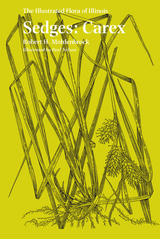 Sedges: Carex
Robert H. Mohlenbrock. Illustrated by Paul Nelson
Southern Illinois University Press, 1999
Sedges: Carex is the fourteenth volume of the Illustrated Flora of Illinois series and the sixth and last volume devoted to monocots, or plants that have a single seed-leaf, or cotyledon, upon germination. For each of the 159 species of Carex in Illinois, there is a full illustration showing the habit of the plant and close-ups of various vegetative and reproductive structures that are crucial for the identification of the individual species. There is also a complete description of each species as well as a discussion of the nomenclature and habitats. Range maps show the county distribution of each species in Illinois. A detailed key is provided for identification of the species.
Unique in several respects, Carex is by far the most numerous genus of plants in Illinois. Because of the vast number of species, the similarity of many of the species, and the relatively small size of the critical reproductive structures, the members of this genus are extremely confusing to identify. This book, with its detailed descriptions, key, and precise illustrations, should aid the interested person in the identification of these plants.
Since more than three-fourths of the species of Carex in Illinois are inhabitants of wetlands, an understanding of the genus is critical for those working in wetlands. Amateur and professional botanists will find the information extremely valuable, as well as environmental and conservation groups, garden clubs, farm bureaus, home extension groups, scout organizations, and school libraries. Persons working in natural areas programs and in rare and endangered species programs and those working on environmental impact assessments and wildlife management projects will also find the information pertinent.
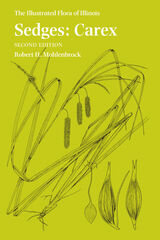 Sedges: Carex
Robert H. Mohlenbrock
Southern Illinois University Press, 2011 Sedges: Carex is the fourteenth volume of the Illustrated Flora of Illinois series and the sixth and last volume devoted to monocots—plants that have a single seed leaf, or cotyledon, upon germination.
Since the volume’s original publication in 1999, thirty-four additional species of plants have been recognized in Illinois. Some are discoveries from recent field work, some are from more thorough searches of herbaria, and others are from different taxonomic philosophies.
For each species of Carex in Illinois, there is a full illustration showing the habit of the plant and close-ups of various vegetative and reproductive structures that are crucial for the identification of the individual species. There is also a complete description of each species as well as a detailed discussion of the nomenclature and habitats. Range maps show the county distribution of each species in Illinois. A new and detailed key is provided for identification of the species.
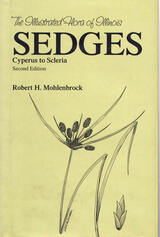 Sedges: Cyperus to Scleria
Robert H. Mohlenbrock
Southern Illinois University Press, 2001 This second edition of Sedges: Cyperus to Scleria brings up to date the identification of species of sedges in Illinois (except Carex) since publication of the first edition in 1976. During the intervening years, several additions to the sedge flora of Illinois have been made, and many new distributional records have been added. Also, a large number of nomenclatural changes have taken place, resulting in several alterations of scientific names. New illustrations have been provided for all of the additions. In his introductory material, Robert H. Mohlenbrock discusses the morphology of sedges and the habitats where they can be found. Although the semitechnical keys and descriptions are familiar to experienced botanists, he has simplified them as much as possible to accommodate the novice in sedge identification. He has also included a new key to the sedges and to each genus in which additional species have been added. For each species, Mohlenbrock has provided a description, statement of habitat and range, Illinois distribution map, discussion, synonymy, and line illustrations showing its diagnostic features. Sedges: Cyperus to Scleria contains 128 illustrations.
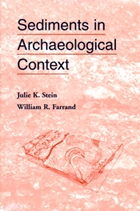 Sediments In Archaeological Context
Julie K Stein
University of Utah Press, 2001 Almost every artifact in archaeological analysis originates in or on the ground. While there are elaborate methods for extracting and analyzing artifacts, treatment of the matrix within which they are located is often unsophisticated and does not include systematic analysis.
Sediments in Archaeological Context concerns the analysis of this matrix and the potential use of sediments to answer archaeological questions. Describing sediments and sampling them in appropriate ways do not replace the study of artifacts, but they can provide additional, useful information regarding a site complex, its physical environment, and the relations of artifacts to each other.
Each chapter in the volume considers sediments within a specific context. Topics include sediments found in a variety of environments: cultural environments, rockshelter and cave environments, dryland alluvial environments, humid alluvial environments, lake environments, shoreline environments, and spring and wetland environments.
Sediments in Archaeological Context is intended for every archaeologist who investigates sites in depositional contexts.
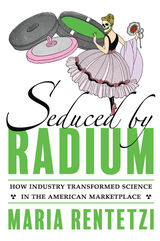 Seduced by Radium: How Industry Transformed Science in the American Marketplace
Maria Rentetzi
University of Pittsburgh Press, 2022 The discovery of radium by Marie and Pierre Curie in 1898 eventually led to a craze for radium products in the 1920s until their widespread use proved lethal for consumers, patients, and medical practitioners alike. Radium infiltrated American culture, Maria Rentetzi reveals, not only because of its potential to treat cancer but because it was transformed from a scientific object into a familiar, desirable commodity. She explores how Standard Chemical Company in Canonsburg, Pennsylvania—the first successful commercial producer of radium in the United States—aggressively promoted the benefits of radium therapy and its curative properties as part of a lucrative business strategy. Over-the-counter products, from fertilizers to paints and cosmetics to tonics and suppositories, inspired the same level of trust in consumers as a revolutionary pharmaceutical. The radium industry in the United States marketed commodities like Liquid Sunshine and Elixir of Youth at a time when using this new chemical element in the laboratory, in the hospital, in private clinics, and in commercial settings remained largely free of regulation. Rentetzi shows us how marketing campaigns targeted individually to men and women affected not only how they consumed these products of science but also how that science was understood and how it contributed to the formation of ideas about gender. Seduced by Radium ultimately reveals how innovative advertising techniques and seductive, state-of-the-art packaging made radium a routine part of American life, shaping scientific knowledge about it and the identities of those who consumed it.
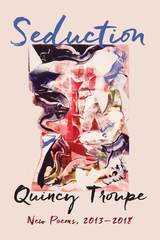 Seduction: New Poems, 2013-2018
Quincy Troupe
Northwestern University Press, 2019 The world is made of seductions. In Quincy Troupe's Seduction, the "I" becomes the "Eye," serving as metaphor and witness in a narrative compilation from a master of poetic music. Elegies and dramatic odes look at the seduction of all things loved or hated, especially the man made of color. How did the killings of Michael Brown, Tamir Rice, and Trayvon Martin seduce the public's eye and catch the fire of racism? How did Aretha Franklin seduce us with voice and twang? How does the art of Romare Bearden or Jack Whitten still tell our truths, fantasies, and oppressions?
time is a bald eagle, a killer soaring high in the blue, / music to men
dodging bullets in speeding cars, / knew death, hoped it'd never come . . .
In this collection we are seduced by Troupe's opus. This is the poet's art laid bare. He is our "Eye." Visions of the transatlantic slave trade, portraits of American violence, pop culture, and historical voices are the lyrical relics in Troupe's masterful verse. One of American literature's most important rhythmical artists, Troupe has created a chronicle reaching through history for the collective "I/Eye" that is all of us.
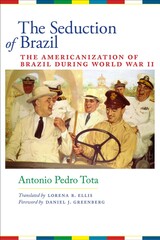 The Seduction of Brazil: The Americanization of Brazil during World War II
By Antonio Pedro Tota
University of Texas Press, 2009 Following completion of the U.S. air base in Natal, Brazil, in 1942, U.S. airmen departing for North Africa during World War II communicated with Brazilian mechanics with a thumbs-up before starting their engines. This sign soon replaced the Brazilian tradition of touching the earlobe to indicate agreement, friendship, and all that was positive and good—yet another indication of the Americanization of Brazil under way during this period. In this translation of O Imperialismo Sedutor, Antonio Pedro Tota considers both the Good Neighbor Policy and broader cultural influences to argue against simplistic theories of U.S. cultural imperialism and exploitation. He shows that Brazilians actively interpreted, negotiated, and reconfigured U.S. culture in a process of cultural recombination. The market, he argues, was far more important in determining the nature of this cultural exchange than state-directed propaganda efforts because Brazil already was primed to adopt and disseminate American culture within the framework of its own rapidly expanding market for mass culture. By examining the motives and strategies behind rising U.S. influence and its relationship to a simultaneous process of cultural and political centralization in Brazil, Tota shows that these processes were not contradictory, but rather mutually reinforcing. The Seduction of Brazil brings greater sophistication to both Brazilian and American understanding of the forces at play during this period, and should appeal to historians as well as students of Latin America, culture, and communications.
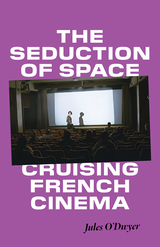 The Seduction of Space: Cruising French Cinema
Jules O'Dwyer
University of Minnesota Press, 2025 A bold and far-reaching new study of French queer cinema reimagines the relationship between sexuality and space Spatiality has long been a crucial and potent lens for understanding French culture and aesthetics. While canonical greats of French cinema such as Jean-Luc Godard, Agnès Varda, and Louis Malle invoked the notion of flânerie to explore ideas of modernism, spatial exploration, and urban sociality, Jules O’Dwyer demonstrates how a more recent generation of French queer filmmakers continues to engage with—and contest—this legacy by focusing attention on the cognate practice of cruising. Through the work of Jacques Nolot, Sébastien Lifshitz, Christophe Honoré, Vincent Dieutre, Alain Guiraudie, and others, The Seduction of Space draws film theory, queer studies, and spatial inquiry into close proximity to examine the politics of cruising and the gendering of space. Making the case that cinema not only documents the queer spaces of the past but continues to produce them, O’Dwyer maps the relationships between sex and spatiality as he takes up such varied topics as public sex in the porn theater, racial eroticization in the banlieue, and the ecocritical valences of rural cruising. Foregrounding the crucial role that spatiality plays in shaping the parameters of France’s visual cultures and political imaginary, The Seduction of Space is both an urgent queer reconceptualization of this tradition and a clarion call for film scholars to tarry with the politics of sexuality in all its messiness. Retail e-book files for this title are screen-reader friendly with images accompanied by short alt text and/or extended descriptions.
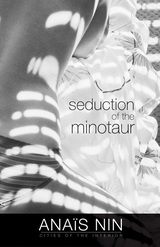 Seduction of the Minotaur
Anaïs Nin
Ohio University Press, 2014 “Some voyages have their inception in the blueprint of a dream, some in the urgency of contradicting a dream. Lillian’s recurrent dream of a ship that could not reach the water, that sailed laboriously, pushed by her with great effort, through city streets, had determined her course toward the sea, as if she would give this ship, once and for all, its proper sea bed…. With her first swallow of air she inhaled a drug of forgetfulness well known to adventurers.”
Seduction of the Minotaur is the fifth and final volume of Anaïs Nin’s continuous novel known as Cities of the Interior. First published by Swallow Press in 1961, the story follows the travels of the protagonist Lillian through the tropics to a Mexican city loosely based on Acapulco, which Nin herself visited in 1947 and described in the fifth volume of her Diary. As Lillian seeks the warmth and sensuality of this lush and intriguing city, she travels inward as well, learning that to free herself she must free the “monster” that has been confined in a labyrinth of her subconscious.
This new Swallow Press edition includes an introduction by Anita Jarczok, author of Inventing Anaïs Nin: Celebrity Authorship and the Creation of an Icon.
Swallow Press publishes all five volumes that make up Cities of the Interior: Ladders to Fire, Children of the Albatross, The Four-Chambered Heart, A Spy in the House of Love, and Seduction of the Minotaur.
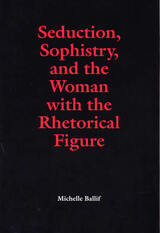 Seduction, Sophistry, and the Woman with the Rhetorical Figure
Michelle Ballif
Southern Illinois University Press, 2000 The rhetorical tradition, Michelle Ballif asserts, is based on the systematic exclusion of sophistry. In keeping with Aristotle’s prescription, rhetoric continues to be a counterpart to dialectic, a handmaiden to the pursuit of truth—even if that truth is merely probable. According to Ballif, this search for truth manifests itself among current rhetoric and composition scholars in the form of an assumption that language is primarily communicative (i.e., that language can represent truth more or less faithfully). Ballif shows how invested we are in the notion of truth, in the idea that language represents truth, and in the assumption that the speaking/writing subject has, or should have, some essential relation to truth. Provocatively, Ballif questions why the profession wants to retain these beliefs in the face of vociferous arguments from "new rhetorics" that the discipline no longer posits a foundational self or truth, and in the face of the poststructuralist critique, which has demonstrated that founding truth is always accomplished by first positing and then negating an “other.” As an alternative to this negative and violent rhetorical process, Ballif suggests a turn to sophistry as embodied in the figure of Woman, one with the power to seduce us (literally, to lead astray) from our truth and our demand for it. This figuration of Woman, however, is not the dialectical other used to sustain the identity and privilege of Man. On the contrary, this Woman is an Other Woman: A Third Woman as a Third Sophistic practice that escapes Plato’s binary (philosophic rhetoric vs. sophistry) and renders the distinction between truth and deception incalculable. Ballif examines three figurations of the Third Woman as Third Sophistic as offered by Gorgias, Friedrich Nietzsche, and Jean Baudrillard.
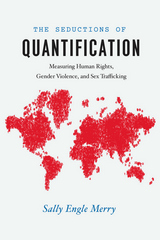 The Seductions of Quantification: Measuring Human Rights, Gender Violence, and Sex Trafficking
Sally Engle Merry
University of Chicago Press, 2016 We live in a world where seemingly everything can be measured. We rely on indicators to translate social phenomena into simple, quantified terms, which in turn can be used to guide individuals, organizations, and governments in establishing policy. Yet counting things requires finding a way to make them comparable. And in the process of translating the confusion of social life into neat categories, we inevitably strip it of context and meaning—and risk hiding or distorting as much as we reveal.
With The Seductions of Quantification, leading legal anthropologist Sally Engle Merry investigates the techniques by which information is gathered and analyzed in the production of global indicators on human rights, gender violence, and sex trafficking. Although such numbers convey an aura of objective truth and scientific validity, Merry argues persuasively that measurement systems constitute a form of power by incorporating theories about social change in their design but rarely explicitly acknowledging them. For instance, the US State Department’s Trafficking in Persons Report, which ranks countries in terms of their compliance with antitrafficking activities, assumes that prosecuting traffickers as criminals is an effective corrective strategy—overlooking cultures where women and children are frequently sold by their own families. As Merry shows, indicators are indeed seductive in their promise of providing concrete knowledge about how the world works, but they are implemented most successfully when paired with context-rich qualitative accounts grounded in local knowledge.
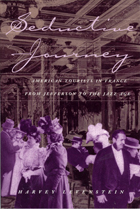 Seductive Journey: American Tourists in France from Jefferson to the Jazz Age
Harvey Levenstein
University of Chicago Press, 2000 For centuries, France has cast an extraordinary spell on travelers. Harvey Levenstein's Seductive Journey explains why so many Americans have visited it, and tells, in colorful detail, what they did when they got there. The result is a highly entertaining examination of the transformation of American attitudes toward French food, sex, and culture, as well as an absorbing exploration of changing notions of class, gender, race, and nationality.
Levenstein begins in 1786, when Thomas Jefferson instructed young upper-class American men to travel overseas for self-improvement rather than debauchery. Inspired by these sentiments, many men crossed the Atlantic to develop "taste" and refinement. However, the introduction of the transatlantic steamship in the mid-nineteenth century opened France to people further down the class ladder. As the upper class distanced themselves from the lower-class travelers, tourism in search of culture gave way to the tourism of "conspicuous leisure," sex, and sensuality. Cultural tourism became identified with social-climbing upper-middle-class women. In the 1920s, prohibition in America and a new middle class intent on "having fun" helped make drunken sprees in Paris more enticing than trudging through the Louvre. Bitter outbursts of French anti-Americanism failed to jolt the American ideal of a sensual, happy-go-lucky France, full of joie de vivre. It remained Americans' favorite overseas destination.
From Fragonard to foie gras, the delicious details of this story of how American visitors to France responded to changing notions of leisure and blazed the trail for modern mass tourism makes for delightful, thought-provoking reading.
"...a thoroughly readable and highly likable book."—Deirdre Blair, New York Times Book Review
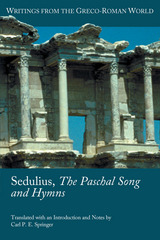 Sedulius, The Paschal Song and Hymns
Carl P. Springer
SBL Press, 2013 This is the first complete English translation of the poetic works of Sedulius, a Christian Latin poet of late antiquity whose biblical epic and hymns were enormously popular during the Middle Ages and the early modern period. The introduction places the poet and his works into his historical and literary contexts, followed by the Latin text of Sedulius’s poetic works with English translation on facing pages. Notes on linguistic and historical matters are designed to help the reader with little or no Latin and only some familiarity with Sedulius’s classical and biblical sources. Appendices supply texts and translations of incidental related materials, including Sedulius’s dedicatory letters; biographical notices, subscriptions, and laudatory poems associated with Sedulius’s works in the manuscript tradition; and representative excerpts from Sedulius’s own prose paraphrase of the Paschale Carmen. The volume includes a bibliography and index.
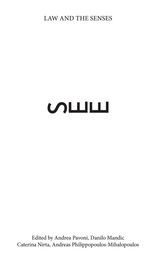 SEE
Andrea Pavoni, Danilo Mandic, Caterina Nirta and Andreas Philippopoulos-Mihalopoulos
University of Westminster Press, 2018 Vision traditionally occupies the height of the sensorial hierarchy. The sense of clarity and purity conveyed by vision, allows it to be explicitly associated with truth and knowledge. The law has always relied on vision and representation, from eye-witnesses to photography, to imagery and emblems. The law and its normative gaze can be understood as that which decrees what is permitted to be and become visible and what is not. Indeed, even if law’s perspectival view is bound to be betrayed by the realities of perception, it is nonetheless productive of real effects on the world. This first title in the interdisciplinary series ‘Law and the Senses’ asks how we can develop new theoretical approaches to law and seeing that go beyond a simple critique of the legal pretension to truth. This volume aims to understand how law might see and unsee, and how in its turn is seen and unseen. It explores devices and practices of visibility, the evolution of iconology and iconography, and the relation between the gaze of the law and the blindness of justice. The contributions, all radically interdisciplinary, are drawn from photography, legal theory, philosophy, and poetry.
See How They Ran: The Changing Role of the Presidential Candidate, Revised and Explanded Edition
Gil Troy
Harvard University Press, 1996 Many Americans feel that presidentials have become inordinately expensive, shallow, and vulgar. The seemingly endless contest even appears to discourage the most suitable candidates from seeking the highest office in the land. Frustrated, we long for the good old days of dignified campaigns and worthy candidates. As Troy's fascinating history demonstrates, however, they never existed.
This definitive volume examines every presidential campaign from 1840 to the present to explore why candidates campaign as they do, and why Americans complain about it. Troy reveals what our presidential campaigns tell us about American democracy itself.
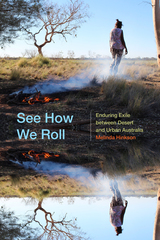 See How We Roll: Enduring Exile between Desert and Urban Australia
Melinda Hinkson
Duke University Press, 2021 In See How We Roll Melinda Hinkson follows the experiences of Nungarrayi, a Warlpiri woman from the Central Australian desert, as she struggles to establish a new life for herself in the city of Adelaide. Banished from her hometown, Nungarrayi energetically navigates promises of transformation as well as sedimented racialized expectations on the urban streets. Drawing on a decades-long friendship, Hinkson explores these circumstances through Nungarrayi's relationships: those between her country and kin that sustain and confound life beyond the desert, those that regulate her marginalized citizenship, and the new friendships called out by displacement and metropolitan life. An intimate ethnography, See How We Roll provides great insight into the enduring violence of the settler colonial state while illuminating the efforts of Indigenous people to create lives of dignity and shared purpose in the face of turbulence, grief, and tightening governmental controls.
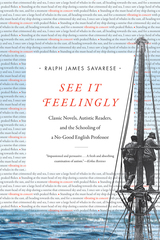 See It Feelingly: Classic Novels, Autistic Readers, and the Schooling of a No-Good English Professor
Ralph James Savarese
Duke University Press, 2018 “We each have Skype accounts and use them to discuss [Moby-Dick] face to face. Once a week, we spread the worded whale out in front of us; we dissect its head, eyes, and bones, careful not to hurt or kill it. The Professor and I are not whale hunters. We are not letting the whale die. We are shaping it, letting it swim through the Web with a new and polished look.”—Tito Mukhopadhyay
Since the 1940s researchers have been repeating claims about autistic people's limited ability to understand language, to partake in imaginative play, and to generate the complex theory of mind necessary to appreciate literature. In See It Feelingly Ralph James Savarese, an English professor whose son is one of the first nonspeaking autistics to graduate from college, challenges this view.
Discussing fictional works over a period of years with readers from across the autism spectrum, Savarese was stunned by the readers' ability to expand his understanding of texts he knew intimately. Their startling insights emerged not only from the way their different bodies and brains lined up with a story but also from their experiences of stigma and exclusion.
For Mukhopadhyay Moby-Dick is an allegory of revenge against autism, the frantic quest for a cure. The white whale represents the autist's baffling, because wordless, immersion in the sensory. Computer programmer and cyberpunk author Dora Raymaker skewers the empathetic failings of the bounty hunters in Philip K. Dick's Do Androids Dream of Electric Sheep? Autistics, some studies suggest, offer instruction in embracing the nonhuman. Encountering a short story about a lonely marine biologist in Antarctica, Temple Grandin remembers her past with an uncharacteristic emotional intensity, and she reminds the reader of the myriad ways in which people can relate to fiction. Why must there be a norm?
Mixing memoir with current research in autism and cognitive literary studies, Savarese celebrates how literature springs to life through the contrasting responses of unique individuals, while helping people both on and off the spectrum to engage more richly with the world.
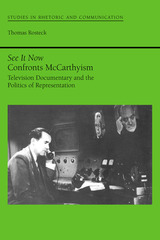 See It Now Confronts McCarthyism: Television Documentary and the Politics of Representation
Thomas Rosteck
University of Alabama Press, 1994 Seeks evidence from media artifacts to reveal aesthetic, cultural, ideological, generic, and historical dimensions from classic television broadcasts
See It Now, Edward R. Murrow and Fred W. Friendly’s early documentary television program, has come to be recognized as the exemplar of nonfiction television. One important element in its reputation is a series of four telecasts directly dealing with abuses of McCarthyism and the Red Scare. This book is about those programs, but it is also about the early 1950s in America, the troubled era in which these programs were broadcast. This book is, then, both cultural history and media analysis.
As media analysis, this book seeks to understand the symbolic form, the aesthetic construction, and the subsequent experience that these four programs offered viewers. This sort of critical analysis is a development of recent vintage in American media studies. Whereas a decade ago television and the media were studied largely through an empiricist social scientific paradigm, now humanistic approaches to media discourses engage the interest of scholars in history, rhetoric and communication, political science, anthropology, and American studies. As case study, then, this book bridges classical humanist and contemporary mass media approaches, and as we go, I shall essay the utility of humanistic methods for the understanding and explication of mass media that is primarily visual in nature.
As cultural history, this book seeks to illuminate a unique era in the recent American past. My aim is to understand the programs as articulations of public “common sense” and as artifacts that help convey this common sense. Thus, a second theme of this book will be to locate-through the analysis of public discourse cast in the television documentary form—an American ideology: a set of “templates” that both ground the programs and reveal the cultural assumptions of the historical period.
In addition, from a slightly different historical perspective, our increased understanding of these See It Now broadcasts gives us an appreciation of the development of the television industry and the genre of television documentary. Coming at a time when few Americans had television sets, these See It Now programs coincided with an exponential increase in television ownership and popularity. As an elaborate defense of free speech for the medium, these documentaries may have helped to establish autonomy and a direction for a nascent broadcasting industry. More specifically, as the paradigm for the television documentary and as the first regularly scheduled documentary series, these See It Now programs shaped expectations and set the benchmark to which all nonfiction television, from Twentieth Century to White Paper to Sixty Minutes, has been compared. Thus, a third theme will be the implications of these seminal programs for media institutions and for the genre of television news documentary.
See Jack
Russell Edson
University of Pittsburgh Press, 2009
“An artist who moonlights as a dentist. A worm who's eternal. A farmer who milks his cow to death. Not to mention the guy with a belly button for an eye. Russell Edson, self-named Little Mr. Prose Poem, returns with See Jack, a book of fractured fairy tales, whose impeccable logic undermines logic itself, a book that champions what he has called elsewhere 'the dark uncomfortable metaphor.' 'What better way to die,' he writes in the final prose poem, 'than waiting for the fat lady to sing in the make-believe of theater, where nothing's real, not the fat lady, not even death . . . ' See Jack may be Edson's best book yet—proof that his imaginative powers keep growing. What a deliciously scary thought!”
—Peter Johnson
See Jane Run: How Women Politicians Matter for Young People
David E. Campbell and Christina Wolbrecht
University of Chicago Press, 2025 The definitive analysis of how the presence of women politicians affects young people. From Kamala Harris to Nikki Haley, women in public life are widely expected to inspire young people, especially girls, to follow in their footsteps. See Jane Run provides the definitive analysis of women politicians as role models. With wide-ranging data and attention to gender, race, and party, David E. Campbell and Christina Wolbrecht find that women in politics help convince young people, regardless of gender, that women are capable of political leadership. For young women, women role models enhance faith in democracy and inspire political engagement, including running for office themselves. As role models, women politicians help ensure a more inclusive democracy.
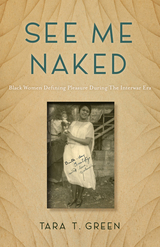 See Me Naked: Black Women Defining Pleasure in the Interwar Era
Tara T. Green
Rutgers University Press, 2022 Pleasure refers to the freedom to pursue a desire, deliberately sought in order to satisfy the self. Putting pleasure first is liberating. During their extraordinary lives, Lena Horne, Moms Mabley, Yolande DuBois, and Memphis Minnie enjoyed pleasure as they gave pleasure to both those in their lives and to the public at large. They were Black women who, despite their public profiles, whether through Black society or through the world of entertainment, discovered ways to enjoy pleasure.They left home, undertook careers they loved, and did what they wanted, despite perhaps not meeting the standards for respectability in the interwar era. See Me Naked looks at these women as representative of other Black women of the time, who were watched, criticized, and judged by their families, peers, and, in some cases, the government, yet still managed to enjoy themselves. Among the voyeurs of Black women was Langston Hughes, whose novel Not Without Laughter was clearly a work of fiction inspired by women he observed in public and knew personally, including Black clubwomen, blues performers, and his mother. How did these complicated women wrest loose from the voyeurs to define their own sense of themselves? At very young ages, they found and celebrated aspects of themselves. Using examples from these women’s lives, Green explores their challenges and achievements.
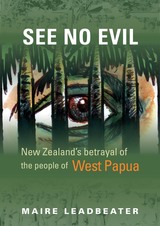 See No Evil: New Zealand’s Betrayal of the People of West Papua
Maire Leadbeater
University of Cincinnati Press, 2018 See No Evil issues a challenge to New Zealanders. The book begins by relating the little-known history of West Papua, but its focus is on the impact of New Zealand’s foreign policy on the indigenous Melanesian inhabitants. In the 1950s New Zealand supported self-determination for the former Dutch colony, but in 1962 opted to back Indonesia as it took over the territory. Delving deep into historical government archives, many of them obtained under the Official Information Act, this meticulously researched book uncovers the untold story of New Zealand’s unprincipled and often hypocritical diplomacy. The consequences of repressive Indonesian rule have been tragic for the West Papuan people, who are experiencing ‘slow genocide’. West Papua remains largely closed to foreign journalists, but its story is now beginning to be heard. A growing number of Pacific Island nations are calling for change, but so far New Zealand has opted for caution and collusion to preserve a ‘business as usual’ relationship with Indonesia.
See No Evil is a shocking account by one of New Zealand’s most respected authors on peace and Pacific issues, issuing a powerful call for a just and permanent solution – self-determination – for the people of West Papua.
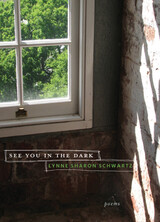 See You in the Dark: Poems
Lynne Sharon Schwartz
Northwestern University Press, 2012 An acclaimed novelist, essayist, memoirist, and translator, Lynne Sharon Schwartz has written that she began writing "before [she] knew about the strictures of literary genres: poem, story, essay." What she wrote as a child was "poetic speculation . . . partaking of all the genres and bounded by none." It is not surprising, then, that her facility with, and love of, language and speculation are on display in her new collection of poetry, See You in the Dark.
Despite her indifference to genre, Schwartz takes a profound delight in poetic forms, appropriating the sonnet, the prose poem, and the envoi. She brings an easygoing musicality to her work, which ranges from parodic translations of Verlaine to instructions for making the perfect soup to a meditation on an Ecstasy trip. No artificial line between high and low culture divides Schwartz's world: she is equally intrigued by the metaphor of gardening, the work of artist Jenny Holzer, the bandits Frank and Jesse James (maybe distant relatives of Henry and William?), and the unintentional poetry of Craigslist's "missed connection" section.
Filled with wisdom, humor, and deep insight, See You in the Dark is poetry for readers not bounded by genre.
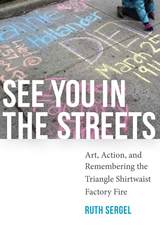 See You in the Streets: Art, Action, and Remembering the Triangle Shirtwaist Factory Fire
Ruth Sergel
University of Iowa Press, 2016 2017 American Book Award Winner from the Before Columbus Foundation
In 1911, a fire at the Triangle Shirtwaist Factory in New York City took the lives of 146 workers, most of them young immigrant women and girls. Their deaths galvanized a movement for social and economic justice then, but today’s laborers continue to battle dire working conditions. How can we bring the lessons of the Triangle fire back into practice today? For artist Ruth Sergel, the answer was to fuse art, activism, and collective memory to create a large-scale public commemoration that invites broad participation and incites civic engagement. See You in the Streets showcases her work.
It all began modestly in 2004 with Chalk, an invitation to all New Yorkers to remember the 146 victims of the fire by inscribing their names and ages in chalk in front of their former homes. This project inspired Sergel to found the Remember the Triangle Fire Coalition, a broad alliance of artists and activists, universities and unions—more than 250 partners nationwide—to mark the 2011 centennial of the infamous blaze. Putting the coalition together and figuring what to do and how to do it were not easy. This book provides a lively account of the unexpected partnerships, false steps, joyous collective actions, and sustainability of such large public works. Much more than an object lesson from the past, See You in the Streets offers an exuberant perspective on building a social art practice and doing public history through argument and agitation, creativity and celebration with an engaged public.
See You Soon: Poems
Laura McKee
University of Arkansas Press, 2016 Finalist, 2016 Miller Williams Poetry Prize The poems in See You Soon explore the limits of metaphor and language as their voices speak from the beauty and strangeness of daily experience, testing how we make sense of ourselves to ourselves and to one another. There is love in these poems, there is failure and absurdity. The characters, in their various situations and guises, find themselves outside of time, space, and identity—at sunset, in an airport, outside a hookah lounge, as a birthday party clown, after a flood. Its message is the invitation of the title. See You Soon is a statement of the complexity of our mutual direction in time, of camaraderie along the way.
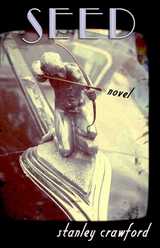 Seed: A Novel
Stanley Crawford
University of Alabama Press, 2015 Seed is the story of Bill Starr’s final days. Childless but with a lifetime’s worth of possessions and a nearly infinite web of extended family, Bill endeavors to empty his house completely before he dies by summoning distant relatives to claim their inheritance. Many of his letters go unanswered, but those who do appear show up only to find that their reward is often much less valuable than they might expect.
What they get instead are Bill’s memories, made vivid by each item from the past, memories that are more exotic and curious than the lives currently lived by his young relatives.
Accompanied by his housekeeper, Ramona, and his young gardener, Jonathan, Bill is a somewhat cantankerous, wildly intelligent, and often forgetful man who recalls and speaks to his passed wife, often thinking that she's not dead. His unwillingness to recognize what has happened to her and to give away his only possession of any value, a 1937 Pierce-Arrow automobile that they bought together, becomes the measure of his grief and of his love in this profoundly funny novel that faces death and love sincerely.
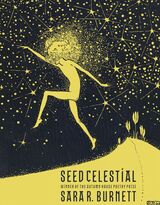 Seed Celestial
Sara R. Burnett
Autumn House Press, 2022 Poems reflecting on contemporary political issues, mythological origins, and the capacity for hope in the face of uncertain futures.
This collection weaves together themes of motherhood, immigration, social transformation, and interrogation. Throughout Seed Celestial, Sara R. Burnett writes haunting reflections on origins—of myth and memory, language and country, earth and mothers—as she looks to an uncertain future.
Bringing together contemporary issues of climate change, gun violence, and feminism while working from her own experience of raising a young daughter, she writes, “You were inside my body / while I was outside; / outside was everything else.” Burnett vividly renders her own origin story as an immigrant’s daughter using the myths of Demeter and Persephone. This book is a love letter to the earth the way only a mother can write it: appreciating all its faults while seeing its beauty. Burnett offers a poetry collection that is tender, and honest, akin to having an intimate conversation with a friend who tells us what we know to be true about ourselves, our twin capacities for love and violence, and what we don’t. She intertwines our violent, complicated world with the uncanny human capacity for hope and describes the awe of a world recreating itself again and again while wondering about all we lose and leave behind, especially for the next generation.
Seed Celestial is the winner of the 2021 Autumn House Press Poetry Prize, selected by Eileen Myles.
Seed of Sarah: Memoirs of a Survivor
Judith Magyar Isaacson
University of Illinois Press, 1990 This gripping and highly acclaimed account of a young woman's experience in concentration camps now includes a final chapter, "A Time to Forgive?" detailing the author's trips back to her former forced labor camp in Germany.
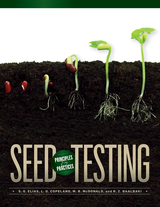 Seed Testing: Principles and Practices
Sabry G. Elias
Michigan State University Press, 2012 An essential reference for students, seed technologists, researchers, and seed industry personnel, this comprehensive guide outlines the most widely performed modern seed quality tests, explores the principles behind them, the history of seed testing, why seeds are tested and when, and sampling, sub-sampling, seed laboratory management, accreditation, and seed quality assurance programs. The authors describe statistical applications to seed testing and tolerances, and they provide a detailed morphological and structural description of seed formation and development. The book examines the testing of genetic traits and transgenic seeds, including DNA and protein genetic purity tests, and cultivar purity identification for conventional seeds. In addition to the most common seed purity and viability tests, tests for seed and seedling vigor, seed-borne diseases and seed moisture determination are also discussed.
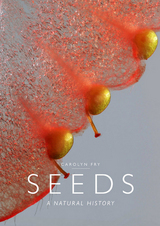 Seeds: A Natural History
Carolyn Fry
University of Chicago Press, 2016 From the magnificence of a towering redwood to the simple elegance of a tiny dandelion, seed-bearing plants abound on planet Earth. The sheer diversity of plants thriving today is largely thanks to the evolution of the seed, as this made plants resilient to environmental changes by enabling them to await optimum conditions for growth before springing to life. In a time of declining biodiversity, studying seeds is now helping scientists preserve this plant diversity for future generations.
With Seeds, Carolyn Fry offers a celebration of these vital but unassuming packages of life. She begins with a sweeping tour through human history, designed to help us understand why we should appreciate and respect these floral parcels. Wheat, corn, and rice, she reminds us, supply the foundations of meals eaten by people around the world. Countless medicines, oils, clothing materials, and building supplies are available only because of the versatility and variety of seed-bearing plants. Fry then provides a comprehensive history of the evolution of seeds, explaining the myriad ways that they have adapted, survived, and thrived across the globe. Delving deeper into the science of seeds, she reveals the fascinating processes of dormancy, reproduction, germination, and dispersal, and showcases the estimable work conservationists are doing today to gather and bank seeds in order to prevent species from going extinct.
Enriched by a stunning array of full-color images, Seeds offers a comprehensive exploration of some of the most enduring and essential players in the natural world.
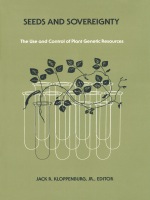 Seeds and Sovereignty: Debate Over the Use and Control of Plant Genetic Resources
Jack R. Jr. Kloppenburg, ed.
Duke University Press, 1988 Seeds for economically important crops are big business indeed. As large seed companies continue to improve their product in various ways, they make use of the original gene pools of these plants, often located in tropical and subtropical areas of the world. With increasing recognition that plant germplasm is an important raw material, highly charged international disputes have developed over the exchange and use of this material, adding another point of contention between poor nations and the manufacturing wealthier ones.
Twenty experts from several nations, representing both the natural and social sciences, consider the historical background, the issue of patent rights as applied to plant germplasm, the nature of global genetic interdependence, the internationalization of the seed industry, the implications of biotechnology on genetic resources, the Third World attitude toward the debate, and the viewpoints of the International Agricultural Research Centers.
 Seeds in Soil: Planting a Garden and Finding Your Roots
Susan Apps-Bodilly
Wisconsin Historical Society Press, 2022 Take learning outdoors and empower young readers to plant their own gardens while digging deeper into related science and history lessons in this “soil to supper” book designed for kids and adults to use together. Packed with hands-on activities, fun projects, and fresh recipes, this colorful gardening guide provides opportunities for kids to observe, explore, and ask questions while engaging their
natural curiosity about nature. Seeds in Soil includes all the details to start planting and growing, whether working with a whole yard, a community or school garden, or just a balcony.
Chapters feature advice for selecting the seeds and tools to get started; ideas for planning and being creative in the garden; and tips for harvesting, storing, and cooking with fresh produce. Written by a second-grade teacher, the book includes engaging lessons about the science of climate, soil, and pollinators; and connections to history through the stories of First Nations and immigrant gardeners. Told through the author’s family stories and experience, Seeds in Soil will get kids having fun in the garden while digging, planting, growing, and finding their roots.
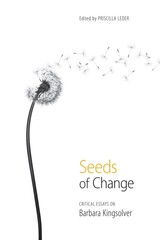 Seeds of Change: Critical Essays on Barbara Kingsolver
Priscilla Leder
University of Tennessee Press, 2010
Barbara Kingsolver's books have sold millions of copies. The Poisonwood Bible was nominated for the Pulitzer Prize, and her work is studied in courses ranging from English-as-a-second-language classes to seminars in doctoral programs. Yet, until now, there has been relatively little scholarly analysis of her writings.
Seeds of Change: Critical Essays on Barbara Kingsolver, edited by Priscilla V. Leder, is the first collection of essays examining the full range of Kingsolver's literary output. The articles in this new volume provide analysis, context, and commentary on all of Kingsolver's novels, her poetry, her two essay collections, and her full-length nonfiction memoir, Animal, Vegetable, Miracle: A Year of Food Life.
Professor Leder begins Seeds of Change with a brief critical biography that traces Kingsolver's development as a writer. Leder also includes an overview of the scholarship on Kingsolver's oeuvre. Organized by subject matter, the 14 essays in the book are divided into three sections tha deal with recurrent themes in Kingsolver's compositions: identity, social justice, and ecology.
The pieces in this ground-breaking volume draw upon contemporary critical approaches—ecocritical, postcolonial, feminist, and disability studies—to extend established lines of inquiry into Kingsolver's writing and to take them in new directions. By comparing Kingsolver with earlier writers such as Joseph Conrad and Henry David Thoreau, the contributors place her canon in literary context and locate her in cultural contexts by revealing how she re-works traditional narratives such as the Western myth. They also address the more controversial aspects of her writings, examining her political advocacy and her relationship to her reader, in addition to exploring her vision of a more just and harmonious world.
Fully indexed with a comprehensive works-cited section, Seeds of Change gives scholars and students important insight and analysis which will deepen and broaden their understanding and experience of Barbara Kingsolver's work.
 Seeds of Change: The Story of ACORN, America's Most Controversial Antipoverty Community Organizing Group
John Atlas
Vanderbilt University Press, 2010 "There is more value on a single page of Seeds of Change than in a year's worth of Rush Limbaugh screeds combined with a lifetime of Sarah Palin sneers at community organizers." --Todd Gitlin Seeds of Change goes beyond the headlines of the last Presidential campaign to describe what really happened in ACORN's massive voter registration drives, why it triggered an unrelenting attack by Fox News and the Republican Party, and how it confronted its internal divisions and scandals. Based on Atlas's own eyewitness original reporting, as the only journalist to have access to ACORN's staff and board meetings, this book documents the critical transition from founder Wade Rathke, a white New Orleans radical to Bertha Lewis, a Brooklyn African American activist. The story begins in the 1970s, when a small group of young men and women, led by a charismatic college dropout, began a quest to help the powerless help themselves. In a tale full of unusual characters and dramatic conflicts, the book follows the ups and downs of ACORN's organizers and members as they confront big corporations and unresponsive government officials in Albuquerque, Brooklyn, Chicago, Detroit, Little Rock, New Orleans, Philadelphia, and the Twin Cities. The author follows the course of local and national campaigns to organize unions, fight the subprime mortgage crisis, promote living wages for working people, struggle for affordable housing and against gentrification, and help Hurricane Katrina's survivors return to New Orleans. The book dispels the conservative myth that we can only help the poor through private soup kitchens and charity and the liberal myth that the solution rests simply with more government services. Seeds of Change, not only provides a gripping look at ACORN's four decades of effective organizing, but also offers a hopeful analysis of the potential for a revival of real American democracy.
An offering of The Progressive Book Club.
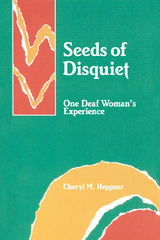 Seeds of Disquiet
Cheryl Heppner
Gallaudet University Press, 1992 In her autobiography Seeds of Disquiet, Cheryl Heppner writes of experiencing severe hearing loss twice. Spinal meningitis caused a profound loss of hearing when she was six, and for the next 18 years she worked hard to live the life of a “normal” hearing person. Through exhaustive work in speech therapy and speechreading, she excelled in school and college, performing Herculean feats without the assistance of trained interpreters or notetakers. Then, when she was 25, two strokes left her completely deaf. For the next 20 years she worked to recreate her life through sign language and the Deaf community. The process stunned her by revealing how much she had missed before. Initially embittered, Cheryl Heppner later went on to use her astonishing energy as an advocate for deaf and hard of hearing people. Seeds of Disquiet celebrates her accomplishments, the most significant of which, perhaps, was her reconciliation with her loved ones from her former life with her new outlook.
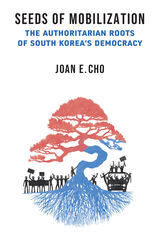 Seeds of Mobilization: The Authoritarian Roots of South Korea's Democracy
Joan E. Cho
University of Michigan Press, 2024 South Korea is sometimes held as a dream case of modernization theory, a testament to how economic development leads to democracy. Seeds of Mobilization takes a closer look at the history of South Korea to show that Korea’s advance to democracy was not linear. Instead, while Korea’s national economy grew dramatically under the regimes of Park Chung Hee (1961–79) and Chun Doo Hwan (1980–88), the political system first became increasingly authoritarian. Because modernization was founded on industrial complexes and tertiary education, these structures initially helped bolster the authoritarian regimes. In the long run, however, these structures later facilitated the anti-regime protests by various social movement groups—most importantly, workers and students—that ultimately brought democracy to the country.
By using original subnational protest event datasets, government publications, oral interviews, and publications from labor and student movement organizations, Joan E. Cho takes a long view of democratization that incorporates the decades before and after South Korea’s democratic transition. She demonstrates that Korea’s democratization resulted from a combination of factors from below and from above, and that authoritarian development itself was a hidden root cause of democratic development in South Korea. Seeds of Mobilization shows how socioeconomic development did not create a steady pressure toward democracy but acted as a “double-edged sword” that initially stabilized autocratic regimes before destabilizing them over time.
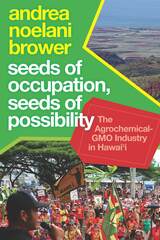 Seeds of Occupation, Seeds of Possibility: The Agrochemical-GMO Industry in Hawai‘i
Andrea Noelani Brower
West Virginia University Press, 2022 How Hawaiʻi became the epicenter of the biotech seed industry, and how a resistance movement arose to confront the industry’s power.
Hawaiʻi is a primary site for development of herbicide-resistant corn seed and, until recently, was host to more experimental field trials of genetically engineered crops than anywhere else in the world. It is also a node of powerful resistance. While documentaries and popular news stories have profiled the biotech seed industry in Hawaiʻi, Seeds of Occupation, Seeds of Possibility is the first book to detail the social and historical conditions by which the chemical-seed oligopoly came to occupy the most geographically isolated islands in the world and made the soils of Hawaiʻi the epicenter of agrochemical and agricultural biotechnology testing.
Andrea Brower, an activist-scholar from Hawaiʻi, examines the consequences related to genetically engineered seed development for Hawaiʻi’s people and the social movement that has risen in response. With insights beyond the islands, Seeds of Occupation, Seeds of Possibility illuminates why visions for a radically better world must be expanded by intersectional and systemically oriented movements.
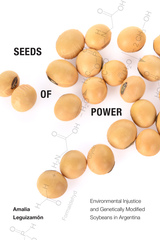 Seeds of Power: Environmental Injustice and Genetically Modified Soybeans in Argentina
Amalia Leguizamón
Duke University Press, 2020 In 1996 Argentina adopted genetically modified (GM) soybeans as a central part of its national development strategy. Today, Argentina is the third largest global grower and exporter of GM crops. Its soybeans—which have been modified to tolerate being sprayed with herbicides—now cover half of the country's arable land and represent a third of its total exports. While soy has brought about modernization and economic growth, it has also created tremendous social and ecological harm: rural displacement, concentration of landownership, food insecurity, deforestation, violence, and the negative health effects of toxic agrochemical exposure. In Seeds of Power Amalia Leguizamón explores why Argentines largely support GM soy despite the widespread damage it creates. She reveals how agribusiness, the state, and their allies in the media and sciences deploy narratives of economic redistribution, scientific expertise, and national identity as a way to elicit compliance among the country’s most vulnerable rural residents. In this way, Leguizamón demonstrates that GM soy operates as a tool of power to obtain consent, to legitimate injustice, and to quell potential dissent in the face of environmental and social violence.
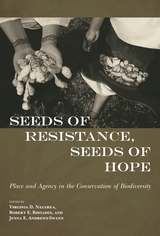 Seeds of Resistance, Seeds of Hope: Place and Agency in the Conservation of Biodiversity
Edited by Virginia D. Nazarea, Robert E. Rhoades, and Jenna E. Andrews-Swann
University of Arizona Press, 2013 Food is more than simple sustenance. It feeds our minds as well as our bodies. It nurtures us emotionally as well as physically. It holds memories. In fact, one of the surprising consequences of globalization and urbanization is the expanding web of emotional attachments to farmland, to food growers, and to place. And there is growing affection, too, for home gardening and its “grow your own food” ethos. Without denying the gravity of the problems of feeding the earth’s population while conserving its natural resources, Seeds of Resistance, Seeds of Hope reminds us that there are many positive movements and developments that demonstrate the power of opposition and optimism.
This broad collection brings to the table a bag full of tools from anthropology, sociology, genetics, plant breeding, education, advocacy, and social activism. By design, multiple voices are included. They cross or straddle disciplinary, generational, national, and political borders. Contributors demonstrate the importance of cultural memory in the persistence of traditional or heirloom crops, as well as the agency exhibited by displaced and persecuted peoples in place-making and reconstructing nostalgic landscapes (including gardens from their homelands). Contributions explore local initiatives to save native and older seeds, the use of modern technologies to conserve heirloom plants, the bioconservation efforts of indigenous people, and how genetically modified organisms (GMOs) have been successfully combated. Together they explore the conservation of biodiversity at different scales, from different perspectives, and with different theoretical and methodological approaches. Collectively, they demonstrate that there is reason for hope.
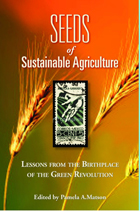 Seeds of Sustainability: Lessons from the Birthplace of the Green Revolution in Agriculture
Edited by Pamela A. Matson
Island Press, 2012 Seeds of Sustainability is a groundbreaking analysis of agricultural development and transitions toward more sustainable management in one region. An invaluable resource for researchers, policymakers, and students alike, it examines new approaches to make agricultural landscapes healthier for both the environment and people.
The Yaqui Valley is the birthplace of the Green Revolution and one of the most intensive agricultural regions of the world, using irrigation, fertilizers, and other technologies to produce some of the highest yields of wheat anywhere. It also faces resource limitations, threats to human health, and rapidly changing economic conditions. In short, the Yaqui Valley represents the challenge of modern agriculture: how to maintain livelihoods and increase food production while protecting the environment.
Renowned scientist Pamela Matson and colleagues from leading institutions in the U.S. and Mexico spent fifteen years in the Yaqui Valley in Sonora, Mexico addressing this challenge. Seeds of Sustainability represents the culmination of their research, providing unparalleled information about the causes and consequences of current agricultural methods. Even more importantly, it shows how knowledge can translate into better practices, not just in the Yaqui Valley, but throughout the world.
 The Seeds of Triumph: Church and State in Gomulka's Poland
Hannah Diskin
Central European University Press, 2001 The Roman Catholic Church has played a unique role in the history of Poland in the twentieth century: the people and the Church drew closer and closer together during Nazi rule, the Stalinist period and the somewhat milder, though strongly anti-religious and repressive Gomulka regime (1956-1970). The power struggle between the Church and the communist government did in fact play a role in shaping world politics, the Polish Church having been the force behind the opposition movement in Poland. Against this background, a Polish pope appeared and made a major contribution to the collapse of communism. The Seeds of Triumph, the most comprehensive recent book on the opposition of Church and State in post-war Poland, compares the characteristics and consequences of this relationship during three different periods: the first and second periods of Gomulka's rule, and the Stalinist era between the two Gomulka periods. It examines the balance of power, studying to what degree the Church and other factors in the political environment influenced governmental policy-making. The author disproves the common stereotype, held at the time, that domestic conditions played only a marginal role. In examining the regime's policies, she covers the legal background, the general policy characteristics, the specific policies implemented during the period, and the role of the individual actors, most notably the pivotal role of the two main protagonists, Cardinal Wyszynski and Wladislaw Gomulka. In her landmark study, Diskin makes a significant contribution to the study of authoritarian systems and greatly enhances our understanding of the centrality of the Church in recent Polish history.
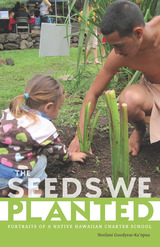 The Seeds We Planted: Portraits of a Native Hawaiian Charter School
Noelani Goodyear-Ka'opua
University of Minnesota Press, 2013
In 1999, Noelani Goodyear-Ka‘ōpua was among a group of young educators and parents who founded Hālau Kū Māna, a secondary school that remains one of the only Hawaiian culture-based charter schools in urban Honolulu. The Seeds We Planted tells the story of Hālau Kū Māna against the backdrop of the Hawaiian struggle for self-determination and the U.S. charter school movement, revealing a critical tension: the successes of a school celebrating indigenous culture are measured by the standards of settler colonialism.
How, Goodyear-Ka‘ōpua asks, does an indigenous people use schooling to maintain and transform a common sense of purpose and interconnection of nationhood in the face of forces of imperialism and colonialism? What roles do race, gender, and place play in these processes? Her book, with its richly descriptive portrait of indigenous education in one community, offers practical answers steeped in the remarkable—and largely suppressed—history of Hawaiian popular learning and literacy. This uniquely Hawaiian experience addresses broader concerns about what it means to enact indigenous cultural–political resurgence while working within and against settler colonial structures. Ultimately, The Seeds We Planted shows that indigenous education can foster collective renewal and continuity.
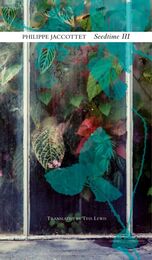 Seedtime III: Notebooks, 1995–1998
Phlippe Jaccottet
Seagull Books, 2021 Writers’ notebooks sometimes prove more revelatory than diaries or intimate journals. At first they might appear to be rag-and-bone shops of ideas, insights, hesitations, doubts, and records of things seen, heard, read, dreamt. But eventually they coalesce into a labyrinthine map of the creative process. Swiss poet Philippe Jaccottet has faithfully kept notebooks for many decades, and the selections that make up the Seedtime volumes have retained a vividness of insight and discovery despite the passage of time. After all, as the poet himself says, his notebooks are “a collection of delicate seeds with which I try to replant my ‘spiritual forest.’”
Seedtime III, which brings this series to a close, records numerous fleeting thoughts, ephemeral experiences, and philosophical observations from a renowned poet well into his seventies, charting the single steps—sometimes forwards, sometimes back—taken in a lifelong attempt to transcend the limits of art. The inconclusive nature of the notebook entries, their tentativeness and lack of resolution, renders them as intriguing and evocative as some of Jaccottet’s best works. In them readers will find a life full of the kind of contemplation that attracts yet eludes most of us in our daily existence.
 Seedtime of Reform: American Social Service and Social Action, 1918-1933
Clarke A. Chambers
University of Minnesota Press, 1963 Seedtime of Reform was first published in 1963. Minnesota Archive Editions uses digital technology to make long-unavailable books once again accessible, and are published unaltered from the original University of Minnesota Press editions. This is a detailed history of the social welfare movement in the United States during the period from the end of World War I to the inauguration of President Franklin D. Roosevelt, an era which most historians characterize as one of normalcy and reaction. In his book Professor Chambers demonstrates that this was actually a seedtime of reform, a period when the groundwork was laid for many of the sweeping social changes which were to take place under the New Deal. While it is true, as the author points out, that the years from 1918 to 1933 were not hospitable to the cause of reform, it was during these years that reform leaders and welfare workers (and the associations and agencies they directed) elaborated new theories and programs of action to alleviate, prevent, and overcome certain persisting social ills. Although little was constructively achieved until new political leadership, operating in the context of acute and prolonged economic crisis, acted in the 1930s, much of what we identify as the New Deal was rooted not only in prewar progressivism but in the research, agitation, and welfare services of the 1920s as well. Reformers and welfare workers made especially significant contributions in the areas of housing, social security, public works, federal responsibility for dependent groups in society, and working conditions.
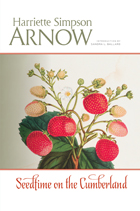 Seedtime on the Cumberland
Harriette Simpson Arnow
Michigan State University Press, 2013 Harriette Arnow’s roots ran deep into the Cumberland River country of Kentucky and Tennessee, and out of her closeness to that land and its people comes this remarkable history. The first of two companion volumes, Seedtime on the Cumberland captures the triumphs and tragedies of everyday life on the frontier, a place where the land both promised and demanded much. In the years between 1780 and 1803, this part of the country presented tremendous opportunity to those who endeavored to make a new life there. Drawing on an extensive body of primary sources—including family journals, court records, and personal inventories—Arnow paints a stirring portrait of these intrepid people. Like the midden at some ancient archaeological site, these accumulated items become a treasure awaiting the insight and organization of an interpreter. Arnow also draws on a medium she believed in unerringly—oral history, the rich tradition that shaped so much of her own family and regional experience. A classic study of the Old Southwest, Seedtime on the Cumberland documents with stirring perceptiveness the opening of the Appalachian frontier, the intersection of settlers and Native Americans, and the harsh conditions of life in the borderlands.
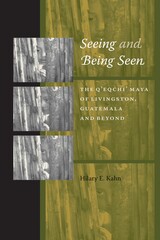 Seeing and Being Seen: The Q'eqchi' Maya of Livingston, Guatemala, and Beyond
By Hilary E. Kahn
University of Texas Press, 2006 The practice of morality and the formation of identity among an indigenous Latin American culture are framed in a pioneering ethnography of sight that attempts to reverse the trend of anthropological fieldwork and theory overshadowing one another. In this vital and richly detailed work, methodology and theory are treated as complementary partners as the author explores the dynamic Mayan customs of the Q'eqchi' people living in the cultural crossroads of Livingston, Guatemala. Here, Q'eqchi', Ladino, and Garifuna (Caribbean-coast Afro-Indians) societies interact among themselves and with others ranging from government officials to capitalists to contemporary tourists. The fieldwork explores the politics of sight and incorporates a video camera operated by multiple people—the author and the Q'eqchi' people themselves—to watch unobtrusively the traditions, rituals, and everyday actions that exemplify the long-standing moral concepts guiding the Q'eqchi' in their relationships and tribulations. Sharing the camera lens, as well as the lens of ethnographic authority, allows the author to slip into the world of the Q'eqchi' and capture their moral, social, political, economic, and spiritual constructs shaped by history, ancestry, external forces, and time itself. A comprehensive history of the Q'eqchi' illustrates how these former plantation laborers migrated to lands far from their Mayan ancestral homes to co-exist as one of several competing cultures, and what impact this had on maintaining continuity in their identities, moral codes of conduct, and perception of the changing outside world. With the innovative use of visual methods and theories, the author's reflexive, sensory-oriented ethnographic approach makes this a study that itself becomes a reflection of the complex set of social structures embodied in its subject.
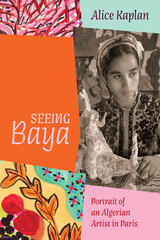 Seeing Baya: Portrait of an Algerian Artist in Paris
Alice Kaplan
University of Chicago Press, 2024 The first biography of the Algerian artist Baya Mahieddine, celebrated in mid-twentieth-century Paris, her life shrouded in myth.
On a flower farm in colonial Algeria, a servant and field worker known as Baya escaped the drudgery of her labor by coloring the skirts in fashion magazines. Three years later, in November 1947, her paintings and fanciful clay beasts were featured in a solo show in Paris. She wasn’t yet sixteen years old. In this first biography of Baya, Alice Kaplan tells the story of a young woman seemingly trapped in subsistence who becomes a sensation in the French capital, then mysteriously fades from the history of modern art—only to reemerge after independence as an icon of Algerian artistic heritage.
The toast of Paris for the 1947 season, Baya inspired colonialist fantasies about her “primitive” genius as well as genuine appreciation. She was featured in newspapers, on the radio, and in a newsreel; her art was praised by Breton and Camus, Marchand and Braque. At the dawn of Algerian liberation, her appearance in Paris was used to stage the illusion of French-Algerian friendship, while horrific French massacres in Algeria were still fresh in memory.
Kaplan uncovers the central figures in Baya’s life and the role they played in her artistic career. Among the most poignant was Marguerite Caminat-McEwen-Benhoura, who took Baya from her sister’s farm to Algiers, where Baya worked as Marguerite’s maid and was given paint and brushes. A complex and endearing character, Marguerite—and her Pygmalion ambitions—was decisive in shaping Baya’s destiny. Kaplan also looks closely at Baya’s earliest paintings with an eye to their themes, their palette and design, and their enduring influence.
In vivid prose that brings Baya’s story into the present, Kaplan’s book, the fruit of scrupulous research in Algiers, Blida, Paris, and Provence, allows us to see in a whole new light the beloved artist who signed her paintings simply “Baya.”
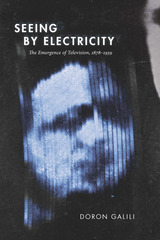 Seeing by Electricity: The Emergence of Television, 1878-1939
Doron Galili
Duke University Press, 2020 Already in the late nineteenth century, electricians, physicists, and telegraph technicians dreamed of inventing televisual communication apparatuses that would “see” by electricity as a means of extending human perception. In Seeing by Electricity Doron Galili traces the early history of television, from fantastical image transmission devices initially imagined in the 1870s such as the Telectroscope, the Phantoscope, and the Distant Seer to the emergence of broadcast television in the 1930s. Galili examines how televisual technologies were understood in relation to film at different cultural moments—whether as a perfection of cinema, a threat to the Hollywood industry, or an alternative medium for avant-garde experimentation. Highlighting points of overlap and divergence in the histories of television and cinema, Galili demonstrates that the intermedial relationship between the two media did not start with their economic and institutional rivalry of the late 1940s but rather goes back to their very origins. In so doing, he brings film studies and television studies together in ways that advance contemporary debates in media theory.
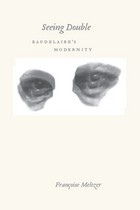 Seeing Double: Baudelaire's Modernity
Françoise Meltzer
University of Chicago Press, 2011 The poet Charles Baudelaire (1821–1867) has been labeled the very icon of modernity, the scribe of the modern city, and an observer of an emerging capitalist culture. Seeing Double reconsiders this iconic literary figure and his fraught relationship with the nineteenth-century world by examining the way in which he viewed the increasing dominance of modern life. In doing so, it revises some of our most common assumptions about the unresolved tensions that emerged in Baudelaire’s writing during a time of political and social upheaval. Françoise Meltzer argues that Baudelaire did not simply describe the contradictions of modernity; instead, his work embodied and recorded them, leaving them unresolved and often less than comprehensible. Baudelaire’s penchant for looking simultaneously backward to an idealized past and forward to an anxious future, while suspending the tension between them, is part of what Meltzer calls his “double vision”—a way of seeing that produces encounters that are doomed to fail, poems that can’t advance, and communications that always seem to falter. In looking again at the poet and his work, Seeing Double helps to us to understand the prodigious transformations at stake in the writing of modern life.
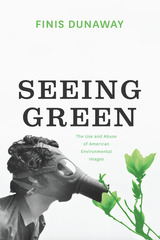 Seeing Green: The Use and Abuse of American Environmental Images
Finis Dunaway
University of Chicago Press, 2015 American environmentalism is defined by its icons: the “Crying Indian,” who shed a tear in response to litter and pollution; the cooling towers of Three Mile Island, site of a notorious nuclear accident; the sorrowful spectacle of oil-soaked wildlife following the ExxonValdez spill; and, more recently, Al Gore delivering his global warming slide show in An Inconvenient Truth. These images, and others like them, have helped make environmental consciousness central to American public culture. Yet most historical accounts ignore the crucial role images have played in the making of popular environmentalism, let alone the ways that they have obscured other environmental truths.
Finis Dunaway closes that gap with Seeing Green. Considering a wide array of images—including pictures in popular magazines, television news, advertisements, cartoons, films, and political posters—he shows how popular environmentalism has been entwined with mass media spectacles of crisis. Beginning with radioactive fallout and pesticides during the 1960s and ending with global warming today, he focuses on key moments in which media images provoked environmental anxiety but also prescribed limited forms of action. Moreover, he shows how the media have blamed individual consumers for environmental degradation and thus deflected attention from corporate and government responsibility. Ultimately, Dunaway argues, iconic images have impeded efforts to realize—or even imagine—sustainable visions of the future.
Generously illustrated, this innovative book will appeal to anyone interested in the history of environmentalism or in the power of the media to shape our politics and public life.
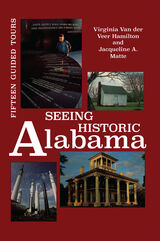 Seeing Historic Alabama: Fifteen Guided Tours
Virginia Van der Veer Hamilton
University of Alabama Press, 1996 Revised and updated. Don’t drive anywhere in this state without taking along this useful, handy guide. Originally published in 1982, Professor Hamilton’s much acclaimed Seeing Historic Alabama: Fifteen Guided Tours was enthusiastically received around the state. Reviewers throughout Alabama praised her work, her artist’s eye for landscape and architecture, as well as her “historian’s devotion to fact and motorist’s appreciation for specific directions.” This praise extended beyond the state lines to publications in the greater Southeast, which recommend the volume to readers planning travel to or through Alabama.
Hamilton and Matte's thoroughly revised and updated edition of Seeing Historic Alabama introduces readers to the history of Alabama by way of visits to the buildings and sites where historic events took place, from prehistoric time to the present. Its aim is to appeal to a wide range of readers and travelers—natives and residents of Alabama, students of all ages, newcomers to the state, and tourists. This guide offers tours arranged in geographical segments that can be taken in a few hours, in a day trip, or over the course of several days. A handy guide to keep at ready in the glove compartment for easy reference wherever you travel.
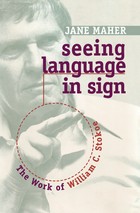 Seeing Language in Sign: The Work of William C. Stokoe
Jane Maher
Gallaudet University Press, 2010 In 1955 William C. Stokoe arrived at Gallaudet College (later Gallaudet University) to teach English where he was first exposed to deaf people signing. While most of his colleagues dismissed signing as mere mimicry of speech, Stokoe saw in it elements of a distinctive language all its own. Seeing Language in Sign traces the process that Stokoe followed to prove scientifically and unequivocally that American Sign Language (ASL) met the full criteria of linguistics—phonology, morphology, syntax, semantics and use of language—to be classified a fully developed language.
This perceptive account dramatically captures the struggle Stokoe faced in persuading the establishment of the truth of his discovery. Other faculty members ridiculed or reviled him, and many deaf members of the Gallaudet community laughed at his efforts. Seeing Language in Sign rewards the reader with a rich portrayal of an undaunted advocate who, like a latter-day Galileo, pursued his vision doggedly regardless of relentless antagonism. He established the Linguistics Research Laboratory, then founded the journal Sign Language Studies to sustain an unpopular dialogue until the tide changed. His ultimate vindication corresponded with the recognition of the glorious culture and community that revolves around Deaf people and their language, ASL.
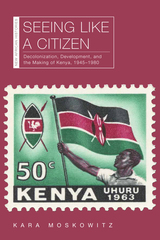 Seeing Like a Citizen: Decolonization, Development, and the Making of Kenya, 1945–1980
Kara Moskowitz
Ohio University Press, 2019 In Seeing Like a Citizen, Kara Moskowitz approaches Kenya’s late colonial and early postcolonial eras as a single period of political, economic, and social transition. In focusing on rural Kenyans—the vast majority of the populace and the main targets of development interventions—as they actively sought access to aid, she offers new insights into the texture of political life in decolonizing Kenya and the early postcolonial world. Using multisited archival sources and oral histories focused on the western Rift Valley, Seeing Like a Citizen makes three fundamental contributions to our understanding of African and Kenyan history. First, it challenges the widely accepted idea of the gatekeeper state, revealing that state control remained limited and that the postcolonial state was an internally varied and often dissonant institution. Second, it transforms our understanding of postcolonial citizenship, showing that its balance of rights and duties was neither claimed nor imposed, but negotiated and differentiated. Third, it reorients Kenyan historiography away from central Kenya and elite postcolonial politics. The result is a powerful investigation of experiences of independence, of the meaning and form of development, and of how global political practices were composed and recomposed on the ground in local settings.
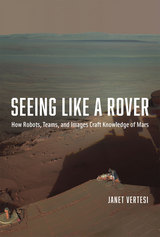 Seeing Like a Rover: How Robots, Teams, and Images Craft Knowledge of Mars
Janet Vertesi
University of Chicago Press, 2015 In the years since the Mars Exploration Rover Spirit and Opportunity first began transmitting images from the surface of Mars, we have become familiar with the harsh, rocky, rusty-red Martian landscape. But those images are much less straightforward than they may seem to a layperson: each one is the result of a complicated set of decisions and processes involving the large team behind the Rovers.
With Seeing Like a Rover, Janet Vertesi takes us behind the scenes to reveal the work that goes into creating our knowledge of Mars. Every photograph that the Rovers take, she shows, must be processed, manipulated, and interpreted—and all that comes after team members negotiate with each other about what they should even be taking photographs of in the first place. Vertesi’s account of the inspiringly successful Rover project reveals science in action, a world where digital processing uncovers scientific truths, where images are used to craft consensus, and where team members develop an uncanny intimacy with the sensory apparatus of a robot that is millions of miles away. Ultimately, Vertesi shows, every image taken by the Mars Rovers is not merely a picture of Mars—it’s a portrait of the whole Rover team, as well.
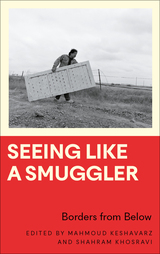 Seeing Like a Smuggler: Borders from Below
Shahram
Pluto Press, 2022 Stories of smuggling as acts of resistance and decolonization.
'This conceptually vivid book refreshes our vision' - Ruth Wilson Gilmore
The word smuggler often unleashes a simplified, negative image painted by the media and the authorities. Such state-centric perspectives hide many social, political, and economic relations generated by smuggling. This book looks at the practice through the eyes of the smugglers, revealing how their work can be productive, subversive, and deeply sociopolitical.
By tracing the illegalized movement of people and goods across borders, Seeing Like a Smuggler shows smuggling as a contradiction within the nation-state system, and in a dialectical relation with the national order of things. It raises questions about how smuggling engages and unsettles the ethics, materialities, visualities, histories, and the colonial power relations that form borders and bordering.
Covering a wide spectrum of approaches from personal reflections and ethnographies to historical accounts, cultural analysis, and visual essays, the book spans the globe from Colombia to Ethiopia, Singapore to Guatemala, Afghanistan to Zimbabwe, and from Kurdistan to Bangladesh, to show how people deal with global inequalities and the restrictions of poverty and immobility.
Seeing MAD: Essays on MAD Magazine's Humor and Legacy
Judith Yaross Lee
University of Missouri Press, 2021 “Seeing Mad” is an illustrated volume of scholarly essays about the popular and influential humor magazine Mad, with topics ranging across its 65-year history—up to last summer’s downsizing announcement that Mad will publish less new material and will be sold only in comic book shops.
Mad magazine stands near the heart of post-WWII American humor, but at the periphery in scholarly recognition from American cultural historians, including humor specialists. This book fills that gap, with perceptive, informed, engaging, but also funny essays by a variety of scholars. The chapters, written by experts on humor, comics, and popular culture, cover the genesis of Mad; its editors and prominent contributors; its regular features and departments and standout examples of their contents; perspectives on its cultural and political significance; and its enduring legacy in American culture.
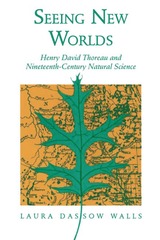 Seeing New Worlds: Henry David Thoreau and Nineteenth-Century Natural Science
Laura Dassow Walls
University of Wisconsin Press, 1995 Thoreau was a poet, a naturalist, a major American writer. Was he also a scientist? He was, Laura Dassow Walls suggests. Her book, the first to consider Thoreau as a serious and committed scientist, will change the way we understand his accomplishment and the place of science in American culture.
Walls reveals that the scientific texts of Thoreau’s day deeply influenced his best work, from Walden to the Journal to the late natural history essays. Here we see how, just when literature and science were splitting into the “two cultures” we know now, Thoreau attempted to heal the growing rift. Walls shows how his commitment to Alexander von Humboldt’s scientific approach resulted in not only his “marriage” of poetry and science but also his distinctively patterned nature studies. In the first critical study of his “The Dispersion of Seeds” since its publication in 1993, she exposes evidence that Thoreau was using Darwinian modes of reasoning years before the appearance of Origin of Species.
This book offers a powerful argument against the critical tradition that opposes a dry, mechanistic science to a warm, “organic” Romanticism. Instead, Thoreau’s experience reveals the complex interaction between Romanticism and the dynamic, law-seeking science of its day. Drawing on recent work in the theory and philosophy of science as well as literary history and theory, Seeing New Worlds bridges today’s “two cultures” in hopes of stimulating a fuller consideration of representations of nature.
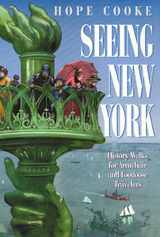 Seeing New York: History Walks for Armchair and Footloose Travelers
Hope Cooke
Temple University Press, 1995 Since the 1700s, various ethnic and immigrant groups have been shifting and negotiating their place in New York City. Hope Cooke also struggled to find a "correlation of space" and "sense of belonging" when she returned to the city after spending her adult life living in a place in the Himalayas, the Queen of Sikkim (a tiny kingdom near Nepal). Abroad for so long, she returned with an urgent need to rediscover this city, to "find her way home." It was not always a comfortable journey for Cooke: "On the days I felt secure, Manhattan's maelstrom was pure energy. On shaky days, the boundlessness made me yearn for limits, or, failing that, at least a vantage point." The book that has emerged is an entertaining and integrated account of New York City's social history, architecture, physical space, and culture. Starting with the American Indian settlements and the early days when the southern-most tip of Manhattan held little more than a bleak outpost of Dutch fur traders, Cooke tracks the economic development and journeys north, from the Village's beginnings as a refuge from dreaded summer fevers to the present day Dominican enclave of Washington Heights. Written for armchair enthusiasts and walkabout adventurers, this book travels fourteen of the city's distinct and significant neighborhoods. Cooke's guide will make a historical sleuth out of local residents and tourists alike. Her off-the-beaten-path insights and witty observations help decode the urban landscape and reveal how social changes have reworked the city's terrain. Enhancing the narrative are 140 illustrations, including old engravings, maps, and current photographs. In the series Critical Perspectives on the Past, edited by Susan Porter Benson, Stephen Brier, and Roy Rosenzweig.
 Seeing Patients: A Surgeon’s Story of Race and Medical Bias, With a New Preface
Augustus A. White III MD
Harvard University Press, 2019 “A powerful and extraordinarily important book.”
—James P. Comer, MD
“A marvelous personal journey that illuminates what it means to care for people of all races, religions, and cultures. The story of this man becomes the aspiration of all those who seek to minister not only to the body but also to the soul.”
—Jerome Groopman, MD, author of How Doctors Think
Growing up in Jim Crow–era Tennessee and training and teaching in overwhelmingly white medical institutions, Gus White witnessed firsthand how prejudice works in the world of medicine. While race relations have changed dramatically since then, old ways of thinking die hard. In this blend of memoir and manifesto, Dr. White draws on his experience as a resident at Stanford Medical School, a combat surgeon in Vietnam, and head orthopedic surgeon at one of Harvard’s top teaching hospitals to make sense of the unconscious bias that riddles medical care, and to explore how we can do better in a diverse twenty-first-century America.
“Gus White is many things—trailblazing physician, gifted surgeon, and freedom fighter. Seeing Patients demonstrates to the world what many of us already knew—that he is also a compelling storyteller. This powerful memoir weaves personal experience and scientific research to reveal how the enduring legacy of social inequality shapes America’s medical field. For medical practitioners and patients alike, Dr. White offers both diagnosis and prescription.”
—Jonathan L. Walton, Plummer Professor of Christian Morals, Harvard University
“A tour de force—a compelling story about race, health, and conquering inequality in medical care…Dr. White has a uniquely perceptive lens with which to see and understand unconscious bias in health care…His journey is so absorbing that you will not be able to put this book down.”
—Charles J. Ogletree, Jr., author of All Deliberate Speed
 Seeing Patients: Unconscious Bias in Health Care
Augustus A. White III M.D.
Harvard University Press, 2011 If you’re going to have a heart attack, an organ transplant, or a joint replacement, here’s the key to getting the very best medical care: be a white, straight, middle-class male. This book by a pioneering black surgeon takes on one of the few critically important topics that haven’t figured in the heated debate over health care reform—the largely hidden yet massive injustice of bias in medical treatment.
Growing up in Jim Crow–era Tennessee and training and teaching in overwhelmingly white medical institutions, Gus White witnessed firsthand how prejudice works in the world of medicine. And while race relations have changed dramatically, old ways of thinking die hard. In Seeing Patients White draws upon his experience in startlingly different worlds to make sense of the unconscious bias that riddles medical treatment, and to explore what it means for health care in a diverse twenty-first-century America.
White and coauthor David Chanoff use extensive research and interviews with leading physicians to show how subconscious stereotyping influences doctor–patient interactions, diagnosis, and treatment. Their book brings together insights from the worlds of social psychology, neuroscience, and clinical practice to define the issues clearly and, most importantly, to outline a concrete approach to fixing this fundamental inequity in the delivery of health care.
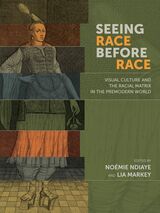 Seeing Race Before Race: Visual Culture and the Racial Matrix in the Premodern World
Edited by Noémie Ndiaye and Lia Markey
Arizona Center for Medieval and Renaissance Studies, 2023 Explores the deployment of racial thinking and racial formations in the visual culture of the pre-modern world.
The capacious visual archive studied in this volume includes a trove of materials such as annotated or illuminated manuscripts, Renaissance costume books and travel books, maps and cartographic volumes produced by Europeans as well as Indigenous peoples, mass-printed pamphlets, jewelry, decorative arts, religious iconography, paintings from around the world, ceremonial objects, festival books, and play texts intended for live performance.
Contributors explore the deployment of what coeditor Noémie Ndiaye calls “the racial matrix” and its interconnected paradigms across the medieval and early modern chronological divide and across vast transnational and multilingual geographies. This volume uses items from the Fall 2023 exhibition “Seeing Race Before Race”—a collaboration between RaceB4Race and the Newberry Library—as a starting point for an ambitious theoretical conversation between premodern race studies, art history, performance studies, book history, and critical race theory.
 Seeing Red: A Study in Consciousness
Nicholas Humphrey
Harvard University Press, 2006 "Consciousness matters. Arguably it matters more than anything. The purpose of this book is to build towards an explanation of just what the matter is."
Nicholas Humphrey begins this compelling exploration of the biggest of big questions with a challenge to the reader, and himself. What's involved in "seeing red"? What is it like for us to see someone else seeing something red?
Seeing a red screen tells us a fact about something in the world. But it also creates a new fact--a sensation in each of our minds, the feeling of redness. And that's the mystery. Conventional science so far hasn't told us what conscious sensations are made of, or how we get access to them, or why we have them at all. From an evolutionary perspective, what's the point of consciousness?
Humphrey offers a daring and novel solution, arguing that sensationsare not things that happen to us, they are things we do--originating in our primordial ancestors' expressions of liking or disgust. Tracing the evolutionary trajectory through to human beings, he shows how this has led to sensations playing the key role in the human sense of Self.
The Self, as we now know it from within, seems to have fascinating other-worldly properties. It leads us to believe in mind-body duality and the existence of a soul. And such beliefs--even if mistaken--can be highly adaptive, because they increase the value we place on our own and others' lives.
"Consciousness matters," Humphrey concludes with striking paradox, "because it is its function to matter. It has been designed to create in human beings a Self whose life is worth pursuing."
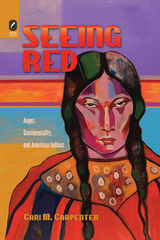 Seeing Red: Anger, Sentimentality, and American Indians
Cari M. Carpenter
Ohio State University Press, 2008 In Seeing Red, Cari M. Carpenter examines anger in the poetry and prose of three early American Indian writers: S. Alice Callahan, Pauline Johnson, and Sarah Winnemucca. In articulating a legitimate anger in the late nineteenth century, the first published indigenous women writers were met not only with stereotypes of “savage” rage but with social proscriptions against female anger. While the loss of land, life, and cultural traditions is central to the Native American literature of the period, this dispossession is only one side of the story. Its counterpart, indigenous claims to that which is threatened, is just as essential to these narratives. The first published American Indian women writers used a variety of tactics to protest such dispossession. Seeing Red argues that one of the most pervasive and intriguing of these is sentimentality. Carpenter argues that while anger is a neglected element of a broad range of sentimental texts, it should be recognized as a particularly salient subject in early literature written by Native American women. To date, most literary scholars—whether they understand sentimentality in terms of sympathetic relations or of manipulative influence—have viewed anger as an obstacle to the genre. Placing anger and sentimentality in opposition, however, neglects their complex and often intimate relationship. This case study of three Native American women writers is not meant to fall easily into either the “pro” or “anti” sentimentality camp, but to acknowledge sentimentality as a fraught, yet potentially useful, mode for articulating indigenous women’s anger.
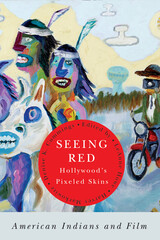 Seeing Red—Hollywood's Pixeled Skins: American Indians and Film
LeAnne Howe
Michigan State University Press, 2013 At once informative, comic, and plaintive, Seeing Red—Hollywood’s Pixeled Skins is an anthology of critical reviews that reexamines the ways in which American Indians have traditionally been portrayed in film. From George B. Seitz’s 1925 The Vanishing American to Rick Schroder’s 2004 Black Cloud, these 36 reviews by prominent scholars of American Indian Studies are accessible, personal, intimate, and oftentimes autobiographic. Seeing Red—Hollywood’s Pixeled Skins offers indispensible perspectives from American Indian cultures to foreground the dramatic, frequently ridiculous difference between the experiences of Native peoples and their depiction in film. By pointing out and poking fun at the dominant ideologies and perpetuation of stereotypes of Native Americans in Hollywood, the book gives readers the ability to recognize both good filmmaking and the dangers of misrepresenting aboriginal peoples. The anthology offers a method to historicize and contextualize cinematic representations spanning the blatantly racist, to the well-intentioned, to more recent independent productions. Seeing Red is a unique collaboration by scholars in American Indian Studies that draws on the stereotypical representations of the past to suggest ways of seeing American Indians and indigenous peoples more clearly in the twenty-first century.
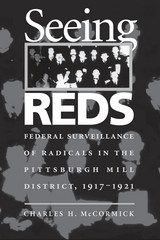 Seeing Reds: Federal Surveillance of Radicals in the Pittsburgh Mill District, 1917–1921
Charles H. Mccormick
University of Pittsburgh Press, 2003
During World War I, fear that a network of German spies was operating on American soil justified the rapid growth of federal intelligence agencies. When that threat proved illusory, these agencies, staffed heavily by corporate managers and anti-union private detectives, targeted antiwar and radical labor groups, particularly the Socialist party and the Industrial Workers of the World.
Seeing Reds, based largely on case files from the Bureau of Investigation, Military Intelligence Division, and Office of Naval Intelligence, describes this formative period of federal domestic spying in the Pittsburgh region. McCormick traces the activities of L. M. Wendell, a Bureau of Investigation “special employee” who infiltrated the IWW’s Pittsburgh recruiting branch and the inner circle of anarchist agitator and lawyer Jacob Margolis. Wendell and other Pittsbugh based agents spied on radical organizations from Erie, Pennsylvania, to Camp Lee, Virginia, intervened in the steel and coal strikes of 1919, and carried out the Palmer raids aimed at mass deportation of members of the Union of Russian Workers and the New Communist Party.
McCormick’s detailed history uses extensive research to add to our understanding of the security state, cold war ideology, labor and immigration history, and the rise of the authoritarian American Left, as well as the career paths of figures as diverse as J. Edgar Hoover and William Z. Foster.
 Seeing Sarah Bernhardt: Performance and Silent Film
Victoria Duckett
University of Illinois Press, 2015 The most famous stage actress of the nineteenth century, Sarah Bernhardt enjoyed a surprising renaissance when the 1912 multi-reel film Queen Elizabeth vaulted her to international acclaim. The triumph capped her already lengthy involvement with cinema while enabling the indefatigable actress to reinvent herself in an era of technological and generational change. Placing Bernhardt at the center of the industry's first two decades, Victoria Duckett challenges the perception of her as an anachronism unable to appreciate film's qualities. Instead, cinema's substitution of translated title cards for her melodic French deciphered Bernhardt for Anglo-American audiences. It also allowed the aging actress to appear in the kinds of longer dramas she could no longer physically sustain onstage. As Duckett shows, Bernhardt contributed far more than star quality. Her theatrical practice on film influenced how the young medium changed the visual and performing arts. Her promoting of experimentation, meanwhile, shaped the ways audiences looked at and understood early cinema. A leading-edge reappraisal of a watershed era, Seeing Sarah Bernhardt tells the story of an icon who bridged two centuries--and changed the very act of watching film.
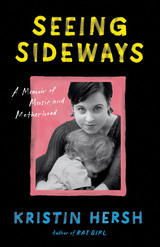 Seeing Sideways: A Memoir of Music and Motherhood
By Kristin Hersh
University of Texas Press, 2021 Doony, Ryder, Wyatt, Bodhi. The names of Kristin Hersh’s sons are the only ones included in her new memoir, Seeing Sideways. As the book unfolds and her sons’ voices rise from its pages, it becomes clear why: these names tell the story of her life. This story begins in 1990, when Hersh is the leader of the indie rock group Throwing Muses, touring steadily, and the mother of a young son, Doony. The chapters that follow reveal a woman and mother whose life and career grow and change with each of her sons: the story of a custody battle for Doony is told alongside that of Hersh’s struggles with her record company and the resulting PTSD; the tale of breaking free from her record label stands in counterpoint to her recounting of her pregnancy with Ryder; a period of writer’s block coincides with the development of Wyatt as an artist and the family’s loss of their home; and finally, soon after Bodhi’s arrival, Hersh and her boys face crises from which only strange angels can save them. Punctuated with her own song lyrics, Seeing Sideways is a memoir about a life strange enough to be fiction, but so raw and moving that it can only be real.
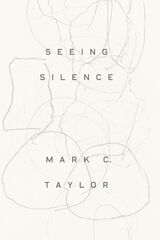 Seeing Silence
Mark C. Taylor
University of Chicago Press, 2020 Mark C. Taylor explores the many variations of silence by considering the work of leading visual artists, philosophers, theologians, writers, and composers.
“To hear silence is to find stillness in the midst of the restlessness that makes creative life possible and the inescapability of death acceptable.” So writes Mark C. Taylor in his latest book, a philosophy of silence for our nervous, chattering age. How do we find silence—and more importantly, how do we understand it—amid the incessant buzz of the networks that enmesh us? Have we forgotten how to listen to each other, to recognize the virtues of modesty and reticence, and to appreciate the resonance of silence? Are we less prepared than ever for the ultimate silence that awaits us all?
Taylor wants us to pause long enough to hear what is not said and to attend to what remains unsayable. In his account, our way to hearing silence is, paradoxically, to see it. He explores the many variations of silence by considering the work of leading modern and postmodern visual artists, including Barnett Newman, Ad Reinhardt, James Turrell, and Anish Kapoor. Developing the insights of philosophers, theologians, writers, and composers, Taylor weaves a rich narrative modeled on the Stations of the Cross. His chapter titles suggest our positions toward silence: Without. Before. From. Beyond. Against. Within. Between. Toward. Around. With. In. Recasting Hegel’s phenomenology of spirit and Kierkegaard’s stages on life’s way, Taylor translates the traditional Via Dolorosa into a Nietzschean Via Jubilosa that affirms light in the midst of darkness.
Seeing Silence is a thoughtful meditation that invites readers to linger long enough to see silence, and, in this way, perhaps to hear once again the wordless Word that once was named “God.”
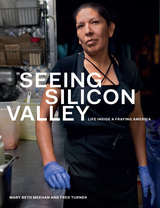 Seeing Silicon Valley: Life inside a Fraying America
Mary Beth Meehan and Fred Turner
University of Chicago Press, 2021 Acclaimed photographer Mary Beth Meehan and Silicon Valley culture expert Fred Turner join forces to give us an unseen view of the heart of the tech world.
It’s hard to imagine a place more central to American mythology today than Silicon Valley. To outsiders, the region glitters with the promise of extraordinary wealth and innovation. But behind this image lies another Silicon Valley, one segregated by race, class, and nationality in complex and contradictory ways. Its beautiful landscape lies atop underground streams of pollutants left behind by decades of technological innovation, and while its billionaires live in compounds, surrounded by redwood trees and security fences, its service workers live in their cars.
With arresting photography and intimate stories, Seeing Silicon Valley makes this hidden world visible. Instead of young entrepreneurs striving for efficiency in minimalist corporate campuses, we see portraits of struggle—families displaced by an impossible real estate market, workers striving for a living wage, and communities harmed by environmental degradation. If the fate of Silicon Valley is the fate of America—as so many of its boosters claim—then this book gives us an unvarnished look into the future.
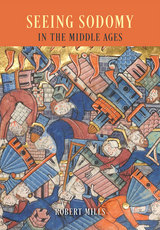 Seeing Sodomy in the Middle Ages
Robert Mills
University of Chicago Press, 2015 During the Middle Ages in Europe, some sexual and gendered behaviors were labeled “sodomitical” or evoked the use of ambiguous phrases such as the “unmentionable vice” or the “sin against nature.” How, though, did these categories enter the field of vision? How do you know a sodomite when you see one?
In Seeing Sodomy in the Middle Ages, Robert Mills explores the relationship between sodomy and motifs of vision and visibility in medieval culture, on the one hand, and those categories we today call gender and sexuality, on the other. Challenging the view that ideas about sexual and gender dissidence were too confused to congeal into a coherent form in the Middle Ages, Mills demonstrates that sodomy had a rich, multimedia presence in the period—and that a flexible approach to questions of terminology sheds new light on the many forms this presence took. Among the topics that Mills covers are depictions of the practices of sodomites in illuminated Bibles; motifs of gender transformation and sex change as envisioned by medieval artists and commentators on Ovid; sexual relations in religious houses and other enclosed spaces; and the applicability of modern categories such as “transgender,” “butch” and “femme,” or “sexual orientation” to medieval culture.
Taking in a multitude of images, texts, and methodologies, this book will be of interest to all scholars, regardless of discipline, who engage with gender and sexuality in their work.
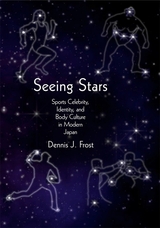 Seeing Stars: Sports Celebrity, Identity, and Body Culture in Modern Japan
Dennis J. Frost
Harvard University Press, 2010 In Seeing Stars, Dennis J. Frost traces the emergence and evolution of sports celebrity in Japan from the seventeenth through the twenty-first centuries. Frost explores how various constituencies have repeatedly molded and deployed representations of individual athletes, revealing that sports stars are socially constructed phenomena, the products of both particular historical moments and broader discourses of celebrity.
Drawing from media coverage, biographies, literary works, athletes’ memoirs, bureaucratic memoranda, interviews, and films, Frost argues that the largely unquestioned mass of information about sports stars not only reflects, but also shapes society and body culture. He examines the lives and times of star athletes—including sumo grand champion Hitachiyama, female Olympic medalist Hitomi Kinue, legendary pitcher Sawamura Eiji, and world champion boxer Gushiken Yokoō—demonstrating how representations of such sports stars mediated Japan’s emergence into the putatively universal realm of sports, unsettled orthodox notions of gender, facilitated wartime mobilization of physically fit men and women, and masked lingering inequalities in postwar Japanese society.
As the first critical examination of the history of sports celebrity outside a Euro-American context, this book also sheds new light on the transnational forces at play in the production and impact of celebrity images and dispels misconceptions that sports stars in the non-West are mere imitations of their Western counterparts.
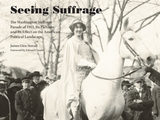 Seeing Suffrage: The 1913 Washington Suffrage Parade, Its Pictures, and Its Effects on the American Political Landscape
James Glen Stovall
University of Tennessee Press, 2013 On March 3, 1913, the day before Woodrow Wilson’s inauguration, leaders of the American suffrage movement organized an enormous march through the capital that served as an important salvo on the long road to the passage of the Nineteenth Amendment. Coinciding with the widespread rise of photography in daily newspapers and significant shifts in journalism, the parade energized a movement that had been in the doldrums for nearly two decades. In Seeing Suffrage, James G. Stovall combines a detailed account of the parade with more than 130 photographs to provide a stunning visual chronicle of one of the most pivotal moments in the struggle for women’s rights.
Although the women’s suffrage movement was sixty-five years old by 1913, the belief that women should vote was still controversial. Reactions to the march—a dazzling spectacle involving between five thousand and eight thousand participants—ranged from bemusement to resistance to violence. The lack of cooperation from the Washington police force exacerbated conflicts along the route and, ultimately, approximately one hundred marchers and participants were injured. Although suffrage leaders publicly expressed disgust at the conduct of the crowd and police, privately they were delighted with the turn of events, taking full advantage of the increased media coverage by repeatedly tying the unruly mob and the actions of the police to those who opposed votes for women.
The 1913 procession stands as one of the first political events in American history staged in great part for visual purposes. This revealing work recounts the march from the planning stages to the struggle up Pennsylvania Avenue and showcases the most interesting and informative photographs of that day. Although supporters needed seven more frustrating years to ratify the Nineteenth Amendment, the Washington Suffrage Parade of 1913 can, as this book demonstrates, rightly be seen as the moment that forced the public to take seriously the effort to secure the vote for women.
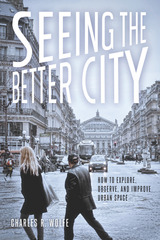 Seeing the Better City: How to Explore, Observe, and Improve Urban Space
Charles R. Wolfe
Island Press, 2016 Finalist for a 2018 United Kingdom National Urban Design Award • A 2017 KUOW Public Radio 2017 End-of-Year Book Choice
In order to understand and improve cities today, personal observation remains as important as ever. While big data, digital mapping, and simulated cityscapes are valuable tools for understanding urban space, using them without on-the-ground, human impressions risks creating places that do not reflect authentic local context. Seeing the Better City brings our attention back to the real world right in front of us, focusing it once more on the sights, sounds, and experiences of place in order to craft policies, plans, and regulations to shape better urban environments.
Through clear prose and vibrant photographs, Charles Wolfe shows those who experience cities how they might catalog the influences of urban form, neighborhood dynamics, public transportation, and myriad other basic city elements that impact their daily lives. He then shares insights into how they can use those observations to contribute to better planning and design decisions. Wolfe calls this the “urban diary” approach, and highlights how the perspective of the observer is key to understanding the dynamics of urban space. He concludes by offering contemporary examples and guidance on how to use carefully recorded and organized observations as a tool to create change in urban planning conversations and practice.
From city-dwellers to elected officials involved in local planning and design issues, this book is an invaluable tool for constructive, creative discourse about improving urban space.
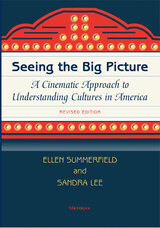 Seeing the Big Picture, Revised Edition: A Cinematic Approach to Understanding Cultures in America
Ellen Summerfield and Sandra Lee
University of Michigan Press, 2006 Seeing the Big Picture, Revised Edition, is designed to broaden students' awareness, understanding, and appreciation of the many cultures and subcultures in the United States. The authors have chosen popular films as tools for exposing students to aspects of cultures, including those of African Americans, Chinese Americans, Mexican Americans, and Muslim Americans. Writing and discussion activities will help students explore the cultural points of view portrayed in each of the films. Students are also advised to keep a film journal that will allow them to observe how their reactions and observations develop through the course of the class.
In addition to increasing students' knowledge and understanding of cultural differences, Seeingthe Big Picture will help students develop strong critical-thinking and analytic abilities as they learn to recognize and question messages inherent in the films' portrayals of different populations. A unique feature of the text are the Points of View segments from directors, insiders, and students that appear throughout the text, provoking perspectives students might not otherwise encounter.
This text is the ideal coursebook for undergraduate diversity electives and other multicultural awareness courses.
Seeing the City Digitally: Processing Urban Space and Time
Gillian Rose
Amsterdam University Press, 2022 This book explores what’s happening to ways of seeing urban spaces in the contemporary moment, when so many of the technologies through which cities are visualised are digital. Cities have always been pictured, in many media and for many different purposes. This edited collection explores how that picturing is changing in an era of digital visual culture. Analogue visual technologies like film cameras were understood as creating some sort of a trace of the real city. Digital visual technologies, in contrast, harvest and process digital data to create images that are constantly refreshed, modified and circulated. Each of the chapters in this volume examines a different example of how this processual visuality is reconfiguring the spatial and temporal organisation of urban life.
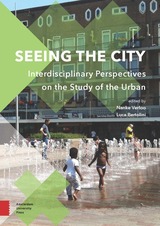 Seeing the City: Interdisciplinary Perspectives on the Study of the Urban
Nanke Verloo
Amsterdam University Press, 2021 The city is a complex object. Some researchers look at its shape, others at its people, animals, ecology, policy, infrastructures, buildings, history, art, or technical networks. Some researchers analyse processes of in- or exclusion, gentrification, or social mobility; others biological evolution, traffic flows, or spatial development. Many combine these topics or add still more topics beyond this list. Some projects cross the boundaries of research and practice and engage in action research, while others pursue knowledge for the sake of curiosity. This volume embraces this variety of perspectives and provides an essential collection of methodologies for studying the city from multiple, interdisciplinary, and transdisciplinary perspectives. We start by recognizing that the complexity of the urban environment cannot be understood from a single vantage point. We therefore offer multiple methodologies in order to gather and analyse data about the city, and provide ways to connect and integrate these approaches.
The contributors form a talented network of urban scholars and practitioners at the forefront of their fields. They offer hands-on methodological techniques and skills for data collection and analysis. Furthermore, they reveal honest and insightful reflections from behind the scenes. All methodologies are illustrated with examples drawn from the authors own research applying them in the city of Amsterdam. In this way, the volume also offers a rich collection of Amsterdam-based research and outcomes that may inform local urban practitioners and policy makers.
Altogether, the volume offers indispensable tools for and aims to educate a new generation of interdisciplinary and transdisciplinary-minded urban scholars and practitioners.
Seeing the Elephant: RAW RECRUITS AT THE BATTLE OF SHILOH
Joseph Allan Frank and George A. Reaves
University of Illinois Press, 1989 One of the bloodiest battles in the Civil War, the two-day engagement near Shiloh, Tennessee, in April 1862 left more than 23,000 casualties. Fighting alongside seasoned veterans were more than 160 newly recruited regiments and other soldiers who had yet to encounter serious action. In the phrase of the time, these men came to Shiloh to “see the elephant.”
Drawing on the letters, diaries, and other reminiscences of these raw recruits on both sides of the conflict, “Seeing the Elephant” gives a vivid and valuable primary account of the terrible struggle.
From the wide range of voices included in this volume emerges a nuanced picture of the psychology and motivations of the novice soldiers and the ways in which their attitudes toward the war were affected by their experiences at Shiloh.
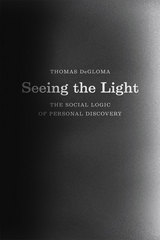 Seeing the Light: The Social Logic of Personal Discovery
Thomas DeGloma
University of Chicago Press, 2014 The chorus of the Christian hymn “Amazing Grace” reads, “I once was lost, but now am found, / Was blind but now I see.” Composed by a minister who formerly worked as a slave trader, the song expresses his experience of divine intervention that ultimately caused him to see the error of his ways. This theme of personal awakening is a feature of countless stories throughout history, where the “lost” and the “blind” are saved from darkness and despair by suddenly seeing the light.
In Seeing the Light, Thomas DeGloma explores such accounts of personal awakening, in stories that range from the discovery of a religious truth to remembering a childhood trauma to embracing a new sexual orientation. He reveals a common social pattern: When people discover a life-changing truth, they typically ally with a new community. Individuals then use these autobiographical stories to shape their stances on highly controversial issues such as childhood abuse, war and patriotism, political ideology, human sexuality, and religion. Thus, while such stories are seemingly very personal, they also have a distinctly social nature. Tracing a wide variety of narratives through nearly three thousand years of history, Seeing the Light uncovers the common threads of such stories and reveals the crucial, little-recognized social logic of personal discovery.
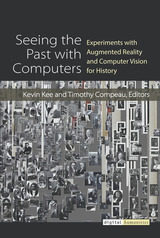 Seeing the Past with Computers: Experiments with Augmented Reality and Computer Vision for History
Kevin Kee and Timothy Compeau, Editors
University of Michigan Press, 2019 Recent developments in computer technology are providing historians with new ways to see—and seek to hear, touch, or smell—traces of the past. Place-based augmented reality applications are an increasingly common feature at heritage sites and museums, allowing historians to create immersive, multifaceted learning experiences. Now that computer vision can be directed at the past, research involving thousands of images can recreate lost or destroyed objects or environments, and discern patterns in vast datasets that could not be perceived by the naked eye.
Seeing the Past with Computers is a collection of twelve thought-pieces on the current and potential uses of augmented reality and computer vision in historical research, teaching, and presentation. The experts gathered here reflect upon their experiences working with new technologies, share their ideas for best practices, and assess the implications of—and imagine future possibilities for—new methods of historical study. Among the experimental topics they explore are the use of augmented reality that empowers students to challenge the presentation of historical material in their textbooks; the application of seeing computers to unlock unusual cultural knowledge, such as the secrets of vaudevillian stage magic; hacking facial recognition technology to reveal victims of racism in a century-old Australian archive; and rebuilding the soundscape of an Iron Age village with aural augmented reality.
This volume is a valuable resource for scholars and students of history and the digital humanities more broadly. It will inspire them to apply innovative methods to open new paths for conducting and sharing their own research.
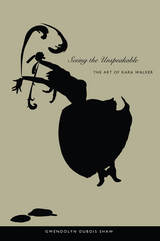 Seeing the Unspeakable: The Art of Kara Walker
Gwendolyn DuBois Shaw
Duke University Press, 2004 One of the youngest recipients of a MacArthur “genius” grant, Kara Walker, an African American artist, is best known for her iconic, often life-size, black-and-white silhouetted figures, arranged in unsettling scenes on gallery walls. These visually arresting narratives draw viewers into a dialogue about the dynamics of race, sexuality, and violence in both the antebellum South and contemporary culture. Walker’s work has been featured in exhibits around the world and in American museums including the Museum of Modern Art, the Guggenheim, and the Whitney. At the same time, her ideologically provocative images have drawn vociferous criticism from several senior African American artists, and a number of her pieces have been pulled from exhibits amid protests against their disturbing representations. Seeing the Unspeakable provides a sustained consideration of the controversial art of Kara Walker. Examining Walker’s striking silhouettes, evocative gouache drawings, and dynamic prints, Gwendolyn DuBois Shaw analyzes the inspiration for and reception of four of Walker’s pieces: The End of Uncle Tom and the Grand Allegorical Tableau of Eva in Heaven, John Brown, A Means to an End, and Cut. She offers an overview of Walker’s life and career, and contextualizes her art within the history of African American visual culture and in relation to the work of contemporary artists including Faith Ringgold, Carrie Mae Weems, and Michael Ray Charles. Shaw describes how Walker deliberately challenges viewers’ sensibilities with radically de-sentimentalized images of slavery and racial stereotypes. This book reveals a powerful artist who is questioning, rather than accepting, the ideas and strategies of social responsibility that her parents’ generation fought to establish during the civil rights era. By exploiting the racist icons of the past, Walker forces viewers to see the unspeakable aspects of America’s racist past and conflicted present.
 Seeing Things Their Way: Intellectual History and the Return of Religion
Alister Chapman
University of Notre Dame Press, 2009
While religious history and intellectual history are both active, dynamic fields of contemporary historical inquiry, historians of ideas and historians of religion have too often paid little attention to one another's work. The intellectual historian Quentin Skinner urged scholars to attend to the contexts as well as the texts of authors, in order to 'see things their way.' Where religion is concerned, however, historians have often failed to heed this good advice; this book helps to remedy that failure. The editors and contributors urge intellectual historians to explore the religious dimensions of ideas and at the same time commend the methods of intellectual history to historians of religion.
The introduction is followed by an essay by Brad Gregory reflecting on issues related to the study of the history of religious ideas. Subsequent essays by John Coffey, Anna Sapir Abulafia, Howard Hotson, Richard A. Muller, and Willem J. van Asselt explore the importance of religion in the intellectual history of Great Britain and Europe in the medieval and early modern periods. James Bradley shifts forward with his essay on religious ideas in Enlightenment England. Mark Noll and Alister Chapman deal respectively with British influence on the writing of religious history in America and with the relationship between intellectual history and religion in modern Britain. David Bebbington provides a concluding reflection on the challenges inherent in restoring the centrality of religion to intellectual history.
"This terrific collection of essays will give all intellectual historians a lot to think about. With learning, courtesy, and precision, the authors make clear that historians of early modern and modern thought, in Britain, Europe, and America, need to pay far more attention than they have to religious ideas and categories. At the same time, though, they show that historians of ideas can provide historians of theology with important methodological lessons." --Anthony Grafton, Princeton University
"Seeing Things Their Way is a unique and important volume that explores and applies in the field of religious thought the methodology of intellectual history pioneered by Quentin Skinner. This rich interdisciplinary collection not only addresses for the first time at book length the strengths, weaknesses, and implications of this approach within the context of the history of religious ideas, but also offers some exemplary exercises in the good practice of that art. It will appeal to historians of political thought and specialists in intellectual history as well as to scholars interested in the place and treatment of religious ideas in social history." --Richard Rex, Queens' College, University of Cambridge
"There is no greater service that the historian can provide to our own understanding of ourselves in time and place than to reconstruct how past societies understood themselves in time and place. When historians fail to include a clear analysis of how the most articulate of our forebears struggled to locate God and his immanence into their studies of themselves and the societies they sought to build, those same historians impoverish our understanding of how our pasts inform our present and how and at what cost (if any) we exclude God from our sense of what makes a just society. This book teaches us that, and much more." --John Morrill, University of Cambridge
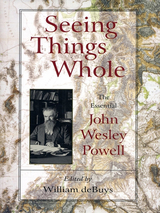 Seeing Things Whole: The Essential John Wesley Powell
John Wesley Powell; Edited by William deBuys
Island Press, 2001 John Wesley Powell was an American original. He was the last of the nation's great continental explorers and the first of a new breed of public servant: part scientist, part social reformer, part institution builder. His work and life reveal an enduringly valuable way of thinking about land, water, and society as parts of an interconnected whole; he was America's first great bioregional thinker. Seeing Things Whole presents John Wesley Powell in the full diversity of his achievements and interests, bringing together in a single volume writings ranging from his gripping account of exploring the Colorado River through the Grand Canyon to his views on the evolution of civilization, along with the seminal writings in which he sets forth his ideas on western settlement and the allocation and management of western resources. The centerpiece of Seeing Things Whole is a series of selections from the famous 1878 Report on the Lands of the Arid Region and related magazine articles in which Powell further develops the themes of the report. In those, he recommends organizing the Arid Lands into watershed commonwealths governed by resident citizens whose interlocking interests create the checks and balances essential to wise stewardship of the land. This was the central focus of John Wesley Powell's bioregional vision, and it remains a model for governance that many westerners see as a viable solution to the resource management conflicts that continue to bedevil the region. Throughout the collection, award-winning writer and historian William deBuys brilliantly sets the historical context for Powell's work. Section introductions and extensive descriptive notes take the reader through the evolution of John Wesley Powell's interests and ideas from his role as an officer in the Civil War through his critique of Social Darwinism and landmark categorization of Indian languages, to the climatic yet ultimately futile battles he fought to win adoption of his land-use proposals. Seeing Things Whole presents the essence of the extraordinary legacy that John Wesley Powell has left to the American people, and to people everywhere who strive to reconcile the demands of society with the imperatives of the land.
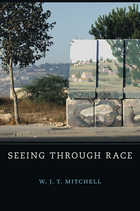 Seeing Through Race
W. J. T. Mitchell
Harvard University Press, 2012 According to W. J. T. Mitchell, a “color-blind” post-racial world is neither achievable nor desirable. Against popular claims that race is an outmoded construct that distracts from more important issues, Mitchell contends that race remains essential to our understanding of social reality. Race is not simply something to be seen but is among the fundamental media through which we experience human otherness. Race also makes racism visible and is thus our best weapon against it.
The power of race becomes most apparent at times when pedagogy fails, the lesson is unclear, and everyone has something to learn. Mitchell identifies three such moments in America’s recent racial history. First is the post–Civil Rights moment of theory, in which race and racism have been subject to renewed philosophical inquiry. Second is the moment of blackness, epitomized by the election of Barack Obama and accompanying images of blackness in politics and popular culture. Third is the “Semitic Moment” in Israel-Palestine, where race and racism converge in new forms of anti-Semitism and Islamophobia. Mitchell brings visual culture, iconology, and media studies to bear on his discussion of these critical turning points in our understanding of the relation between race and racism.
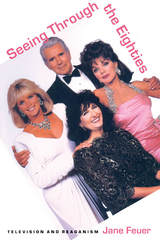 Seeing Through the Eighties: Television and Reaganism
Jane Feuer
Duke University Press, 1995 The 1980s saw the rise of Ronald Reagan and the New Right in American politics, the popularity of programs such as thirtysomething and Dynasty on network television, and the increasingly widespread use of VCRs, cable TV, and remote control in American living rooms. In Seeing Through the Eighties, Jane Feuer critically examines this most aesthetically complex and politically significant period in the history of American television in the context of the prevailing conservative ideological climate. With wit, humor, and an undisguised appreciation of TV, she demonstrates the richness of this often-slighted medium as a source of significance for cultural criticism and delivers a compelling decade-defining analysis of our most recent past.
With a cast of characters including Michael, Hope, Elliot, Nancy, Melissa, and Gary; Alexis, Krystle, Blake, and all the other Carringtons; not to mention Maddie and David; even Crockett and Tubbs, Feuer smoothly blends close readings of well-known programs and analysis of television’s commercial apparatus with a thorough-going theoretical perspective engaged with the work of Baudrillard, Fiske, and others. Her comparative look at Yuppie TV, Prime Time Soaps, and made-for-TV-movie Trauma Dramas reveals the contradictions and tensions at work in much prime-time programming and in the frustrations of the American popular consciousness. Seeing Through the Eighties also addresses the increased commodification of both the producers and consumers of television as a result of technological innovations and the introduction of new marketing techniques. Claiming a close relationship between television and the cultures that create and view it, Jane Feuer sees the eighties through televison while seeing through television in every sense of the word.
Seeing Through The Media
Jeffords, Susan
Rutgers University Press, 1994 The New Republic airbrushed a Hitler mustache on Saddam Hussein. CNN reporters described the bombing of Baghdad as "fireworks on the Fourth of July." The Pentagon fed prepackaged programs to the TV networks. Veiled Arab women became icons of an exotic culture. These are some of the ways the media brought home the war in the Persian Gulf as a national spectacle.
Looking to old and new technologies for mass communication-from CNN to comic books, from international news agencies to tabloids, from bomb sights to the Super Bowl-the essays in this collection show the ways in which public information is shaped, packaged, and disseminated.
Seeing Through The Media: The Persian Gulf War
Jeffords, Susan
Rutgers University Press, 1994 The New Republic airbrushed a Hitler mustache on Saddam Hussein. CNN reporters described the bombing of Baghdad as "fireworks on the Fourth of July." The Pentagon fed prepackaged programs to the TV networks. Veiled Arab women became icons of an exotic culture. These are some of the ways the media brought home the war in the Persian Gulf as a national spectacle.
Looking to old and new technologies for mass communication-from CNN to comic books, from international news agencies to tabloids, from bomb sights to the Super Bowl-the essays in this collection show the ways in which public information is shaped, packaged, and disseminated.
 Seeing to See: The Non-Teleological Poetics of Dickinson and Thoreau
Daniel A. Nelson
University of Massachusetts Press, 2025 Seeing to See focuses on two American authors who are notoriously hard to classify: Emily Dickinson and Henry David Thoreau. Dickinson proves challenging due to her short and obscure poems and Thoreau due to his insistence on capturing even the most seemingly mundane information. Daniel A. Nelson uncovers evidence that the works of these authors are often intentionally and painstakingly without aim or purpose. He argues that in their texts there is in fact an avoidance of teleological structures of writing and thinking, whereby a thing’s—or a word’s, or a text’s—value hinges on its relation to the world or other contexts.
In Nelson’s reading, Thoreau and Dickinson seem to be able to set aside all thought of distinct personal and professional goals, through which readers typically try to make an overarching sense out of, and to derive some form of profit from, disparate experiences, events, actions, and feelings. Further, both authors seem to be able to get outside of the worldview according to which the value and meaning of something, be it a natural object, a word, or an experience, is a function of its participation in a larger system. Examples of such systems include an ecosystem, taxonomic system, or syntactic system; a writer’s career, or life, or philosophy; even a single poem or journal entry. In the absence of such connections to broader categorical spheres, both writers force readers to contemplate the ineffable, constantly changing relation between words and the natural world. This contemporary reading of two iconic writers reframes their work and how readers think of nature, accepting, as these authors did, the potential freedom of the unknown.
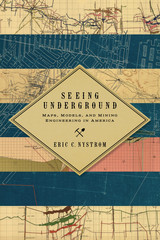 Seeing Underground: Maps, Models, and Mining Engineering in America
Eric C. Nystrom
University of Nevada Press, 2014 Digging mineral wealth from the ground dates to prehistoric times, and Europeans pursued mining in the Americas from the earliest colonial days. Prior to the Civil War, little mining was deep enough to require maps. However, the major finds of the mid-nineteenth century, such as the Comstock Lode, were vastly larger than any before in America. In Seeing Underground, Nystrom argues that, as industrial mining came of age in the United States, the development of maps and models gave power to a new visual culture and allowed mining engineers to advance their profession, gaining authority over mining operations from the miners themselves.
Starting in the late nineteenth century, mining engineers developed a new set of practices, artifacts, and discourses to visualize complex, pitch-dark three-dimensional spaces. These maps and models became necessary tools in creating and controlling those spaces. They made mining more understandable, predictable, and profitable. Nystrom shows that this new visual culture was crucial to specific developments in American mining, such as implementing new safety regulations after the Avondale, Pennsylvania fire of 1869 killed 110 men and boys; understanding complex geology, as in the rich ores of Butte, Montana; and settling high-stakes litigation, such as the Tonopah, Nevada, Jim Butler v. West End lawsuit, which reached the US Supreme Court.
Nystrom demonstrates that these neglected artifacts of the nineteenth and early twentieth centuries have much to teach us today. The development of a visual culture helped create a new professional class of mining engineers and changed how mining was done. Seeing Undergound is the winner of the 2015 Mining History Association’s Clark Spence Award for the best book on mining history.
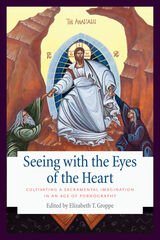 Seeing with the Eyes of the Heart: Cultivating a Sacramental Imagination in an Age of Pornography
Elizabeth T. Groppe
Catholic University of America Press, 2020 In an era in which the internet has made pornography readily accessible, Seeing with the Eyes of the Heart offers a theological critique of pornography and retrieves from the Christian tradition an alternative visual culture. This visual culture is constituted by both the character of the images we behold and the manner in which we see. Contributors include psychologists William M. Struthers and Jill Manning, who address the neurological effects of pornography and its influences on personal, familial, and social life. Their professional analysis is complemented by the testimony of a young man in recovery from pornography addiction. In an exposition of Christian visual culture, Orthodox iconographer Randi Sider-Rose describes the spiritual discipline of icon writing, Danielle M. Peters, S.T.D., surveys the iconography and art of Marian traditions, and art historian Dianne Phillips elucidates the meaning of divine desire as evident in Catholic visual culture of the late medieval and early modern periods. Catholic theologians Ann W. Astell, Nathanial Peters, Boyd Taylor Coolman, and Nicolas Ogle discuss specific practices and dimensions of the Catholic tradition that can contribute to the cultivation of sacramental vision, and David W. Fagerberg, Kimberly Hope Belcher, Jennifer Newsome Martin, and John C. Cavadini offer reflections on sacramental imagination and the healing of vision.
Seeing with the Eyes of the Heart is a work of scholarship composed with pastoral care and concern, and it will be serviceable to both classroom teachers and pastoral ministers. A special feature of the book is an inset of seventy-two full-color plates featuring both classic and contemporary works of Christian iconography and art. The essays and images invite readers to behold in beauty the truth that we are created by the triune God not for sexual objectification but with a sacramental vocation to deification through Christ and the Holy Spirit of love.
 Seeing Witness: Visuality and the Ethics of Testimony
Jane Blocker
University of Minnesota Press, 2009 Unearthing the meaning of witnessing in contemporary art and politics The act of bearing witness can reveal much, but what about the figure of the witness itself? As contemporary culture is increasingly dominated by surveillance, the witness—whether artist, historian, scientist, government official, or ordinary citizen—has become empowered in realms from art to politics. In Seeing Witness, Jane Blocker challenges the implicit authority of witnessing through the examination of a series of contemporary artworks, all of which make the act of witnessing visible, open to inspection and critique. Considering such artists as Marina Abramović, James Luna, Felix Gonzalez-Torres, Eduardo Kac, and Ann Hamilton, Blocker investigates the artists and spectators who look, the technologies they look with, and the forms of power and moral authority that permit their viewing. Going beyond particular traumatic or sensational events, Blocker contemplates the politics of witnessing and argues that the witness represents a morally unique—and even problematic—position of privilege. Separating Seeing Witness from previous literature on the subject, she finds that the visual is inherent in witnessing and asserts that contemporary art is integral to questioning and understanding how witnessing is mobilized in culture today.
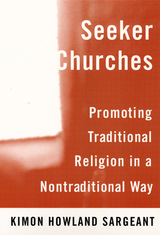 Seeker Churches: Promoting Traditional Religion in a Nontraditional Way
Kimon Howland Sargeant
Rutgers University Press, 2000 America’s religious landscape is in flux. New churches are springing up and many older churches are redefining themselves to survive. At the forefront of this denominational free-for-all are evangelical “seeker” churches. These churches target “seekers”—individuals of any faith or denominational background who seek spiritual fulfillment but are not currently affiliated with any specific church. By focusing on this largely untapped group, seeker churches have become one of the fastest-growing religious movements in the country. In his study, Kimon Sargeant provides a sociological context for the rise of these churches by exploring the rituals, messages, strategies, and denominational functions of this emerging form of American evangelical Protestantism.
Featuring live bands, professional lighting and sound systems, and multi-media presentations, seeker churches are attracting many people who have “dropped out” of organized religion. To broaden their appeal, they offer attenders advice on everyday issues ranging from relationships to finance. Sargeant focuses on the success of the Willow Creek Association, the seeker church association started by the Willow Creek Community Church near Chicago. With over 5,000 member churches, the seven-year old association has already outdistanced 90 percent of American denominations and is the leader of the seeker church movement. Through eyewitness accounts and careful research, Sargeant reveals the “seeker” movement to be a “reformation” of American Protestantism.
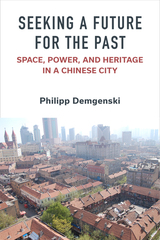 Seeking a Future for the Past: Space, Power, and Heritage in a Chinese City
Philipp Demgenski
University of Michigan Press, 2024 Seeking a Future for the Past: Space, Power, and Heritage in a Chinese City examines the complexities and changing sociopolitical dynamics of urban renewal in contemporary China. Drawing on ten years of ethnographic fieldwork in the northeastern Chinese city of Qingdao, the book tells the story of the slow, fragmented, and contentious transformation of Dabaodao—an area in the city’s former colonial center—from a place of common homes occupied by the urban poor into a showcase of architectural heritage and site for tourism and consumption. The ethnography provides a nuanced account of the diverse experiences and views of a range of groups involved in shaping, and being shaped, by the urban renewal process—local residents, migrant workers, preservationists, planners, and government officials—foregrounding the voices and experiences of marginal groups, such as migrants in the city. Unpacking structural reasons for urban developmental impasses, it paints a nuanced local picture of urban governance and political practice in contemporary urban China. Seeking a Future for the Past also weighs the positives and negatives of heritage preservation and scrutinizes the meanings and effects of “preservation” on diverse social actors. By zeroing in on the seemingly contradictory yet coexisting processes of urban stagnation and urban destruction, the book reveals the multifaceted challenges that China faces in reforming its urbanization practices and, ultimately, in managing its urban future.
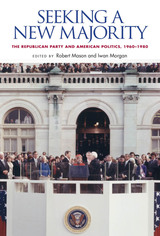 Seeking a New Majority: The Republican Party and American Politics, 1960-1980
Robert Mason
Vanderbilt University Press, 2013 The rise of the Republican Party from its mid-twentieth-century minority status between 1960 and 1980 had a profound impact on American politics that is still being felt in the second decade of the twenty-first century. The GOP would move to the right in its pursuit of electoral ascendancy, but considerable debate within the party surrounded this shift and its success was far from certain. Ultimately, however, this development would culminate in the transformational election of Ronald Reagan as president in 1980.
Seeking a New Majority assembles an international group of scholars to move beyond the ideas and activities of party leaders who have hitherto received the bulk of historical attention. It illuminates how the Republican Party expanded its regional base, especially in the South, appealed to new constituencies ranging from blue-collar workers to Christian fundamentalists, and enhanced the political appeal of conservatism. It also examines how Republicans engaged in a remarkable organizational and intellectual mobilization to challenge Democratic Party dominance--in search of a new majority.
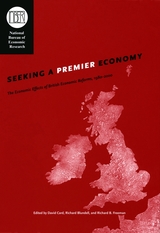 Seeking a Premier Economy: The Economic Effects of British Economic Reforms, 1980-2000
Edited by David Card, Richard Blundell, and Richard B. Freeman
University of Chicago Press, 2004 In the 1980s and 1990s successive United Kingdom governments enacted a series of reforms to establish a more market-oriented economy, closer to the American model and further away from its Western European competitors. Today, the United Kingdom is one of the least regulated economies in the world, marked by transformed welfare and industrial relations systems and broad privatization. Virtually every industry and government program has been affected by the reforms, from hospitals and schools to labor unions and jobless benefit programs.
Seeking a Premier Economy focuses on the labor and product market reforms that directly impacted productivity, employment, and inequality. The questions asked are provocative: How did the United Kingdom manage to stave off falling earnings for lower paid workers? What role did the reforms play in rising income inequality and trends in poverty? At the same time, what reforms also contributed to reduced unemployment and the accelerated growth of real wages? The comparative microeconomic approach of this book yields the most credible evaluation possible, focusing on closely associated outcomes of particular reforms for individuals, firms, and sectors.
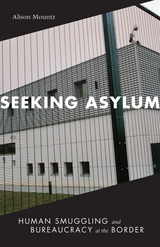 Seeking Asylum: Human Smuggling and Bureaucracy at the Border
Alison Mountz
University of Minnesota Press, 2010 In July 1999, Canadian authorities intercepted four boats off the coast of British Columbia carrying nearly six hundred Chinese citizens who were being smuggled into Canada. Government officials held the migrants on a Canadian naval base, which it designated a port of entry. As one official later recounted to the author, the Chinese migrants entered a legal limbo, treated as though they were walking through a long tunnel of bureaucracy to reach Canadian soil. The “long tunnel thesis” is the basis of Alison Mountz’s wide-ranging investigation into the power of states to change the relationship between geography and law as they negotiate border crossings. Mountz draws from many sources to argue that refugee-receiving states capitalize on crises generated by high-profile human smuggling events to implement restrictive measures designed to regulate migration. Whether states view themselves as powerful actors who can successfully exclude outsiders or as vulnerable actors in need of stronger policies to repel potential threats, they end up subverting access to human rights, altering laws, and extending power beyond their own borders. Using examples from Canada, Australia, and the United States, Mountz demonstrates the centrality of space and place in efforts to control the fate of unwanted migrants.
 Seeking Common Ground: Public Schools in a Diverse Society
David Tyack
Harvard University Press, 2003 The American republic will survive only if its citizens are educated--this was an article of faith of its founders. But seeking common civic ground in public schools has never been easy in a society where schoolchildren followed different religions, adhered to different cultural traditions, spoke many languages, and were identified as members of different "races."
In this wise and enlightening book, filled with vivid characters and memorable incidents that make history but don't always make history books, David Tyack describes how each American generation grappled with the knotty task of creating political unity and social diversity.
Seeking Common Ground illuminates puzzles about democracy in education and chronic conflicts that continue to make news. Americans mistrusted government, yet they entrusted the civic education of their children to public schools. American history textbooks were notoriously dull, but they were also highly controversial. Although the people liked local control of schools, educational experts called it "democracy gone to seed" and campaigned to "take the schools out of politics." Reformers argued about whether it was more democratic to teach all students the same subjects or to tailor curriculum to individuals. And what was the best way to "Americanize" immigrants, asked educators: by forced-fed assimilation or by honoring their ethnic heritages?
With a broad perspective and an eye for telling detail, Tyack lets us see that debates about the civic purposes of schools are an essential part of a democratic culture, and integral to its future.
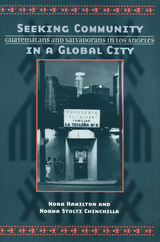 Seeking Community In Global City: Guatemalans & Salvadorans In Los Angeles
Nora Hamilton
Temple University Press, 2001 Driven by the pressures of poverty and civil strife at home, large numbers of Central Americans came to the Los Angeles area during the 1980's. Neither purely economic migrants, though they were in search of stable work, nor official refugees, although they carried the scars of war and persecution, Guatemalans and Salvadorans were even denied the aid given to refugees such as Cubans and Vietnamese. In addition, these immigrants sought refuge in a city undergoing massive economic and demographic shifts of its own. The result was -- and is -- a complex interaction that will help to reconceptualize the migration experience.
Based on twenty years of work with the Los Angeles Central American community and filled with facts, figures, and personal narratives, Seeking Community in a Global City presents this saga from many perspectives. The authors examine the forces in Central America that sent thousands of people streaming across international borders. They discuss economic, political, and demographic changes in the Los Angeles region and the difficulties the new immigrants faced in negotiating a new, urban environment. They look at family roles, networking, work strategies, and inter-ethnic relations. But they also consider policy issues and alliances, changing expectations, shifting priorities, and the reciprocal effect of the migrants and the city on each other.
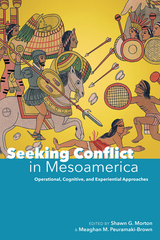 Seeking Conflict in Mesoamerica: Operational, Cognitive, and Experiential Approaches
Shawn G. Morton
University Press of Colorado, 2019 Seeking Conflict in Mesoamerica focuses on the conflicts of the ancient Maya, providing a holistic history of Maya hostilities and comparing them with those of neighboring Mesoamerican villages and towns. Contributors to the volume explore the varied stories of past Maya conflicts through artifacts, architecture, texts, and images left to posterity.
Many studies have focused on the degree to which the prevalence, nature, and conduct of conflict has varied across time and space. This volume focuses not only on such operational considerations but on cognitive and experiential issues, analyzing how the Maya understood and explained conflict, what they recognized as conflict, how conflict was experienced by various groups, and the circumstances surrounding conflict. By offering an emic (internal and subjective) understanding alongside the more commonly researched etic (external and objective) perspective, contributors clarify insufficiencies and address lapses in data and analysis. They explore how the Maya defined themselves within the realm of warfare and examine the root causes and effects of intergroup conflict.
Using case studies from a wide range of time periods, Seeking Conflict in Mesoamerica provides a basis for understanding hostilities and broadens the archaeological record for the “seeking” of conflict in a way that has been largely untouched by previous scholars. With broad theoretical reach beyond Mesoamerican archaeology, the book will have wide interdisciplinary appeal and will be important to ethnohistorians, art historians, ethnographers, epigraphers, and those interested in human conflict more broadly.
Contributors:
Matthew Abtosway, Karen Bassie-Sweet, George J. Bey III, M. Kathryn Brown, Allen J. Christenson, Tomás Gallareta Negrón, Elizabeth Graham, Helen R. Haines, Christopher L. Hernandez, Harri Kettunen, Rex Koontz, Geoffrey McCafferty, Jesper Nielsen, Joel W. Palka, Kerry L. Sagebiel, Travis W. Stanton, Alexandre Tokovinine
 Seeking Home: Marginalization and Representation in Appalachian Literature and Song
Leslie Harper Worthington
University of Tennessee Press, 2016 Appalachian people are frequently depicted as poorly educated whites who isolate themselves in mountain hollows. In Seeking Home, editors Leslie Harper Worthington and Jürgen E. Grandt turn that stereotype upside down by showcasing Appalachia’s ethnic diversity through a lively collection of essays discussing fiction, poetry, letters, and songs.
This distinct collection begins with a personal narrative in which Worthington relates how she discovered her own home through teaching Lee Smith’s Fair and Tender Ladies. Other essays range from the anticipated—Ron Rash, Barbara Kingsolver, Harriette Simpson Arnow—to the unanticipated—Charles Frazier’s magical realism, a Confederate soldier’s journals, and three different examinations of Affrilachian poets. Adding further texture to the collection are essays examining the diversity in Appalachian music, including Cherokee song and dance, a discussion of Appalachian mining songs, and an examination of recording technology and authenticity.
Seeking Home confirms that just as there are many Souths, there are also many Appalachias. The region is multifaceted, multicultural, and all we have to do is be willing to examine the variety.
LESLIE HARPER WORTHINGTON is the dean of Academic Programs and Services at Gadsden State Community College in Alabama. She is the author of Cormac McCarthy and the Ghost of Huck Finn. JÜRGEN E. GRANDT is an associate professor of English at the University of North Georgia. He is the author of Shaping Words to Fit the Soul: The Southern Ritual Grounds of Afro-Modernism and Kinds of Blue: The Jazz Aesthetic in African American Narrative.
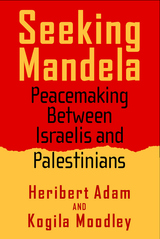 Seeking Mandela: Peacemaking Between Israelis And Palestinians
Heribert Adam and Kogila Moodley
Temple University Press, 2005 The ongoing violence, despair and paralysis among Israelis and Palestinians resemble the gloomy period in South Africa during the late 1980s. Heribert Adam and Kogila Moodley show that these analogies with South Africa can be applied to the Israeli-Palestinian conflict for two purposes: to showcase South Africa as an inspiring model for a negotiated settlement and to label Israel a "colonial settler state" that should be confronted with strategies (sanctions, boycotts) similar to those applied against the apartheid regime. Because of the different historical and socio-political contexts, both assumptions are problematic. Whereas peacemaking resulted in an inclusive democracy in South Africa, the favored solution for Israel and the West Bank is territorial separation into two states. Adam and Moodley speculate on what would have happened in the Middle East had there been what they call "a Palestinian Mandela" providing unifying moral and strategic leadership in the ethnic conflict. A timely, relevant look at the issues of a polarized struggle, Seeking Mandela is an original comparison of South Africa and Israel, as well as an important critique on the nature of comparative politics.
Seeking Peace in the Wake of War: Europe, 1943-1947
Edited by Stefan-Ludwig Hoffmann, Sandrine Kott, Peter Romijn, and Olivier Wieviorka
Amsterdam University Press, 2016 When the Second World War ended, Europe was in ruins. Yet, politically and socially, the years between 1943 and 1947 were a time of dramatic reconfigurations, which proved to be foundational for the making of today's Europe. This volume hones in on the crucial period from the beginning of the end of Nazi rule in Europe to the advent of the Cold War. Through a series of interrelated case studies that span the entire continent, it demonstrates how the everyday experiences of Europeans during these five years shaped the transition of their societies from war to peace. The authors explore these reconfigurations on different scales and levels -the local and regional, the ethnic and national, and the international - with the purpose of enhancing our understanding of how wars end.
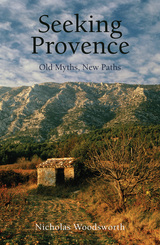 Seeking Provence: Old Myths, New Paths
Nicholas Woodsworth
Haus Publishing, 2016 A region steeped in fable and myth, Provence is a cultural crossroads of European history. A source of inspiration to artists, poets, and troubadours, it is now an enviable refuge for the wealthy and fashionable. Nicholas Woodsworth, who was born in Ottawa, Canada, married into a Provençal family and has lived in the region for decades. Lovingly recounting vivid details of life in Provence, he provides here a welcome antidote to the typical rosé-tinted, romantic view of it being a perennially sunny destination for tourists.
The true Provençaux have always lived a hard life close to the land and the rhythms of the seasons. And it is in the revelation and understanding of these lives, of the Provençal people, that the truths of the region are to be found. As much a study of Provençal culture and history as a memoir and travel book, this is a deep and soulful investigation into a way of life that remains very distinct from that of the rest of France.
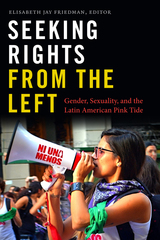 Seeking Rights from the Left: Gender, Sexuality, and the Latin American Pink Tide
Elisabeth Jay Friedman
Duke University Press, 2018 Seeking Rights from the Left offers a unique comparative assessment of left-leaning Latin American governments by examining their engagement with feminist, women's, and LGBT movements and issues. Focusing on the “Pink Tide” in eight national cases—Argentina, Bolivia, Brazil, Chile, Ecuador, Nicaragua, Uruguay, and Venezuela—the contributors evaluate how the Left addressed gender- and sexuality-based rights through the state. Most of these governments improved the basic conditions of poor women and their families. Many significantly advanced women's representation in national legislatures. Some legalized same-sex relationships and enabled their citizens to claim their own gender identity. They also opened opportunities for feminist and LGBT movements to press forward their demands. But at the same time, these governments have largely relied on heteropatriarchal relations of power, ignoring or rejecting the more challenging elements of a social agenda and engaging in strategic trade-offs among gender and sexual rights. Moreover, the comparative examination of such rights arenas reveals that the Left's more general political and economic projects have been profoundly, if at times unintentionally, informed by traditional understandings of gender and sexuality.
Contributors: Sonia E. Alvarez, María Constanza Diaz, Rachel Elfenbein, Elisabeth Jay Friedman, Niki Johnson, Victoria Keller, Edurne Larracoechea Bohigas, Amy Lind, Marlise Matos, Shawnna Mullenax, Ana Laura Rodríguez Gustá, Diego Sempol, Constanza Tabbush, Gwynn Thomas, Catalina Trebisacce, Annie Wilkinson
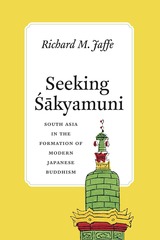 Seeking Sakyamuni: South Asia in the Formation of Modern Japanese Buddhism
Richard M. Jaffe
University of Chicago Press, 2019 Though fascinated with the land of their tradition’s birth, virtually no Japanese Buddhists visited the Indian subcontinent before the nineteenth century. In the richly illustrated Seeking Śākyamuni, Richard M. Jaffe reveals the experiences of the first Japanese Buddhists who traveled to South Asia in search of Buddhist knowledge beginning in 1873. Analyzing the impact of these voyages on Japanese conceptions of Buddhism, he argues that South Asia developed into a pivotal nexus for the development of twentieth-century Japanese Buddhism. Jaffe shows that Japan’s growing economic ties to the subcontinent following World War I fostered even more Japanese pilgrimage and study at Buddhism’s foundational sites. Tracking the Japanese travelers who returned home, as well as South Asians who visited Japan, Jaffe describes how the resulting flows of knowledge, personal connections, linguistic expertise, and material artifacts of South and Southeast Asian Buddhism instantiated the growing popular consciousness of Buddhism as a pan-Asian tradition—in the heart of Japan.
 Seeking Spatial Justice
Edward W. Soja
University of Minnesota Press, 2010 In 1996, the Los Angeles Bus Riders Union, a grassroots advocacy organization, won a historic legal victory against the city’s Metropolitan Transit Authority. The resulting consent decree forced the MTA for a period of ten years to essentially reorient the mass transit system to better serve the city’s poorest residents. A stunning reversal of conventional governance and planning in urban America, which almost always favors wealthier residents, this decision is also, for renowned urban theorist Edward W. Soja, a concrete example of spatial justice in action. In Seeking Spatial Justice, Soja argues that justice has a geography and that the equitable distribution of resources, services, and access is a basic human right. Building on current concerns in critical geography and the new spatial consciousness, Soja interweaves theory and practice, offering new ways of understanding and changing the unjust geographies in which we live. After tracing the evolution of spatial justice and the closely related notion of the right to the city in the influential work of Henri Lefebvre, David Harvey, and others, he demonstrates how these ideas are now being applied through a series of case studies in Los Angeles, the city at the forefront of this movement. Soja focuses on such innovative labor–community coalitions as Justice for Janitors, the Los Angeles Alliance for a New Economy, and the Right to the City Alliance; on struggles for rent control and environmental justice; and on the role that faculty and students in the UCLA Department of Urban Planning have played in both developing the theory of spatial justice and putting it into practice. Effectively locating spatial justice as a theoretical concept, a mode of empirical analysis, and a strategy for social and political action, this book makes a significant contribution to the contemporary debates about justice, space, and the city.
 Seeking the Best Master: State Ownership in the Varieties of Capitalism
Miklós Szanyi
Central European University Press, 2020 The economic crisis of 2008–2009 signaled the end of the Post-Washington Consensus on restricting the role of the state in economic and development policy. Since then, state ownership and state intervention have increased worldwide. This volume offers a comparative analysis of the evolution of direct state intervention in the economy through state-owned companies in Austria, Brazil, France, Germany, Hungary, Poland, Turkey, Singapore, and Slovenia. Each case study includes substantial explanations of historical, cultural, and institutional contexts. All the contributors point to the complex nature of the current revival in state economic interventions. The few models that are successful cannot hide the potential problems of excessive state intervention, linked to high levels of moral hazard. State-owned enterprises are primary tools of market and price manipulation for political purposes. They can be used outright for rent seeking. Yet state-owned enterprises can also play important roles in prestigious national initiatives, like major public works or high-profile social and sports events. The authors conclude that after the uniform application of democratic market economic principles, the 2000s witnessed a path-dependent departure from standard economic and political operating procedures in developed countries.
 Seeking The Center Place: Archaeology and Ancient Communities in the Mesa Verde Region
Edited by Mark D. Varien and Richard H. Wilshusen
University of Utah Press, 2016 The continuing work of the Crow Canyon Archaeological Center has focused on community life in the northern Southwest during the Great Pueblo period (AD 1150– 1300). Researchers have been able to demonstrate that during the last Puebloan occupation of the area the majority of the population lived in dispersed communities and large villages of the Great Sage Plain, rather than at nearby Mesa Verde. The work at Sand Canyon Pueblo and more than sixty other large contemporary pueblos has examined reasons for population aggregation and why this strategy was ultimately forsaken in favor of a migration south of the San Juan River, leaving the area depopulated by 1290. Contributors to this volume, many of whom are distinguished southwestern researchers, draw from a common database derived from extensive investigations at the 530-room Sand Canyon Pueblo, intensive test excavations at thirteen small sites and four large villages, a twenty-five square kilometer full-coverage survey, and an inventory of all known villages in the region. Topics include the context within which people moved into villages, how they dealt with climatic changes and increasing social conflict, and how they became increasingly isolated from the rest of the Southwest. Seeking the Center Place is the most detailed view we have ever had of the last Pueblo communities in the Mesa Verde region and will provide a better understanding of the factors that precipitated the migration of thousands of people.
 Seeking the Center: Politics and Policymaking at the New Century
Martin A. Levin, Marc K. Landy, and Martin Shapiro, Editors
Georgetown University Press, 2001 During the past decade, Democrats and Republicans each have received about fifty percent of the votes and controlled about half of the government, but this has not resulted in policy deadlock. Despite highly partisan political posturing, the policy regime has been largely moderate. Incremental, yet substantial, policy innovations such as welfare reform; deficit reduction; the North American Free Trade Agreement; and the deregulation of telecommunications, banking, and agriculture have been accompanied by such continuities as Social Security and Medicare, the maintenance of earlier immigration reforms, and the persistence of many rights-based policies, including federal affirmative action. In Seeking the Center, twenty-one contributors analyze policy outcomes in light of the frequent alternation in power among evenly divided parties. They show how the triumph of policy moderation and the defeat of more ambitious efforts, such as health care reform, can be explained by mutually supporting economic, intellectual, and political forces. Demonstrating that the determinants of public policy become clear by probing specific issues, rather than in abstract theorizing, they restore the politics of policymaking to the forefront of the political science agenda. A successor to Martin A. Levin and Marc K. Landy’s influential The New Politics of Public Policy (Johns Hopkins University Press, 1995), this book will be vital reading for advanced undergraduate and graduate students in political science and public policy, as well as a resource for scholars in both fields.
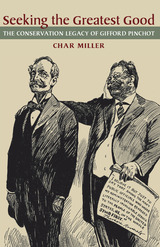 Seeking the Greatest Good: The Conservation Legacy of Gifford Pinchot
Char Miller
University of Pittsburgh Press, 2013 President John F. Kennedy officially dedicated the Pinchot Institute for Conservation Studies on September 24, 1963 to further the legacy and activism of conservationist Gifford Pinchot (1865–1946). Pinchot was the first chief of the United States Forest Service, appointed by Theodore Roosevelt in 1905. During his five-year term, he more than tripled the national forest reserves to 172 million acres. A pioneer in his field, Pinchot is widely regarded as one of the architects of American conservation and an adamant steward of natural resources for future generations.
Author Char Miller highlights many of the important contributions of the Pinchot Institute through its first fifty years of operation. As a union of the United States Forest Service and the Conservation Foundation, a private New York-based think tank, the institute was created to formulate policy and develop conservation education programs. Miller chronicles the institution’s founding, a donation of the Pinchot family, at its Grey Towers estate in Milford, Pennsylvania. He views the contributions of Pinchot family members, from the institute’s initial conception by Pinchot’s son, Gifford Bryce Pinchot, through the family’s ongoing participation in current conservation programming. Miller describes the institute’s unique fusion of policy makers, scientists, politicians, and activists to increase our understanding of and responses to urban and rural forestry, water quality, soil erosion, air pollution, endangered species, land management and planning, and hydraulic franking.
Miller explores such innovative programs as Common Waters, which works to protect the local Delaware River Basin as a drinking water source for millions; EcoMadera, which trains the residents of Cristobal Colón in Ecuador in conservation land management and sustainable wood processing; and the Forest Health-Human Health Initiative, which offers health-care credits to rural American landowners who maintain their carbon-capturing forestlands. Many of these individuals are age sixty-five or older and face daunting medical expenses that may force them to sell their land for timber.
Through these and countless other collaborative endeavors, the Pinchot Institute has continued to advance its namesake’s ambition to protect ecosystems for future generations and provide vital environmental services in an age of a burgeoning population and a disruptive climate.
 Seeking the One Great Remedy: Francis George Shaw and Nineteenth-Century Reform
Lorien Foote
Ohio University Press, 2003 A radical abolitionist and early feminist, Francis George Shaw (1809–1882) was a prominent figure in American reform and intellectual circles for five decades. He rejected capitalism in favor of a popular utopian socialist movement; during the Civil War and Reconstruction, he applied his radical principles to the Northern war effort and to freedmen’s organizations. A partnership with Henry George in the late 1870s provided an international audience for Shaw’s alternative vision of society. Seeking the One Great Remedy is the biography of this remarkable and influential man. In compelling detail, author Lorien Foote depicts the many aspects and exploits of the Shaw family. Their activities provide a perspective on the course of American reform that calls into question previous interpretations of the reform movement of this period. Francis George Shaw is perhaps best known as the father of Robert Gould Shaw, subject of the movie Glory. Francis and his wife, Sarah Blake Shaw, achieved considerable notoriety for their activities, including their effort to shape public opinion during the Civil War. Turning the tragic death of their son into a public relations and propaganda triumph, they altered Northern opinion about the war and shaped a historical perception of the famous Massachusetts Fifty-fourth that continues today. Seeking the One Great Remedy argues that social radicalism was pervasive among elite reformers before and after the Civil War and finds in the dramatic story of Francis George Shaw a model of that cause.
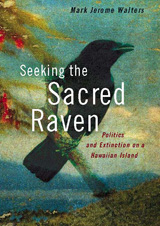 Seeking the Sacred Raven: Politics and Extinction on a Hawaiian Island
Mark Jerome Walters
Island Press, 2006 Will the 'Alala ever return to the wild? A bird sacred to Hawaiians and a member of the raven family, the 'Alala today survives only in captivity. How the species once flourished, how it has been driven to near-extinction, and how people struggled to save it, is the gripping story of Seeking the Sacred Raven.
For years, author Mark Jerome Walters has tracked the sacred bird's role in Hawaiian culture and the indomitable 'Alala's sad decline. Trekking through Hawaii's rain forests high on Mauna Loa, talking with biologists, landowners, and government officials, he has woven an epic tale of missed opportunities and the best intentions gone awry. A species that once numbered in the thousands is now limited to about 50 captive birds.
Seeking the Sacred Raven is as much about people and culture as it is about failed policies. From the ancient Polynesians who first settled the island, to Captain Cook in the 18th century, to would-be saviors of the 'Alala in the 1990s, individuals with conflicting passions and priorities have shaped Hawaii and the fate of this dwindling cloud-forest species.
Walters captures brilliantly the internecine politics among private landowners, scientists, environmental groups, individuals and government agencies battling over the bird's habitat and protection. It's only one species, only one bird, but Seeking the Sacred Raven illustrates vividly the many dimensions of species loss, for the human as well as non-human world.
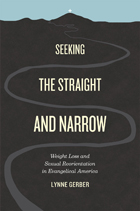 Seeking the Straight and Narrow: Weight Loss and Sexual Reorientation in Evangelical America
Lynne Gerber
University of Chicago Press, 2011 Losing weight and changing your sexual orientation are both notoriously difficult to do successfully. Yet many faithful evangelical Christians believe that thinness and heterosexuality are godly ideals—and that God will provide reliable paths toward them for those who fall short. Seeking the Straight and Narrow is a fascinating account of the world of evangelical efforts to alter our strongest bodily desires. Drawing on fieldwork at First Place, a popular Christian weight-loss program, and Exodus International, a network of ex-gay ministries, Lynne Gerber explores why some Christians feel that being fat or gay offends God, what exactly they do to lose weight or go straight, and how they make sense of the program’s results—or, frequently, their lack. Gerber notes the differences and striking parallels between the two programs, and, more broadly, she traces the ways that other social institutions have attempted to contain the excesses associated with fatness and homosexuality. Challenging narratives that place evangelicals in constant opposition to dominant American values, Gerber shows that these programs reflect the often overlooked connection between American cultural obsessions and Christian ones.
Seeking the Truth
Richard Reinsch II
Catholic University of America Press, 2016 This anthology of essays from the great nineteenth-century thinker Orestes A. Brownson will engage the reader with key writings from one of the most compelling American Catholic intellectuals. Brownson was a spiritual seeker who migrated through Presbyterianism, Universalism, skepticism, Unitarianism, and Transcendentalist thought, and finally at age 41 to Catholicism. Politically he found himself anticipating socialism in the 1830s, then, turning into a disciple of John Calhoun's states rights constitutionalism, and later he incorporated his criticisms of mass democracy into a unique philosophical defense of the Constitution that emerged in full bloom during the Civil War.
 Seeming and Being in Plato’s Rhetorical Theory
Robin Reames
University of Chicago Press, 2018 The widespread understanding of language in the West is that it represents the world. This view, however, has not always been commonplace. In fact, it is a theory of language conceived by Plato, culminating in The Sophist. In that dialogue Plato introduced the idea of statements as being either true or false, where the distinction between falsity and truth rests on a deeper discrepancy between appearance and reality, or seeming and being.
Robin Reames’s Seeming & Being in Plato’s Rhetorical Theory marks a shift in Plato scholarship. Reames argues that an appropriate understanding of rhetorical theory in Plato’s dialogues illuminates how he developed the technical vocabulary needed to construct the very distinctions between seeming and being that separate true from false speech. By engaging with three key movements of twentieth- and twenty-first-century Plato scholarship—the rise and subsequent marginalization of “orality and literacy theory,” Heidegger’s controversial critique of Platonist metaphysics, and the influence of literary or dramatic readings of the dialogues—Reames demonstrates how the development of Plato’s rhetorical theory across several of his dialogues (Gorgias, Phaedrus, Protagoras, Theaetetus, Cratylus, Republic, and Sophist) has been both neglected and misunderstood.
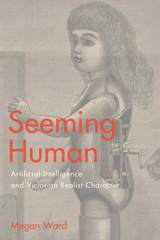 Seeming Human: Artificial Intelligence and Victorian Realist Character
Megan Ward
Ohio State University Press, 2018 Seeming Human: Artificial Intelligence and Victorian Realist Character offers a new theory of realist character through character’s unexpected afterlife: the intelligent machine. The book contends that mid-twentieth-century versions of artificial intelligence (AI) offer a theory of verisimilitude omitted by traditional histories of character, which often focus on the development of interiority and the shift from “flat” to “round” characters in the Victorian era. Instead, by reading character through AI, Megan Ward’s Seeming Human argues that routinization, predictability, automation, and even flatness are all features of realist characters.
Early artificial intelligence movements such as cybernetics, information theory, and the Turing test define ways of seeming—rather than being—human. Using these theories of verisimilitude to read Victorian novelists such as Elizabeth Gaskell, Margaret Oliphant, Anthony Trollope, Thomas Hardy, and Henry James, Seeming Human argues that mechanicity has been perceived as anti-realist because it is the element that we least want to identify as human. Because AI produces human-like intelligence, it makes clear that we must actually turn to machines in order to understand what makes realist characters seem so human.
Seems Like Murder Here: Southern Violence and the Blues Tradition
Adam Gussow
University of Chicago Press, 2002 Winner of the 2004 C. Hugh Holman Award from the Society for the Study of Southern Literature.
Seems Like Murder Here offers a revealing new account of the blues tradition. Far from mere laments about lost loves and hard times, the blues emerge in this provocative study as vital responses to spectacle lynchings and the violent realities of African American life in the Jim Crow South. With brilliant interpretations of both classic songs and literary works, from the autobiographies of W. C. Handy, David Honeyboy Edwards, and B. B. King to the poetry of Langston Hughes and the novels of Zora Neale Hurston, Seems Like Murder Here will transform our understanding of the blues and its enduring power.
Segregating Cities: An Arnold R. Hirsch Reader
Arnold R. Hirsch
University of Chicago Press Collects critical essays by the author of Making the Second Ghetto.
Arnold R. Hirsch (1949–2018) was one of the preeminent urban historians of his generation, a reputation cemented by his landmark book, Making the Second Ghetto. With compelling clarity, Hirsch demonstrated that segregation is not the inevitable result of individual choices, natural tendencies, or cultural traits—it is a structural phenomenon, reinforced on every level by state power.
Segregating Cities collects the author’s key essays, some previously unpublished, to reveal a more complete picture of a remarkable scholar and his exploration of race, place, politics, and policy in the twentieth-century American city. Together, these essays can help us see segregation for what it is, so that we can then begin to truly work to overcome it.
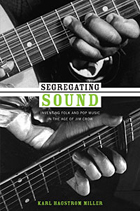 Segregating Sound: Inventing Folk and Pop Music in the Age of Jim Crow
Karl Hagstrom Miller
Duke University Press, 2010 In Segregating Sound, Karl Hagstrom Miller argues that the categories that we have inherited to think and talk about southern music bear little relation to the ways that southerners long played and heard music. Focusing on the late nineteenth century and the early twentieth, Miller chronicles how southern music—a fluid complex of sounds and styles in practice—was reduced to a series of distinct genres linked to particular racial and ethnic identities. The blues were African American. Rural white southerners played country music. By the 1920s, these depictions were touted in folk song collections and the catalogs of “race” and “hillbilly” records produced by the phonograph industry. Such links among race, region, and music were new. Black and white artists alike had played not only blues, ballads, ragtime, and string band music, but also nationally popular sentimental ballads, minstrel songs, Tin Pan Alley tunes, and Broadway hits. In a cultural history filled with musicians, listeners, scholars, and business people, Miller describes how folklore studies and the music industry helped to create a “musical color line,” a cultural parallel to the physical color line that came to define the Jim Crow South. Segregated sound emerged slowly through the interactions of southern and northern musicians, record companies that sought to penetrate new markets across the South and the globe, and academic folklorists who attempted to tap southern music for evidence about the history of human civilization. Contending that people’s musical worlds were defined less by who they were than by the music that they heard, Miller challenges assumptions about the relation of race, music, and the market.
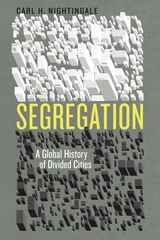 Segregation: A Global History of Divided Cities
Carl H. Nightingale
University of Chicago Press, 2012 When we think of segregation, what often comes to mind is apartheid South Africa, or the American South in the age of Jim Crow—two societies fundamentally premised on the concept of the separation of the races. But as Carl H. Nightingale shows us in this magisterial history, segregation is everywhere, deforming cities and societies worldwide.
Starting with segregation’s ancient roots, and what the archaeological evidence reveals about humanity’s long-standing use of urban divisions to reinforce political and economic inequality, Nightingale then moves to the world of European colonialism. It was there, he shows, segregation based on color—and eventually on race—took hold; the British East India Company, for example, split Calcutta into “White Town” and “Black Town.” As we follow Nightingale’s story around the globe, we see that division replicated from Hong Kong to Nairobi, Baltimore to San Francisco, and more. The turn of the twentieth century saw the most aggressive segregation movements yet, as white communities almost everywhere set to rearranging whole cities along racial lines. Nightingale focuses closely on two striking examples: Johannesburg, with its state-sponsored separation, and Chicago, in which the goal of segregation was advanced by the more subtle methods of real estate markets and housing policy.
For the first time ever, the majority of humans live in cities, and nearly all those cities bear the scars of segregation. This unprecedented, ambitious history lays bare our troubled past, and sets us on the path to imagining the better, more equal cities of the future.
 Segregation and Resistance in the Landscapes of the Americas
Eric Avila and Thaïsa Way
Harvard University Press Histories of racial segregation and its impacts have been the focus of urban research for over a century, and yet the role of space, place, and land in these narratives has been largely overlooked. How have land use policies and land access shaped the experience of place? What markings have made evident the lived experience of segregation and its impacts? And how have individuals and communities resisted segregation in their own efforts to make place? With a focus on the Americas, the essays in this volume move across time and space to ask questions about place-making and community building. They explore landscapes and their hidden struggles between segregation and resistance. Drawing upon the collective work of the “Segregation and Resistance in America’s Urban Landscapes” symposium organized by Dumbarton Oaks in 2020, these histories of segregation and resistance consider how cultural and spatial practices of separation, identity, response, and revolt are shaped by place and, in turn, inform practices of place-making.
|
|



